- South America
- 11 Reasons Why You Should...

11 Reasons Why You Should Visit Cusco At Least Once in Your Lifetime

The once famed capital of the Inca empire and now Peru’s most popular destination city, there is no shortage of things to do and see in Cusco. Built on Inca construction and history, then conquered and remodeled by the Spanish, Cusco is unlike any other city in the world. From the streets and architecture to the people and their clothing, here is why you need to make Cusco your number one travel destination.
In Cusco , ruins abound almost everywhere you go. Only a short walk from the Plaza de Armas is the temple of the sun, which was once covered in gold before the Spanish conquest, and overlooking the plaza is the giant fortress ruins of Sacsayhuaman. You don’t even have to leave Cusco to find more than a day’s worth of ruins to explore.

Take a hike up from the city to the top of the valley and gaze out at the beauty and wonder of Cusco. From the mirador at Sacsayhuaman ruins you’ll be able to catch a glimpse of the holy mountain (Apu) Ausangate, which looms large in the backdrop.

Clothing style
Cusquenos are a very proud people, descendants of the Incas . Within the city you’ll find a mix of styles , ranging from the traditional to the modern and everywhere else in between – a combination only found in Cusco .

The architecture
Walking around Cusco feels as though you’re in a time warp, especially in the Plaza de Armas. Here the buildings will have Inca foundations, evinced by the finely laid rocks, with colonial architectural finishes – something you’ll only find in Cusco. There are also magnificent churches made of stones from destroyed Inca temples.

The narrow streets
One thing you’ll notice walking around – especially for Americans – are the small, narrow cobble-stoned streets throughout the city. There’s no way large, American pickup trucks can safely navigate through these Inca-made streets. The narrow streets and corridors are one of the defining characteristics of Inca city planning.

Plaza de Armas
In a country filled with beautiful plazas, Cusco’s might just be Peru’s finest – which is saying a lot. The plaza is surrounded by colonial style buildings, many with Inca rock foundations, and is anchored by two stunning churches. Grab an Inca Cola, sit in the plaza and soak up the beauty.

The history
The city of Cusco was once the capital of the Inca empire and considered the center of the universe. It was the home of emperors and its rich cultural history is still palpable as you walk its streets.

Llamas and alpacas
Where else in the world do llamas and alpaca just run wild in a major city? While not exactly running wild – they’re usually on a leash – you’ll find these fluffy animals everywhere. No longer beasts of burden, the llamas on the streets of Cusco have become props for tourists’ photos.

The culture
The culture of Cusco is a mix of Spanish-Peruvian and Andean-Peruvian traditions. This confluence is no better represented than the famous painting of the last supper, with a cuy (guinea pig) as the main dish on the table. Christian and Inca beliefs merge and live side by side.

Being so close to the jungle, Cusco has no shortage of fresh fruit and vegetables to choose from as well as its traditional foods like alpaca and cuy. Chomp down on an alpaca burger, pick at the Andean delicacy that is cuy or try your luck with Cusco’s ceviche, which uses fresh water fish.

The shopping
Shop. Shop. And shop. Cusco is souvenir heaven with no shortage of cute trinkets and beautiful textiles to take back home to family and friends. Cusco is also home to plenty of alpaca and even Vicuna products for about a third of the price you’ll find them back home. Make sure to carve out at least two days just for shopping.

Since you are here, we would like to share our vision for the future of travel - and the direction Culture Trip is moving in.
Culture Trip launched in 2011 with a simple yet passionate mission: to inspire people to go beyond their boundaries and experience what makes a place, its people and its culture special and meaningful — and this is still in our DNA today. We are proud that, for more than a decade, millions like you have trusted our award-winning recommendations by people who deeply understand what makes certain places and communities so special.
Increasingly we believe the world needs more meaningful, real-life connections between curious travellers keen to explore the world in a more responsible way. That is why we have intensively curated a collection of premium small-group trips as an invitation to meet and connect with new, like-minded people for once-in-a-lifetime experiences in three categories: Culture Trips, Rail Trips and Private Trips. Our Trips are suitable for both solo travelers, couples and friends who want to explore the world together.
Culture Trips are deeply immersive 5 to 16 days itineraries, that combine authentic local experiences, exciting activities and 4-5* accommodation to look forward to at the end of each day. Our Rail Trips are our most planet-friendly itineraries that invite you to take the scenic route, relax whilst getting under the skin of a destination. Our Private Trips are fully tailored itineraries, curated by our Travel Experts specifically for you, your friends or your family.
We know that many of you worry about the environmental impact of travel and are looking for ways of expanding horizons in ways that do minimal harm - and may even bring benefits. We are committed to go as far as possible in curating our trips with care for the planet. That is why all of our trips are flightless in destination, fully carbon offset - and we have ambitious plans to be net zero in the very near future.

Guides & Tips
The best group trips to take with your family.

Food & Drink
How to host a peruvian-themed dinner party.

Places to Stay
The best luxury resorts to book in peru.

See & Do
A visual journey through the peruvian amazon.

The World's Most Dramatic Cliffside Hotels

How to Make Authentic Peruvian Ceviche According to a Local Cordon Bleu Chef

Where To Spot Peru’s Brightest Turquoise Lakes

Stay Curious: Experience Peru From Your Living Room

The Coolest Train Carriages in the World

How To Make Peru's Ají de Gallina According to a Local Le Cordon Bleu Chef

Incredible Places To Glamp in the Sacred Valley

Customer Review - ‘Peru had been on my bucket list for decades’
Culture trip spring sale, save up to $1,100 on our unique small-group trips limited spots..

- Post ID: 1642488
- Sponsored? No
- View Payload
Are you sure you want to close the session?
La cuenta ya se encuentra activa
Or enter your e-mail:
Recover your offer
We will send you a 4-digit code shortly
Enter the 4-digit code and your new password
Enter your search here
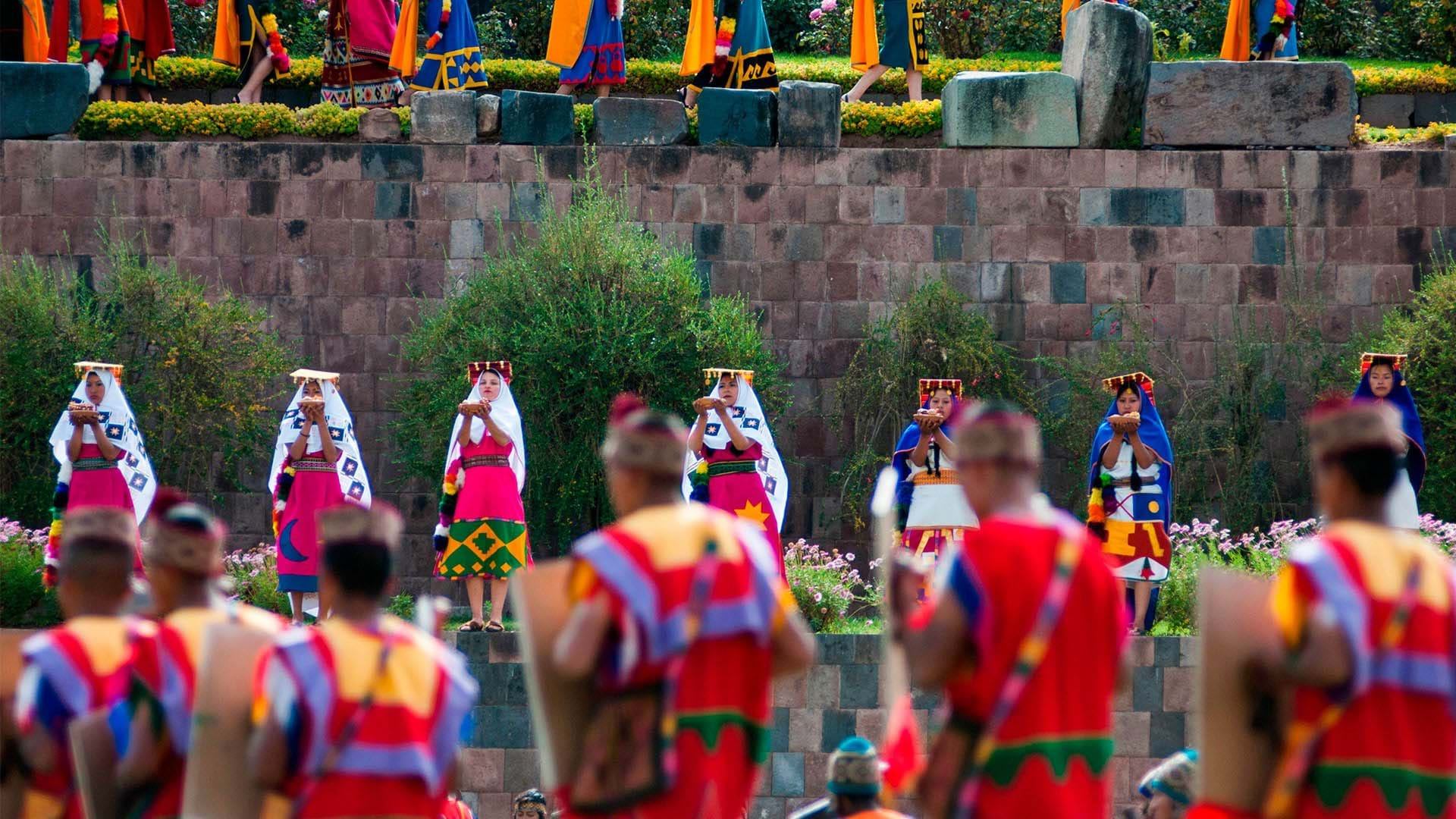
Living empire
Festival of Inti Raymi, Temple of Qorikancha Credit: Heinz Plenge Pardo / PromPerú
- Destinations
In Cusco, every corner is filled with history, as the ancient capital of Peru (during the Inca Empire) still preserves remnants of the most important power of this ancient civilization.
The ancient history can be felt in every step you take through the streets of its towns, which seem to have stopped in time. Its cities are riddled with so much mysticism that you will not want to leave. And if you have to depart, there will always be a burning desire inside you to return as soon as possible.
The first step is to arrive in Cusco. The easiest way? By flight. Due to the high demand from tourists, it was impossible not to have an international airport in Cusco, although most flights have to pass through Lima before reaching the imperial city. It takes approximately one hour and 15 minutes from the Peruvian capital to reach the chosen destination.
Once you are in Cusco, all you need to do is organize your time in the best way possible to explore as many attractions and experiences as you can imagine. Do you like mountaineering? A trip to Ausangate, also known as the sacred mountain, will satisfy your need to release that accumulated energy. Are you a nature lover? Do not miss a visit to the Sacred Valley, which features towns that seem to have come out of the most creative fables you can imagine. Do you melt for animals? Yes, there is also room for wildlife enthusiasts: Awanakancha, the only interpretation center of South American camelids, is located in Cusco.
The Cusco jewel
However, this journey will not be complete if you do not embrace the Inka spirit. Yes, we are talking about a visit to one of the New 7 Wonders of the World, the great jewel of Cusco and Peru: the imposing, revered, and ostentatious Historic Sanctuary of Machupicchu , the final and starting point for every tourist visiting Cusco. This cultural and natural heritage of humanity was one of the most important religious, cultural, and political centers of the Inca Empire, and those who visit it agree that it exudes a unique energy.
Trekking enthusiasts must visit Huayna Picchu , Sacsayhuaman, Vinicunca, Urubamba, Choquequirao , Humantay Lagoon, Ollantaytambo, and the Inca Trail. The options for tourism in Cusco are endless. Even within the city itself, there are countless activities and attractions to discover, you can start getting to know a bit of Cusco's history with a walk through its Historic Center or the Andean Baroque route, where you can admire buildings with the ancient colonial touch.
Museums are a favorite space for visitors, and one that you must not miss is the Temple of the Sun (Qorikancha). Besides, be amazed by the Twelve-Angled Stone or marvel at the art of the artisans in the San Blas neighborhood. A visit to the colorful San Pedro Market can give you an insight into the idiosyncrasy of the people of Cusco.
So, if you are an adventurer, do not hesitate: Cusco awaits you with open arms. In addition, even if you do not have that wild spirit, Cusco is still for you: the city offers hotels and restaurants with the highest quality standards, catering to the requirements of the most demanding travelers. Make your decision now, Cusco is ready to welcome you.

How to get to Cusco?
Lima - Cusco
By air: 1 h 15 min approximately
Overland: 26 h approximately
Main Attractions
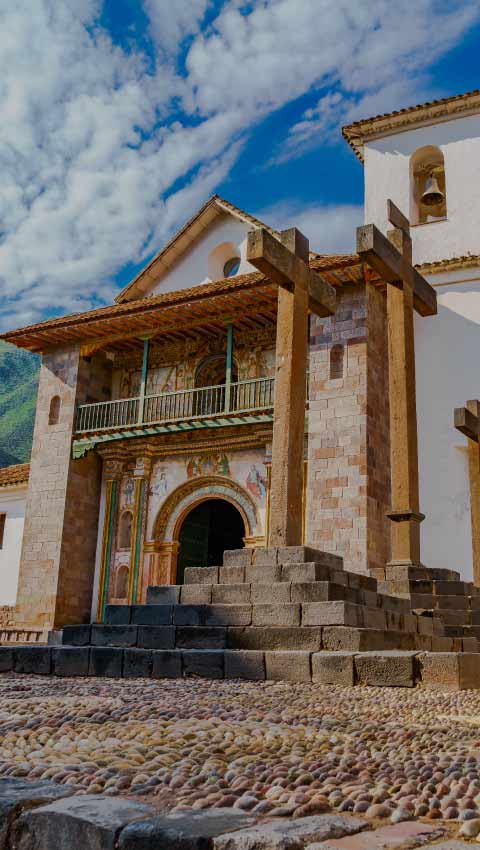
Andahuaylillas
Home to “The Sistine Chapel of the Americas”
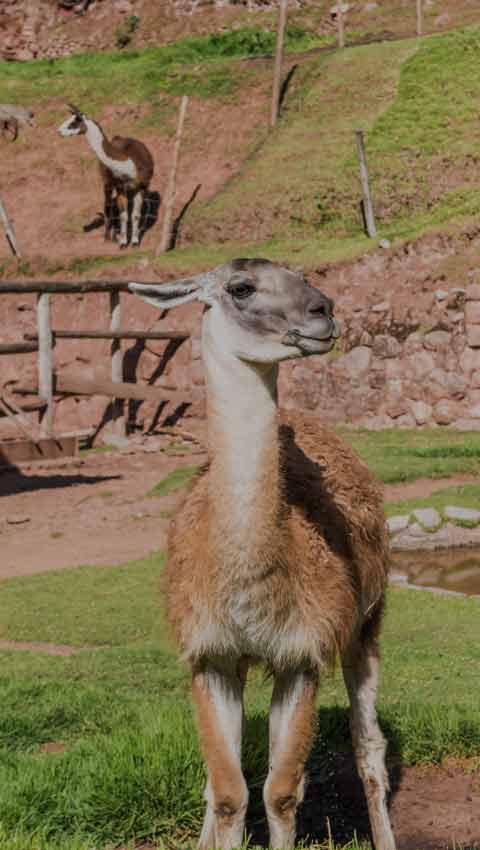
Awanacancha
The only South American camelid theme park
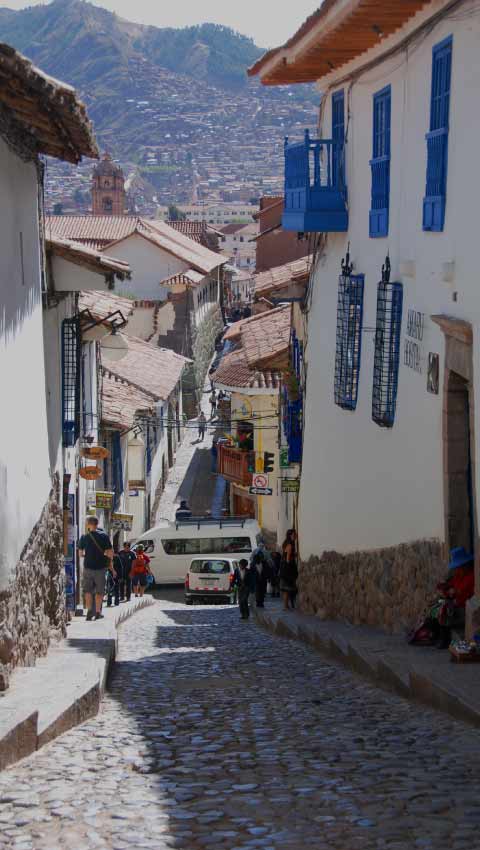
San Blas neighborhood
Craftspeople from a different time
Experiences in Cusco
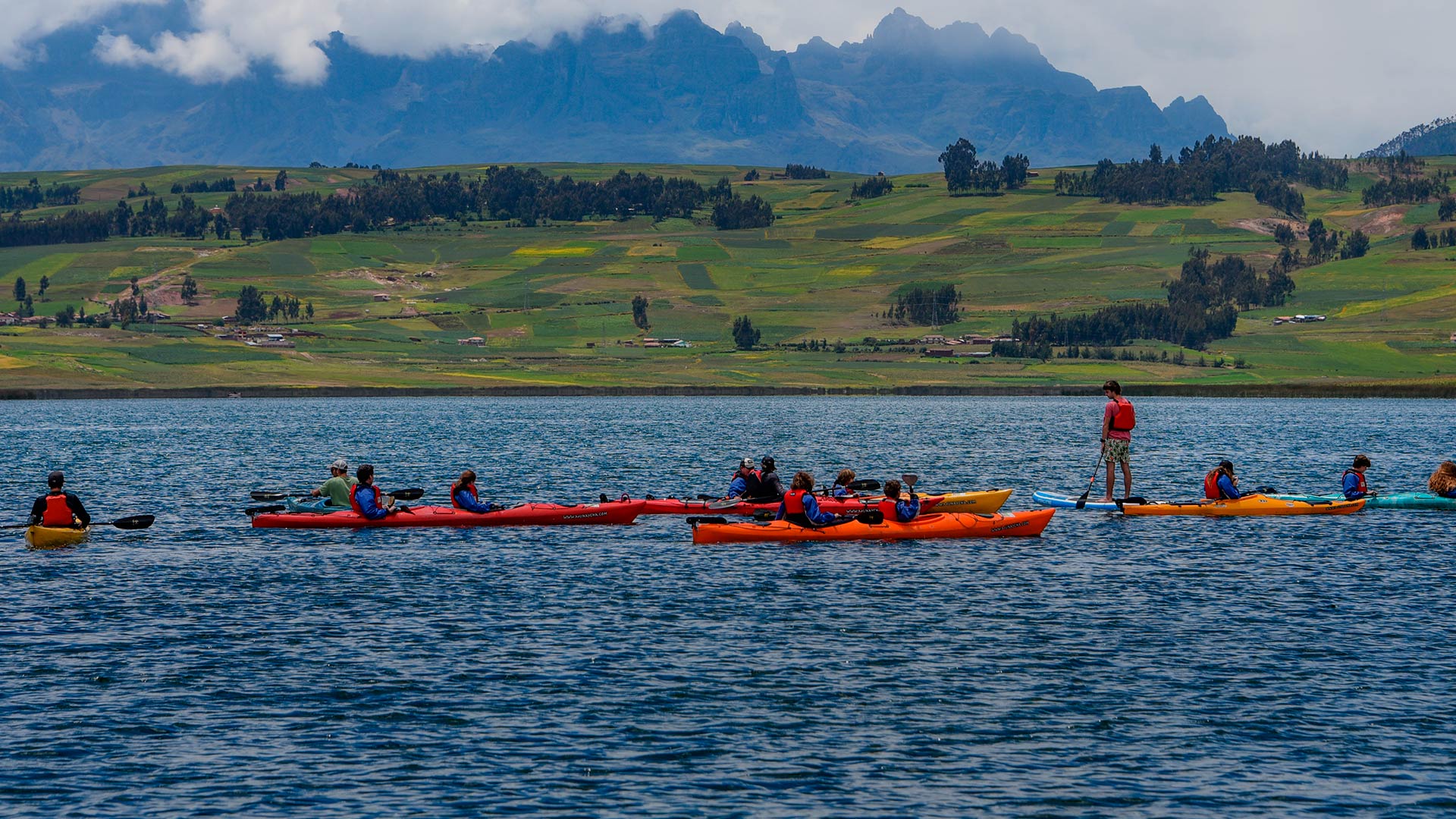
Sporting activities in Cusco
Exercise in ancestral lands
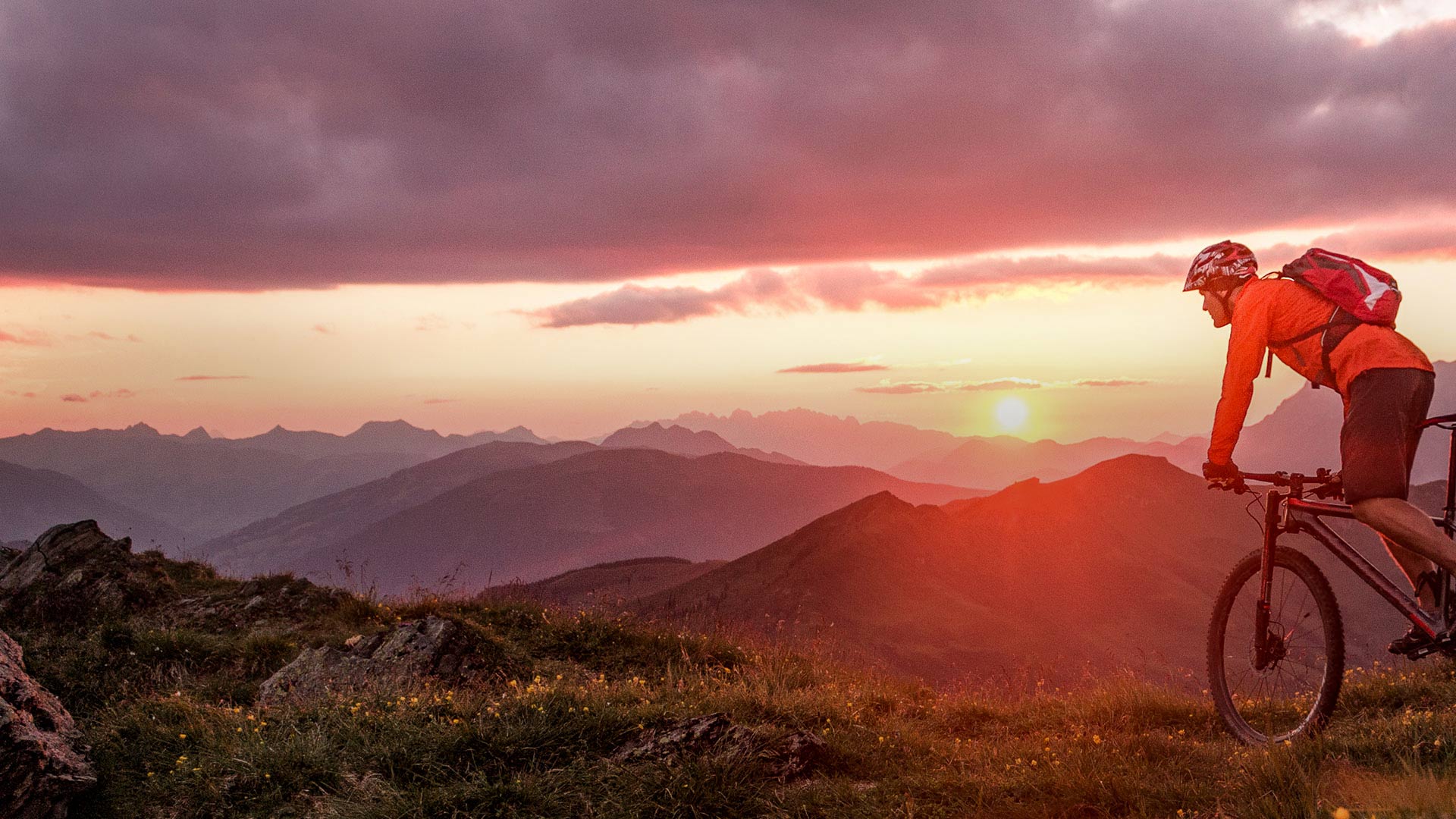
Mountain biking in Maras and Moray
Following the path of adventure
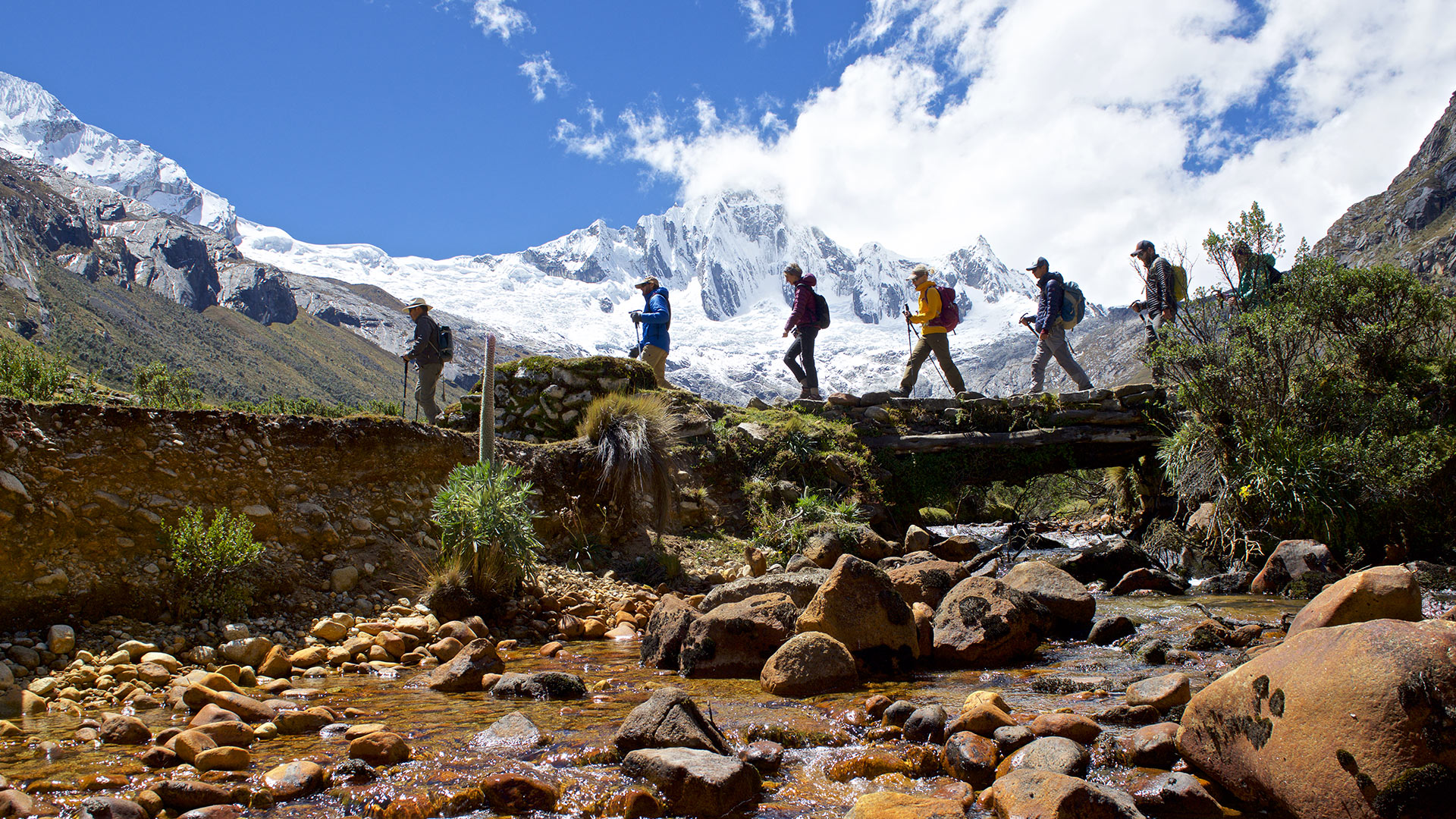
Trekking routes tour
Exploring Peru’s trails
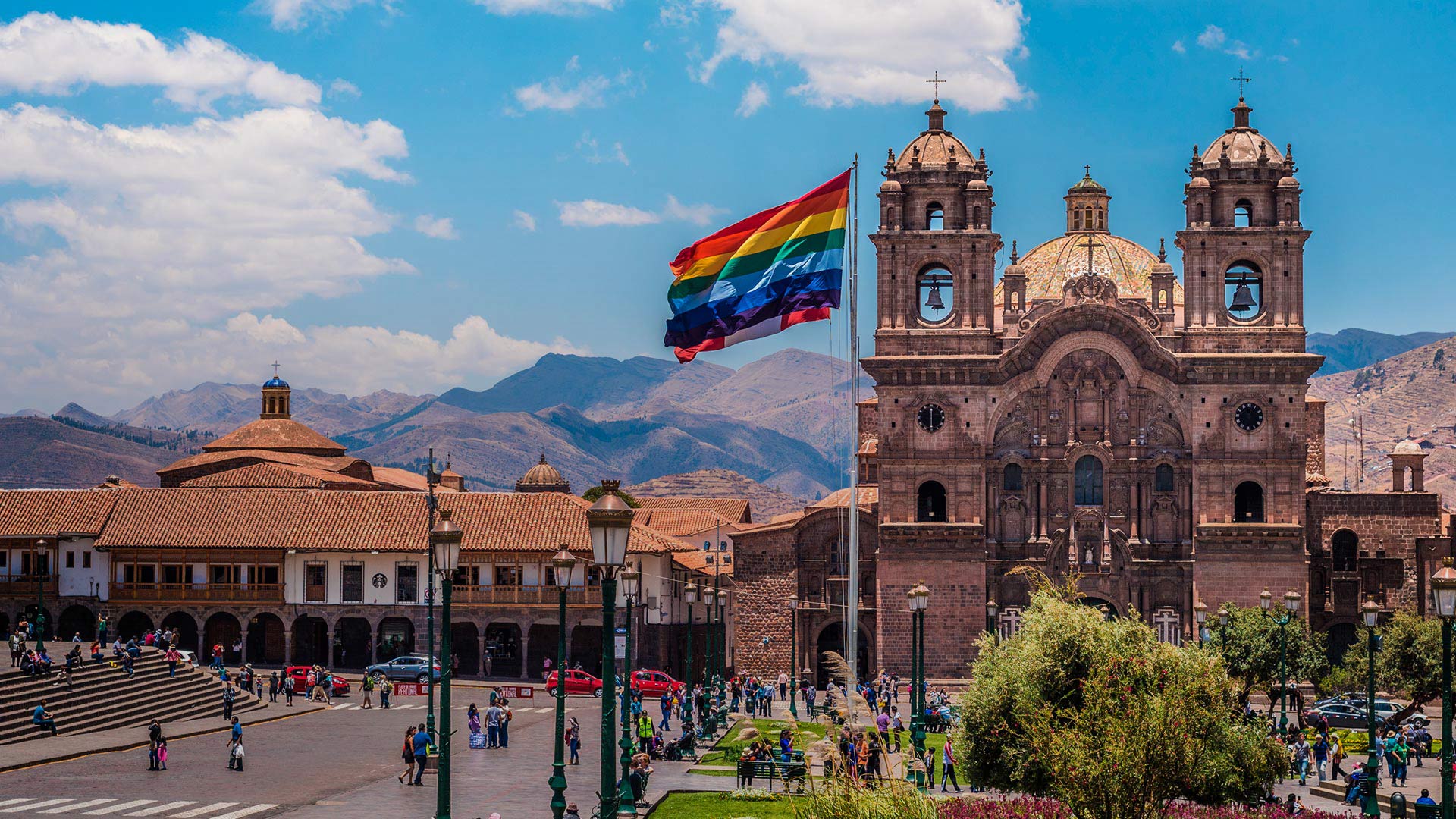
City tour in Cusco’s historic center
Visit the magical sights of the imperial city
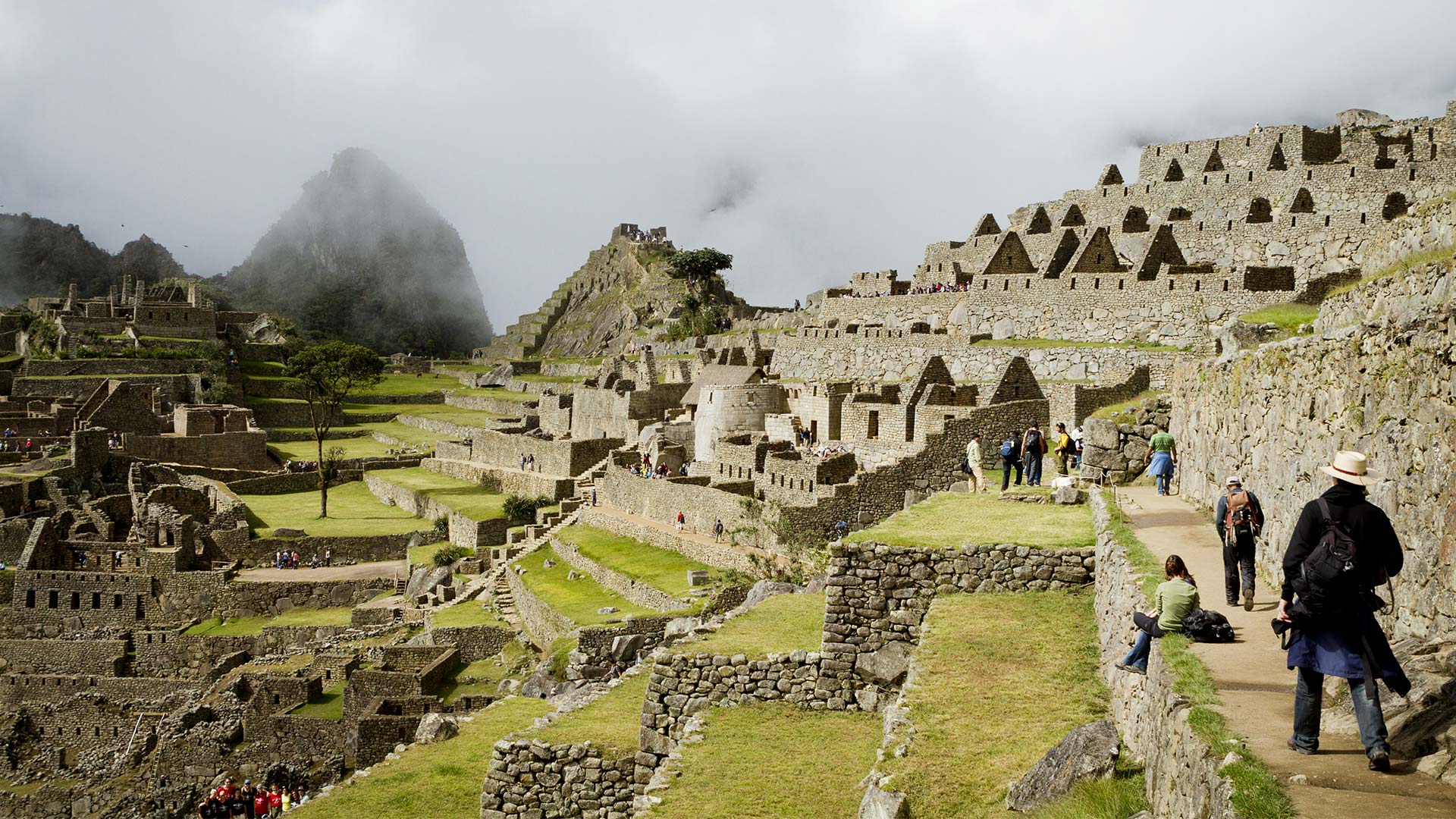
Tour of Cusco and Machu Picchu
See Cusco and Machu Picchu at the same time
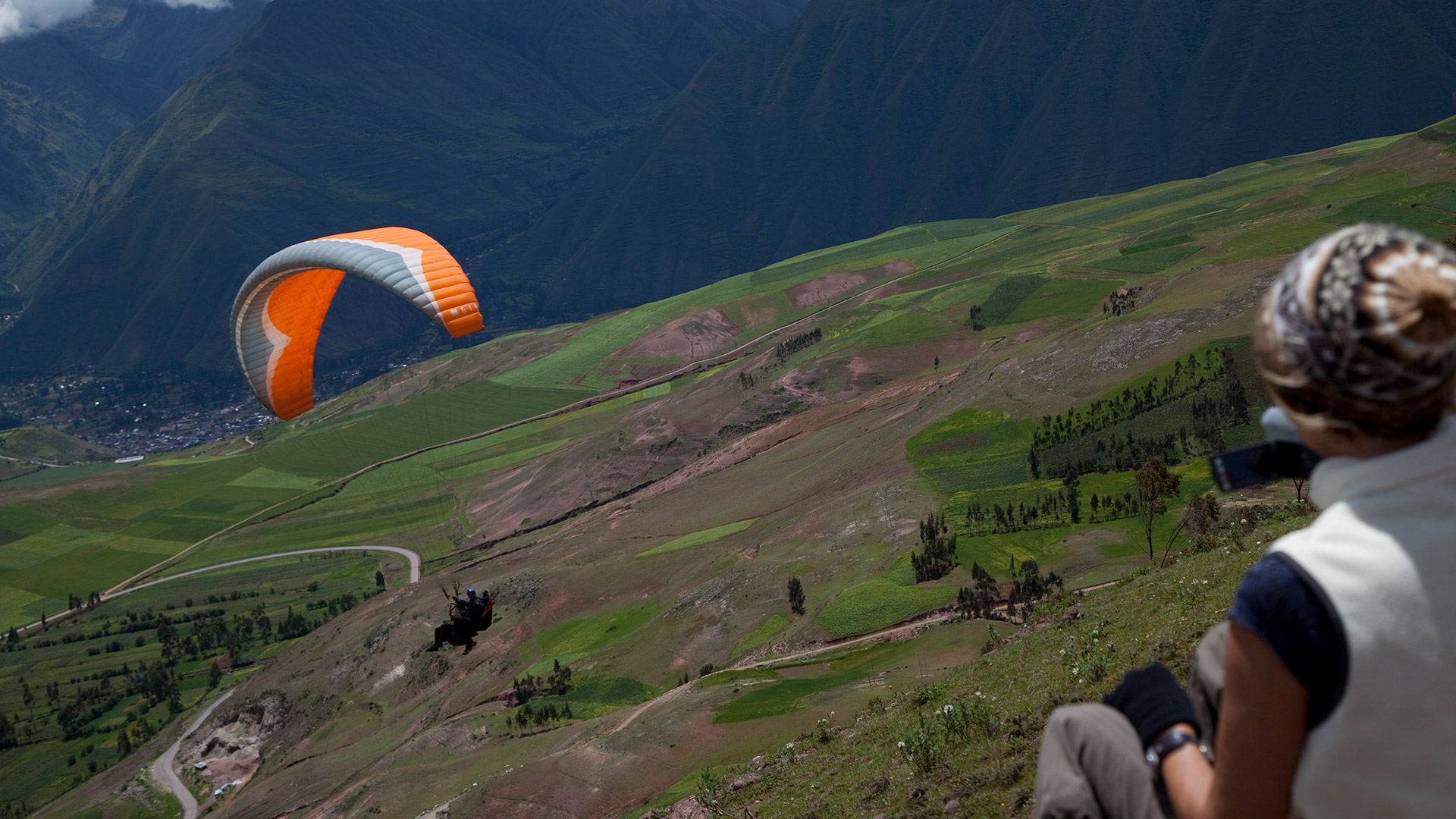
Explore the Sacred Valley
Paragliding in the Sacred Valley
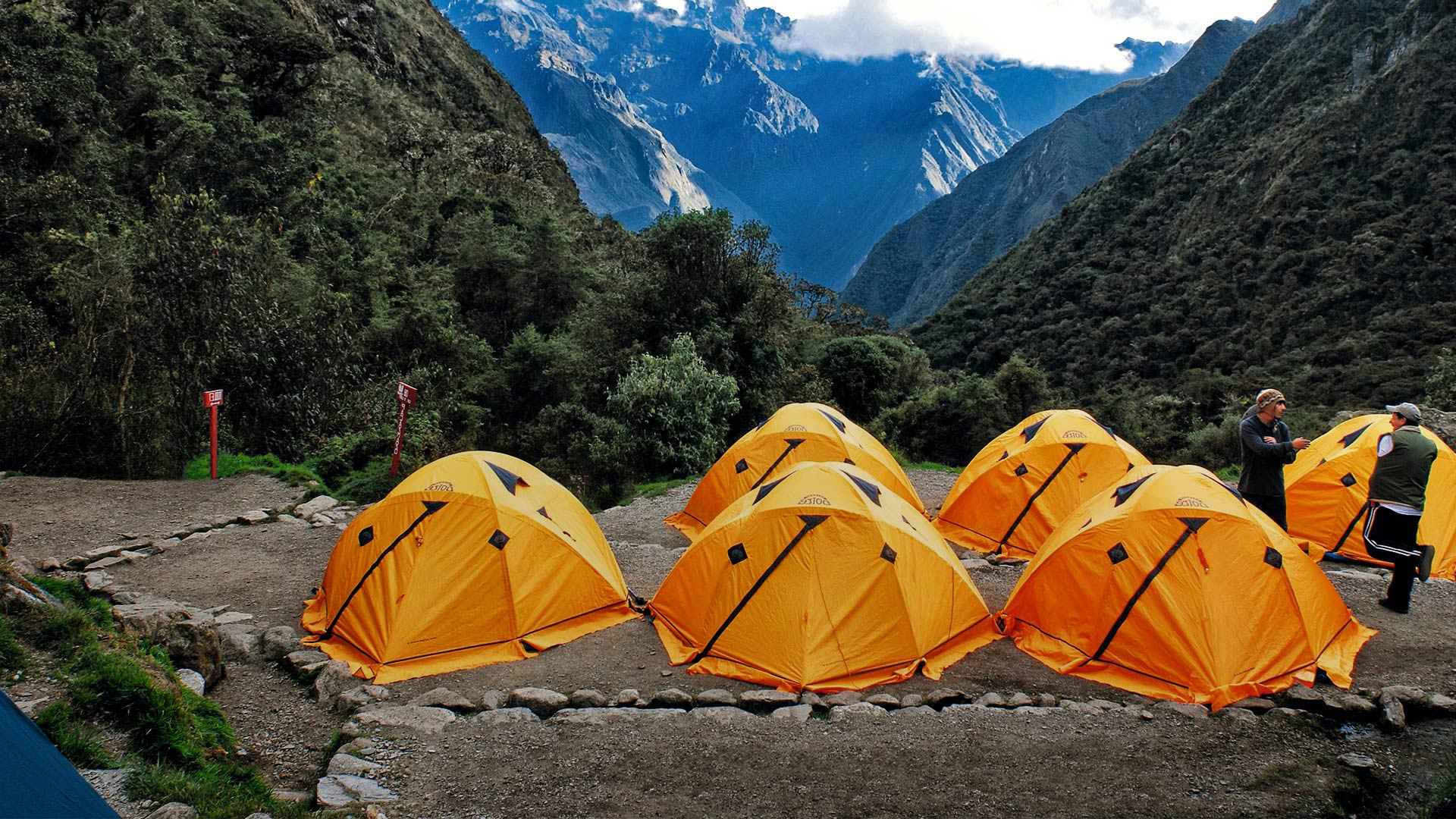
Glamping on the Inca Trail
The glamorous way to trek
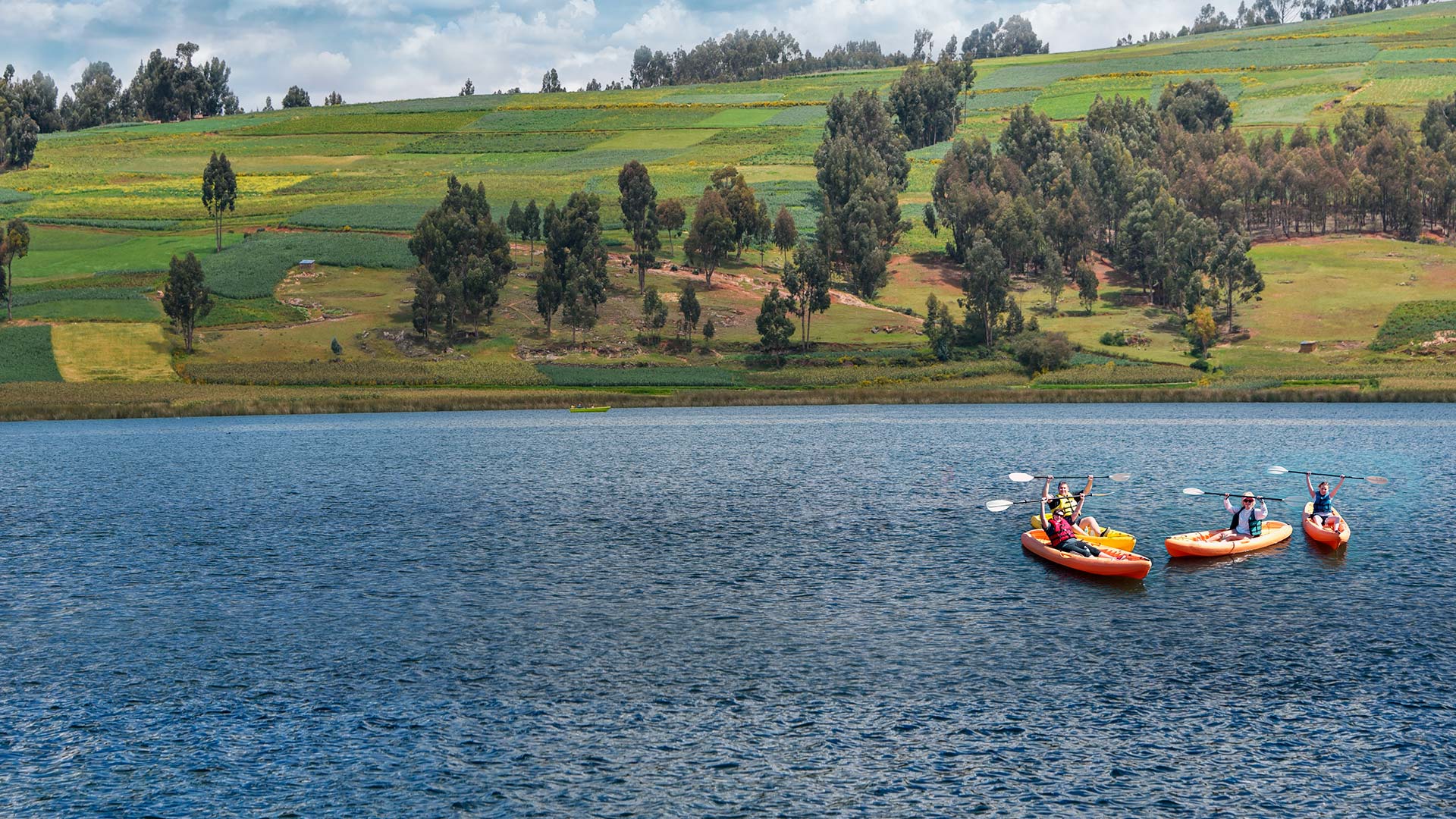
Kayaking on Cusco’s lakes
Take a ride in these single person craft
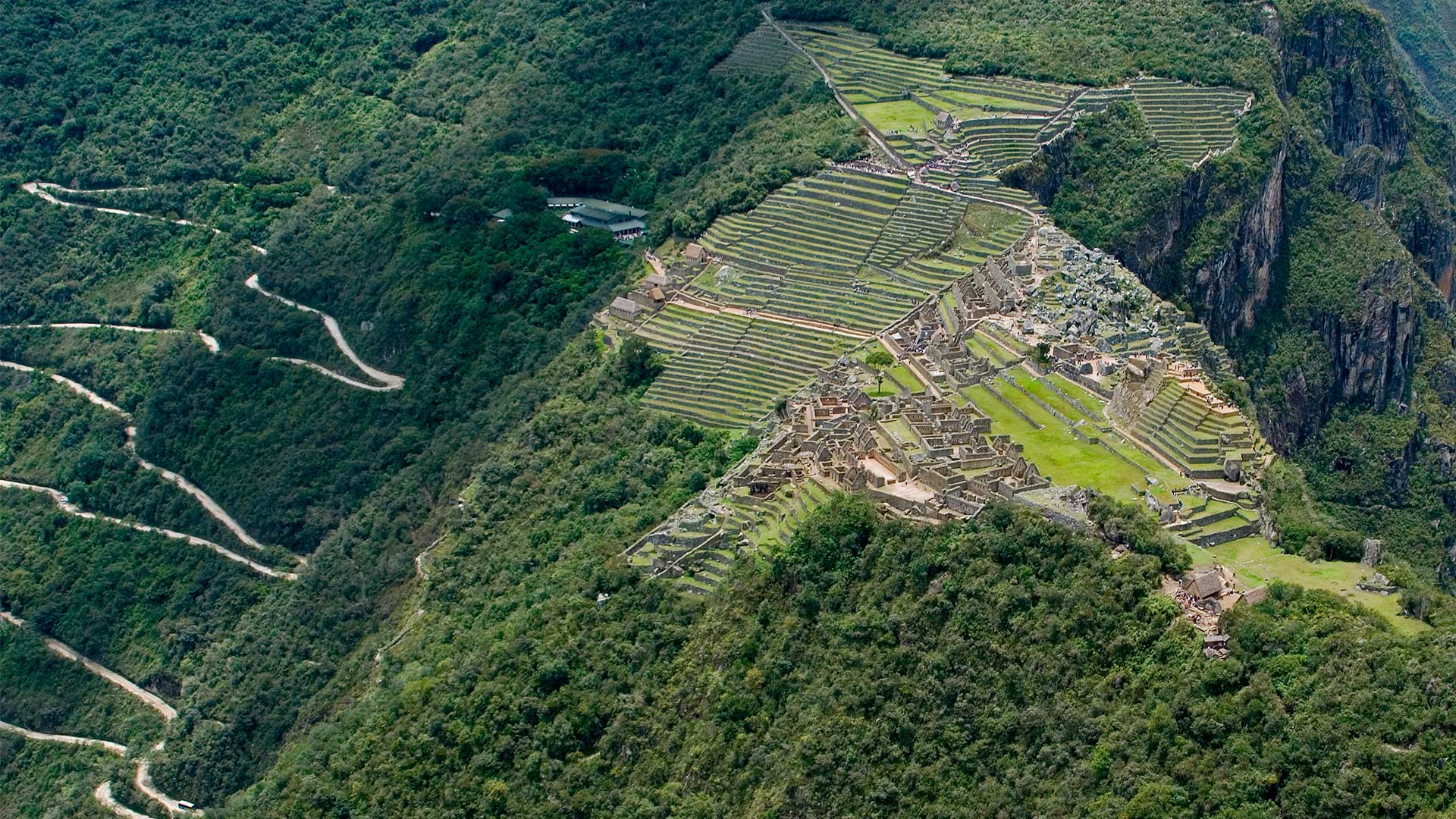
Experiencing the view from Huayna Picchu
A condor eye’s view
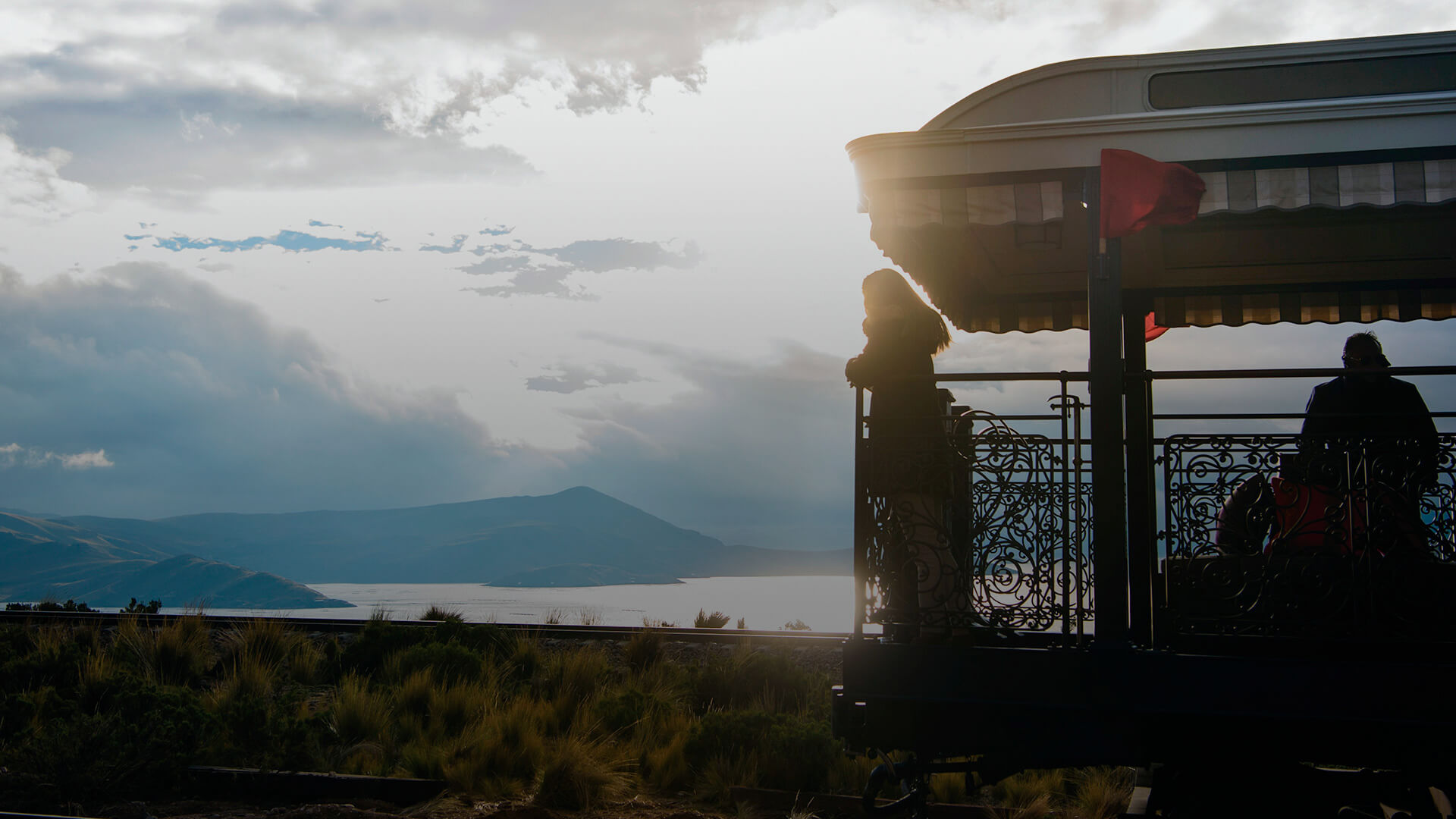
Luxury train journey Cusco, Puno and Arequipa
Where luxury arrives on rails
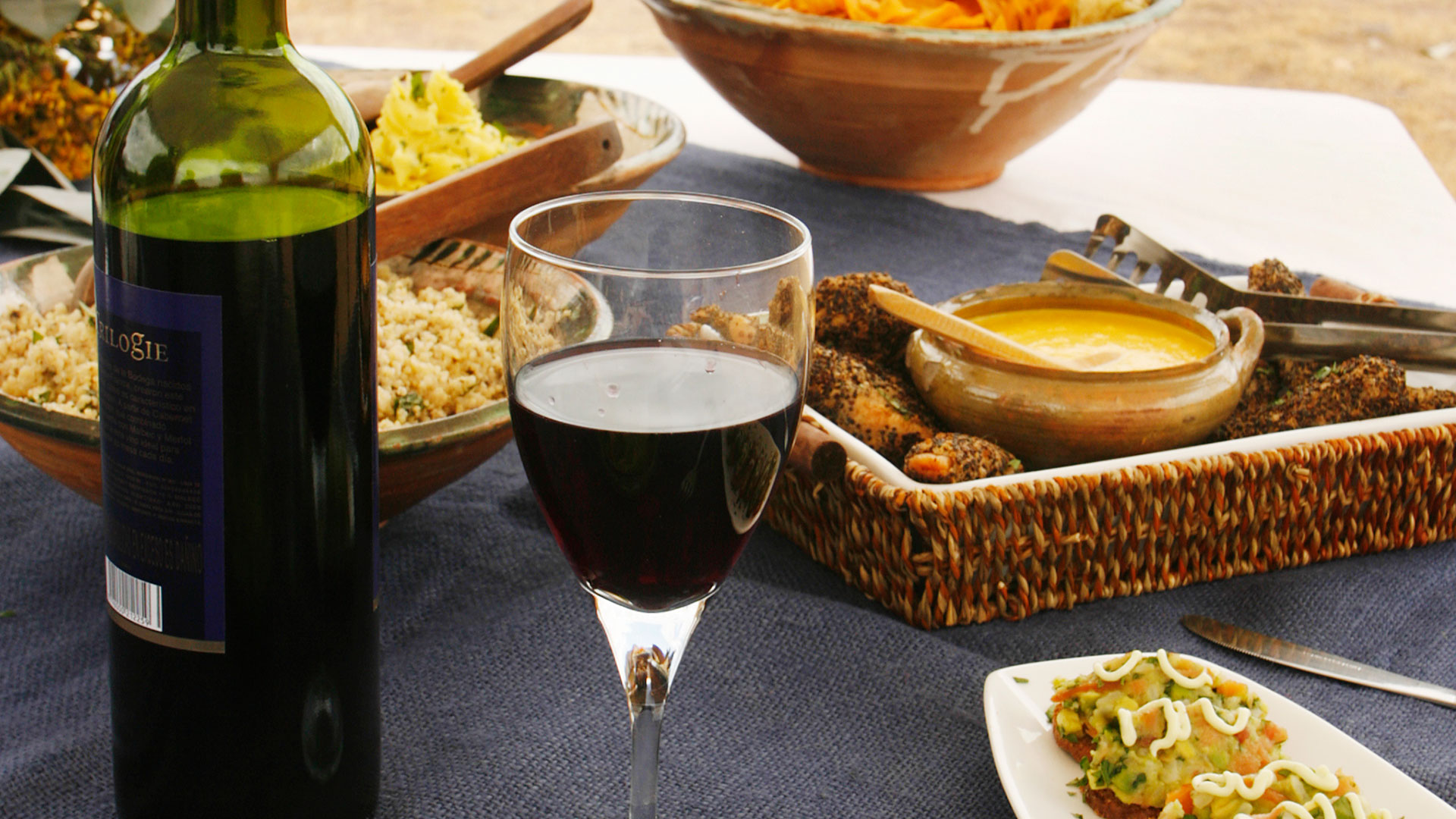
Picnic in the Sacred Valley
Nature a la carte
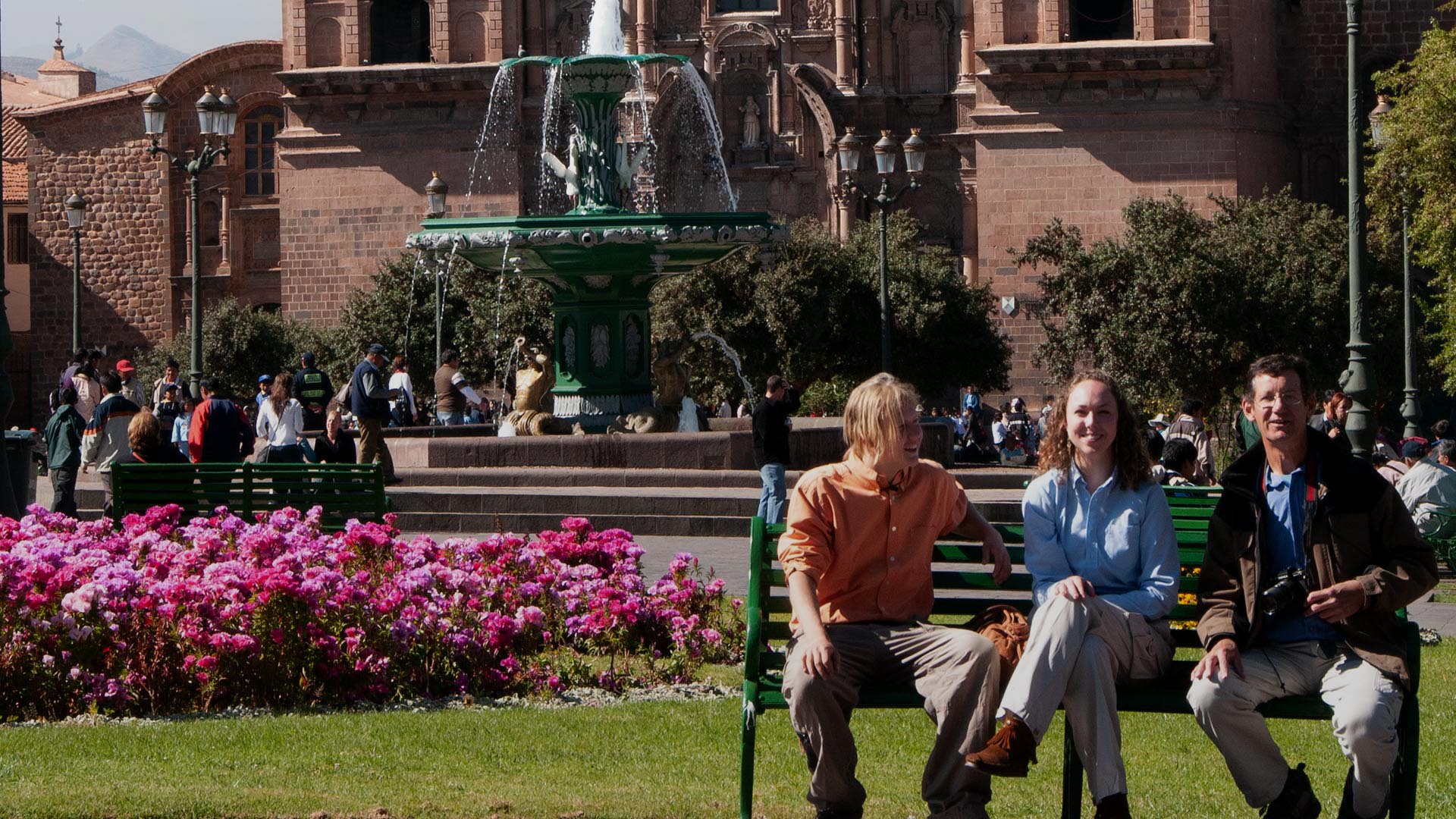
Andean Baroque route-Cusco
Where history and art knock on heaven’s door
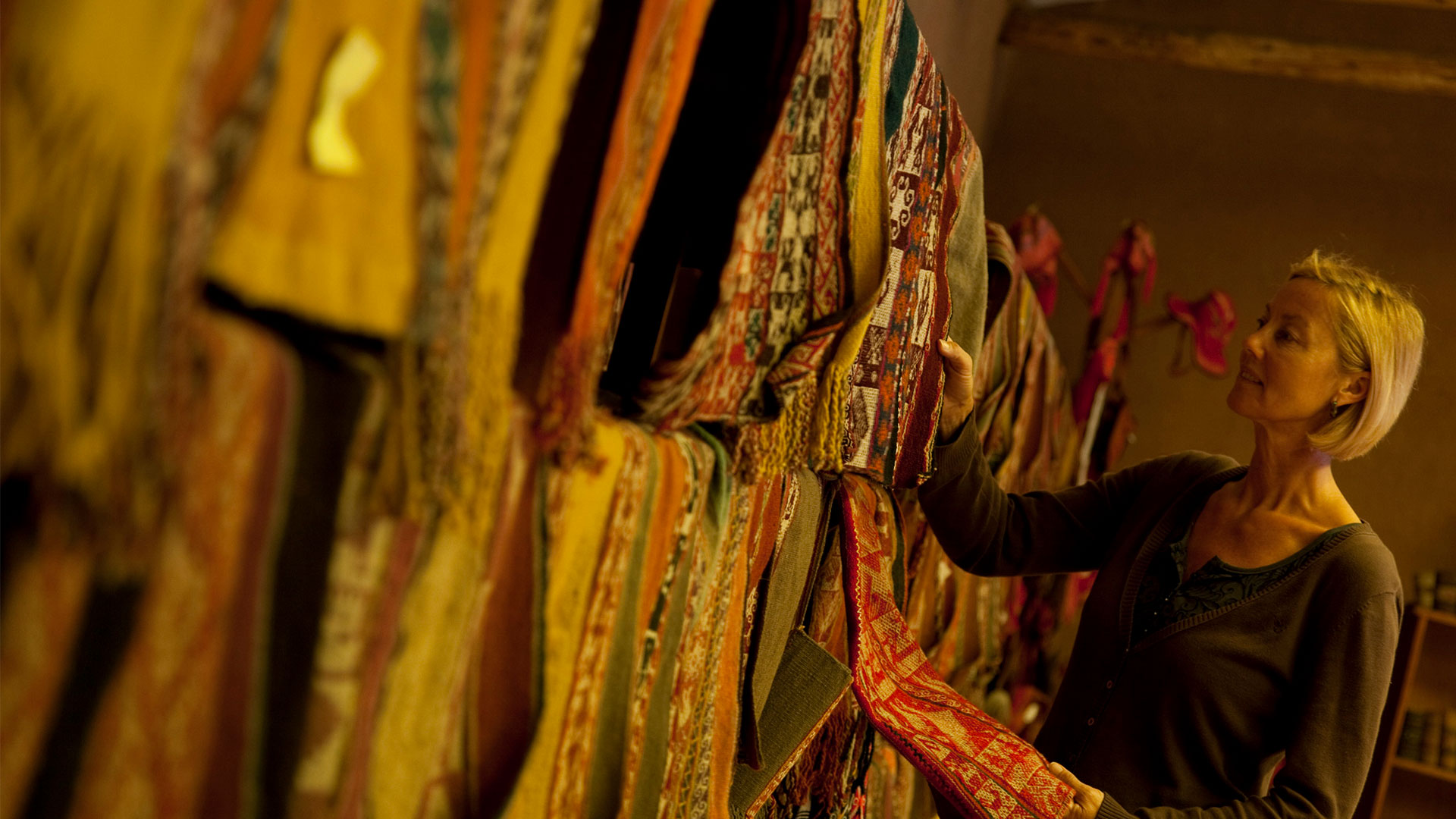
Shopping for handcrafts, silver and alpaca in Cusco
Where ancestral knowledge seems endless
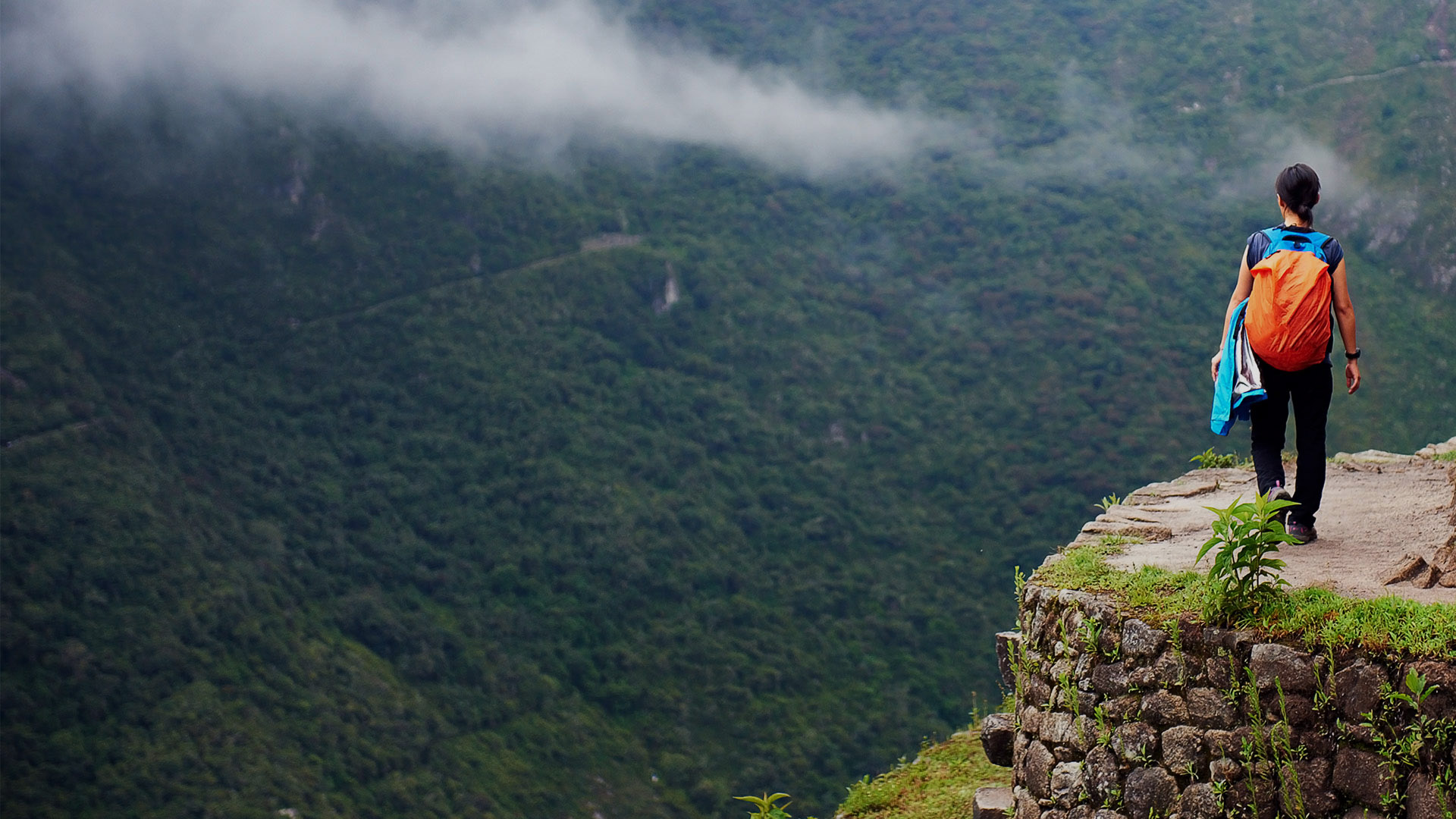
Trekking the Inca Trail
It will exceed your expectations
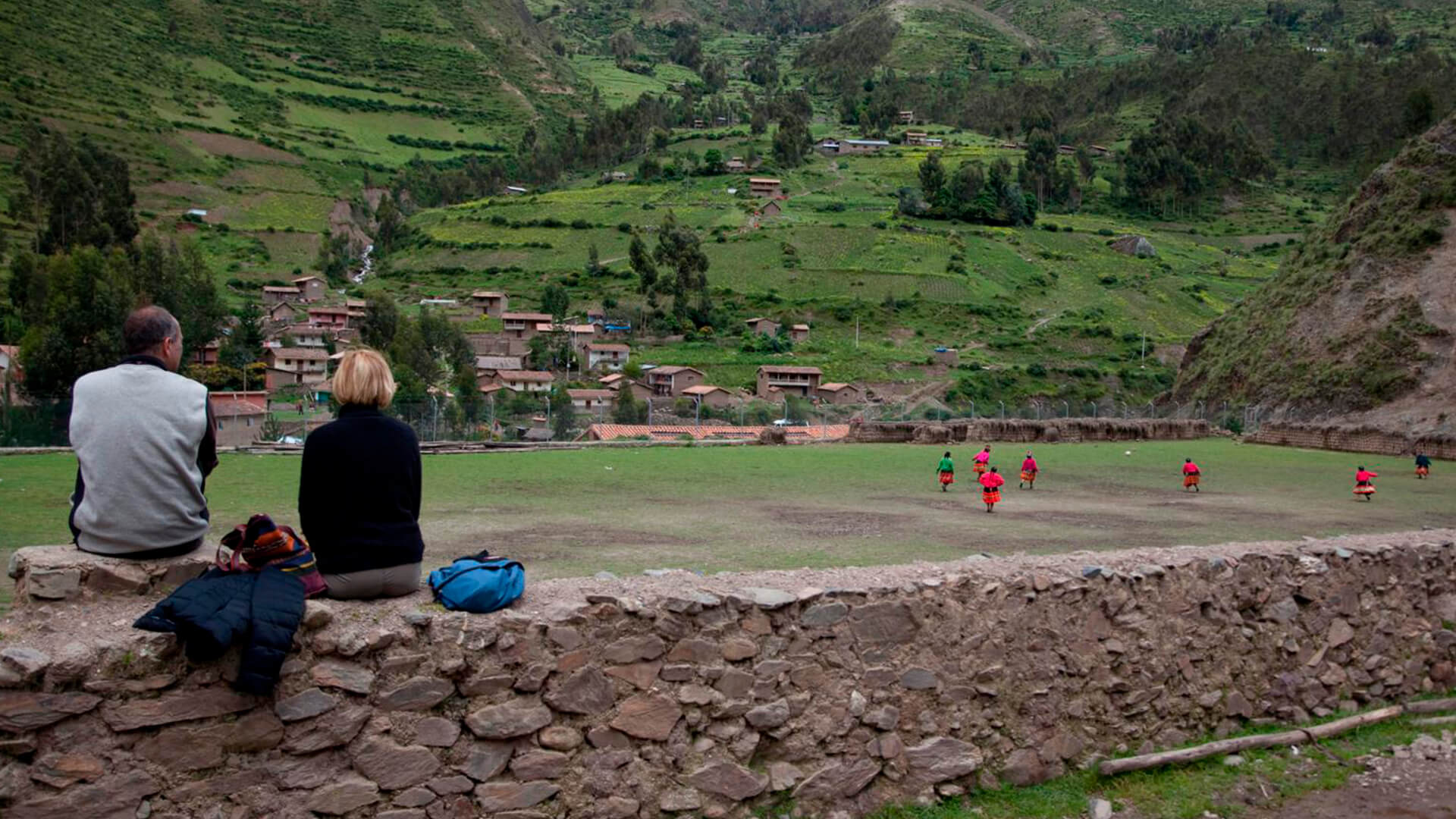
Visit the communities of the Sacred Valley
Experience the Sacred Valley
Top destinations to explore in Perú
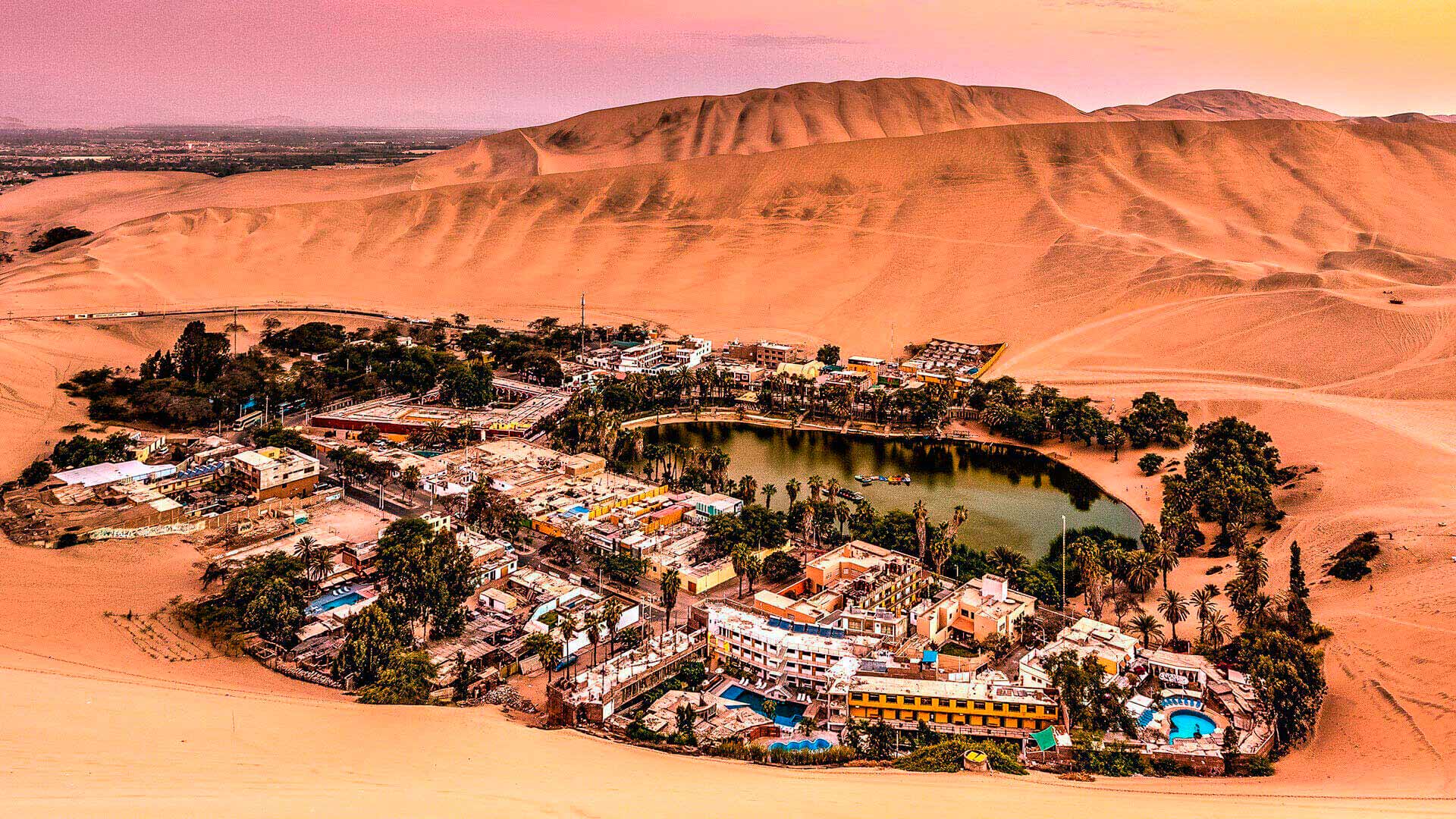
A desert, all experiences
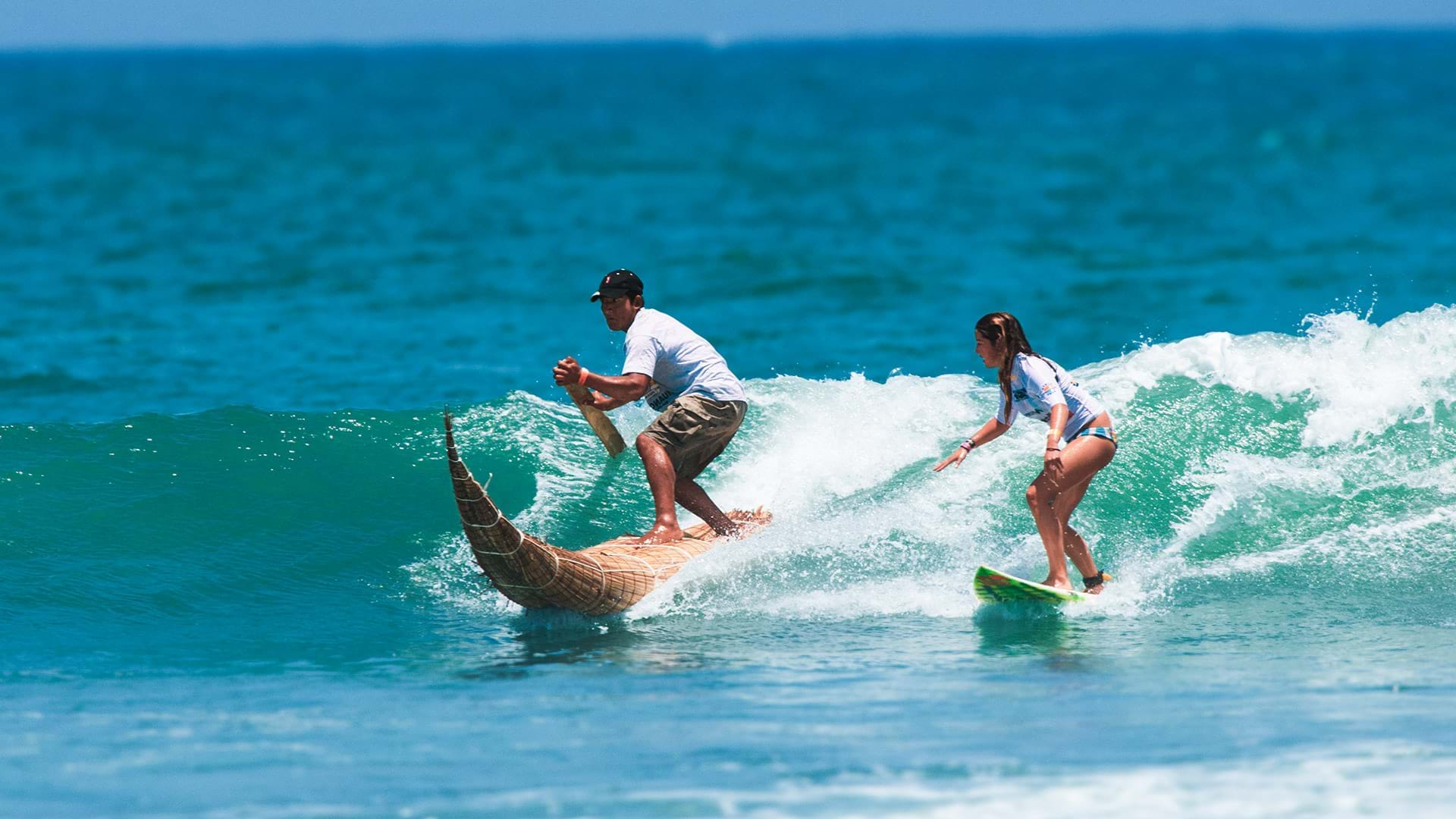
La libertad
Everything is about the sea
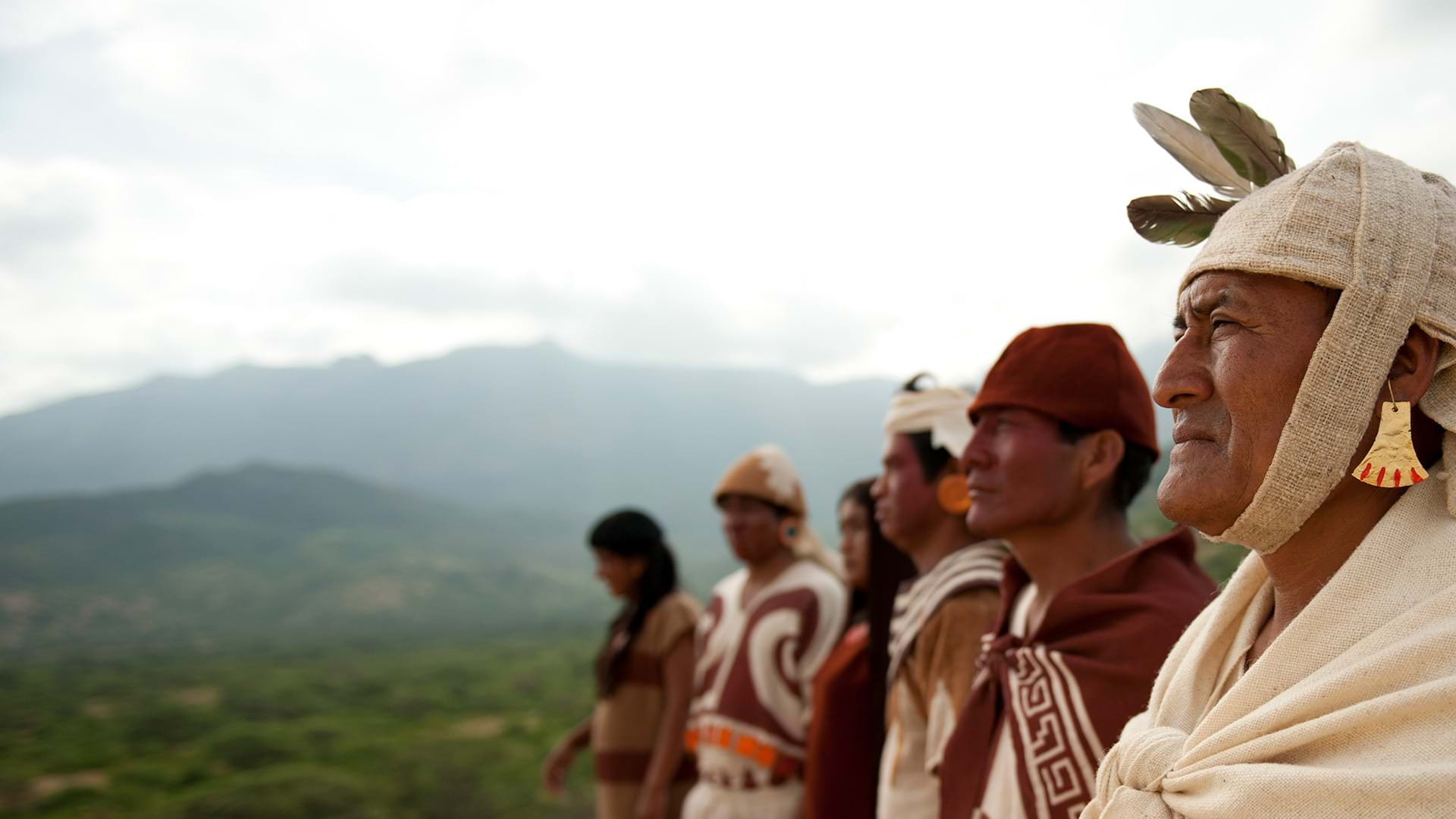
Land of ancient kingdoms, pyramids and forests
We help you plan your trip!
TRIPADVISOR

Cusco is an enchanting introduction to the Andean culture and the jumping-off point for both Machu Picchu and the Sacred Valley . Browse our complete travel guide below for essential facts, travel tips, and top attractions to explore on your trip to Cusco.
Once the capital of the mighty Inca Empire, Cusco (also spelled Cuzco) holds a unique charm that's hard to put into words. Exquisite churches, fantastic museums, and narrow cobbled streets in the historic center merit at least a few days’ worth of exploration. Add to that stunning Inca ruins both within the city and in the surrounding hills and you’ve got a recipe for travel magic.
Cultural festivals throughout the year, including Señor de los Temblores and Inti Raymi, highlight the region’s mixed Spanish-indigenous heritage and illustrate the continual renewal of the community’s long-held Andean traditions. This fascinating and historically-rich city is sure to be one of the most memorable places you’ve ever set foot in.
Climate & Weather
The highland climate of Cusco has a rainy season and dry season with gradual weather and temperature changes in between. The mountainous geography of the Cusco region has a wide variety of microclimates, with drastic temperature differences between the warm and humid valleys and the frosty high altitude plains. Generally, as elevations climb higher, temperatures drop.
Rainy Season The rainy season in Cusco is from December to March and coincides with summer in South America. Rainstorms are unpredictable, though heavy rains are usually brief and episodic. January and February typically receive the most rainfall. Cloudy skies are typical throughout the rainy season, but patchy sunshine comes through on some days. Average temperatures are around 60°F (16°C) in the day and 46°F (8°C) at night.
Dry Season The dry season is from June to August when it's winter in South America. During these months in Cusco, it's typically beautiful and sunny. The average daytime temperature is around 65°F (18°C), but if you're in direct sunlight it can feel a lot hotter. At night, without cloud cover to create an insulation effect, the temperature dips down to a chilly 25°F (4°C).
Best Time to Visit
There are benefits to visiting Cusco during each season, as well as some drawbacks.
- The dry season is the most popular time to visit Cusco. Weather conditions in the Andes are usually sunny with a minimal chance of rain, but attractions tend to be crowded.
- The rainy season is a pleasant time to be in Cusco because there are far fewer tourists and crowds, except for Semana Santa (Easter Week), when a lot of Peruvians are also taking a vacation. Weather-related travel delays are more common, especially in January and February, when it rains the most.
- The months between the rainy and dry seasons (April, May, September, and October) usually have temperate weather and fewer crowds.
Geography & Map
- Cusco is located in the Huatanay valley in southeastern Peru and surrounded by Andean peaks. The city is the capital of the province and region of Cusco, and a principal hub for travelers heading to and from Machu Picchu.
- Elevation 11,155 ft (3,400 m) Population ~430,000
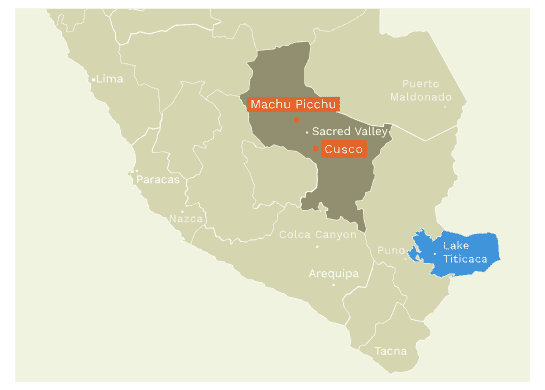
The city of Cusco represents the sum of hundreds of years of indigenous and cultural fusion throughout the southern Andes of Peru. Excavations in the Cusco basin have uncovered artifacts and temples from the ancient Killke Culture dating as far back as 900 AD.
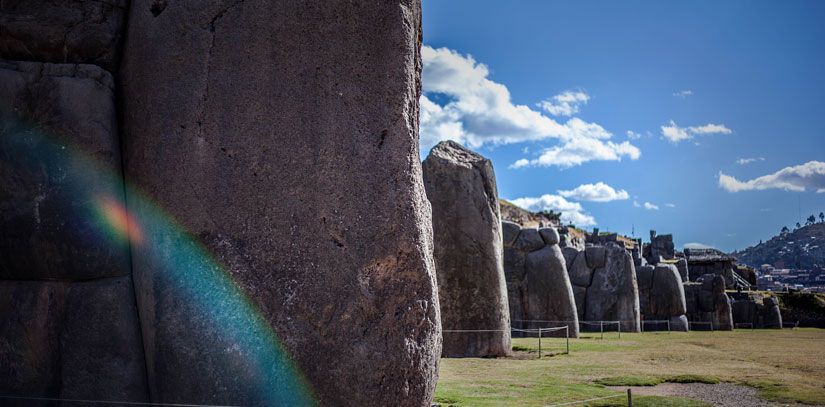
The Inca civilization began to develop as a city-state in 1200 AD, first co-existing with and then gradually absorbing neighboring ethnic groups. Inca oral traditions recorded after the Spanish conquest remember Manco Capac as the first Inca king.
Expansion of the Inca Empire did not begin until 1438, under the reign of Pachacutec-Cusi Yupanqui, whose name means "earth-shaker." The Inca called their lands Tawantinsuyu, which spread over much of South America and used their imperial capital of Cusco to impose political, religious, and administrative control.
The rectilinear layout of Cusco's streets is an Incan legacy. Pachacutec ordered the city rebuilt in the shape of a puma. The rivers Saphi and Tullumayo were canalized to control flooding and formed the outlines of the puma's body (the rivers continue to run underground), its loins centered on Qorikancha, and its head represented by Sacsayhuaman. This area of Cusco was reserved for the elite: the king and his lineage, priests, noble families, and their retinues. Separate areas were designated for agriculture, artisanry, and industry.
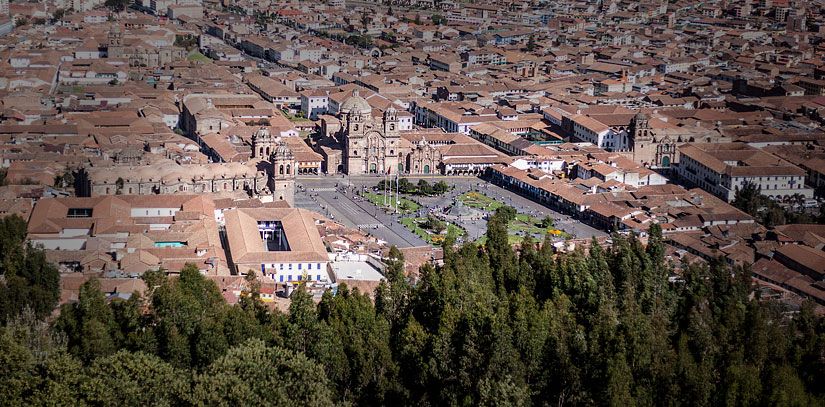
Francisco Pizarro and Spanish soldiers landed on the shores of the Inca Empire in 1531, thus marking the beginning of the end for the Inca. For a captivating re-telling of the Conquest and collapse of the Inca Empire, we suggest reading The Last Days of the Incas written by our Peru Specialist Kim Macquarrie.
In the years after the fall of the Inca Empire in 1533, the Spanish took control of Cusco. Many Inca palaces and temples were toppled completely, and the stones were used as the building blocks of Spanish-style churches and casonas. But in some cases, the Inca walls were kept intact and incorporated into the new buildings. Santa Clara Monastery, the Archbishop's Palace, and Palacio Nazarenas (formerly a convent, now a 5-star hotel) are examples of buildings with long sections of Inca walls that are on display to admire today.
Travel Tips
Traveling to Peru in the peak season (June, July, August) requires a lot of planning several months in advance. This includes booking hotels in Cusco and Aguas Calientes (Machu Picchu), flights to/from Cusco, train tickets to/from Machu Picchu, Huayna Picchu tickets (limited to 400 and sell out weeks in advance) and Inca Trail permits if applicable.
Altitude Sickness
Altitude sickness is a common health concern for travelers arriving in Cusco. Acclimation varies widely by individual, but many people adjust within 24 to 48 hours. Minor symptoms include headache, fatigue, insomnia, and loss of appetite. Severe reactions to high elevations are rare and hard to predict.
Before you travel, ask your doctor about medications to prevent altitude sickness. During your stay to Cusco, keep hydrated, avoid heavy meals, and try the local remedy, coca leaf tea. If you're planning to trek to higher elevations, plan to spend a few days acclimating in Cusco before beginning the journey.
What to Pack
Cusco day excursion checklist:
- Bring a daypack with snug straps
- Carry a bottle of water and stay hydrated
- Camera or phone with charged batteries
- Sweatshirt or jacket in case the temperature cools off
- Extra soles to purchase any souvenirs that grab your attention or for tipping (at your discretion)
Dry season packing suggestions:
- Wear light, comfortable clothes while you are out touring. Long-sleeve shirts and pants are recommended for extra protection from the sun.
- Bring a wide brim hat, sunglasses, and sunblock. The sun is quite intense at Cusco’s high elevation.
- Pack a cozy fleece or jacket. Temperatures in Cusco change drastically from day to night, especially during the peak dry season from June until August. If you need extra warmth, buy a handknit hat, mittens, and scarf at Mercado de San Pedro.
Rainy season packing suggestions:
- Wearing the right clothes to stay dry can make the difference between an enjoyable experience and a wet, miserable one. Stick to wearing jeans indoors, and opt instead for long pants made of synthetic, quick-drying fabric while outside in the rain.
- Pack an umbrella to using during day tours. Or, if you prefer, wear a rain poncho.
Best Place to Stay in Cusco
The best area to stay in Cusco is in the historic downtown, which has countless restaurants, museums, Inca ruins, and other top attractions within easy walking distance. Some of the city’s most charming hotels are an uphill walk from the Plaza de Armas in the San Blas neighborhood, which might not be the best option for anyone with physical limitations or concerned about overexerting themselves in the high elevation. Cusco accommodation ranges from backpacker party hostels, AirB&B, and comfortable hotels that include complimentary breakfast. Check out our preferred places to stay in the Hotels section above.
Getting Around Cusco
Walking is the best way to get around the historic center of Cusco. You can stroll from one side of the historic center to the other within 15 to 20 minutes. Around the Plaza de Armas you’ll find Cusco’s top attractions, restaurants, and nightlife options. The area around the main plaza is mostly flat, but the streets become steeply inclined when you walk toward the San Blas, San Cristobal, or Santa Ana neighborhoods.
How to Get from Cusco to Machu Picchu
- Cusco is a 4-hour train trip from the Machu Picchu Station in Aguas Calientes. To catch the train in Cusco, you need to drive to the Poroy Station about 20 minutes from the city’s Plaza de Armas.
- Travelers can also trek to Machu Picchu. Trekking packages are arranged so that you are picked up from your hotel in Cusco and then driven to the trailhead in the Sacred Valley. The iconic 4-day Inca Trail starts from KM 82 along the railway tracks in the Sacred Valley and is a 27 mi (44 km) journey on foot all the way to Machu Picchu’s Sun Gate.
Things to Do

Plaza de Armas

San Blas Neighborhood

Cusco Cathedral

Santo Domingo Church encloses one of Cusco's most impressive Inca ruins, the Coricancha or Temple of the Sun. According to chronicles written after the Spanish conquest, it was the largest and most opulent temple in all of South America, filled with gold, silver, and precious jewels. Inca oral traditions indicate that the temple, dedicated to the worship of Inti, the sun god, was built during the reign of Manco Capac in the 12th century atop a pre-existing temple. Beginning in 1536, Santo Domingo Church was built upon the ruins of the Coricancha, but tantalizing vestiges of the former Inca temple were kept intact. The most intriguing feature is an exceptionally well-crafted semicircular wall that's visible from Avenida El Sol.

Sacsayhuaman
The Sacsayhuaman ruins are on a hill overlooking Cusco and rise in front of a vast esplanade the length and width of four football fields. The original Inca-built walls were 10 feet (3 meters) taller. On the topmost platform were three circular towers. The gargantuan scale of Sacsayhuaman's zigzagging, terraced walls will make your jaw drop, even more, when you realize they represent just a fraction of the original site.

Tambomachay

Museum of Pre-Columbian Art (MAP)

Inka Museum

San Pedro Market

Cusco Planetarium
The Inca Empire placed profound importance on astronomy. The observations they made in their natural environment, like those up in the sky, were deeply rooted in their spiritual beliefs and day-to-day activities. A visit to the Planetarium Cusco is an opportunity to learn about Inca constellations and the southern night sky. If the weather permits, you can observe the star-studded sky over Cusco through a telescope. The planetarium is a family-run project located in an Andean-style house with adobe walls up in the surrounding hills next to Sacsayhuaman about a 10-minute drive from the Plaza de Armas.
Note: The Cusco Tourist Ticket (or boleto turístico del Cusco) gives you access to a variety of Inca ruins and museums. The popular Full Ticket is valid for ten days and includes entry to sixteen attractions, including Sacsayhuaman, Qorikancha, the Museum of Pre-Columbian Art, and many more.
As one of Peru's most popular destinations, Cusco boasts a range of hotels for every budget. Within the historic center of the city, you'll find colonial buildings that have been restored into elegant 4- and 5-star hotels, old family houses converted into cozy guesthouses, and everything in between. The following are our Top Pick Hotels in Cusco, selected for their excellent amenities, outstanding service, and convenient location.
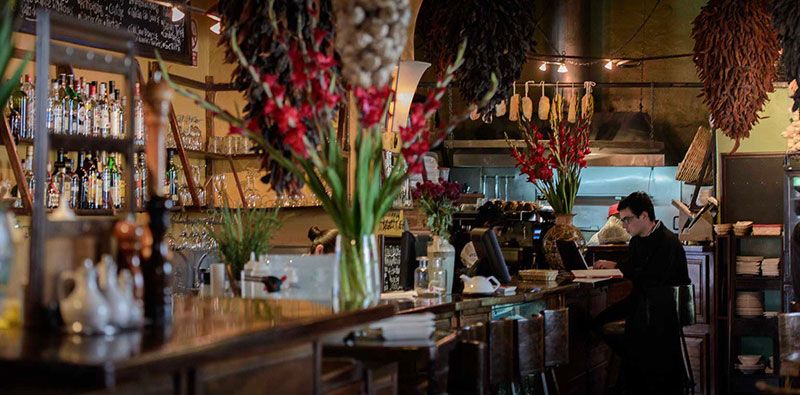
Palacio del Inka
Plazoleta Santo Domingo 259, Historic Center, Cusco

Casa Andina Premium Cusco
Plazoleta de Limacpampa Chico 473, Historic Center, Cusco

Casa San Blas
Tocuyeros 566, San Blas, Cusco

Anahuarque Boutique Hotel
Calle San Agustin 236, Cusco
Restaurants

Morena Peruvian Kitchen
Cultural events.

Tour Packages
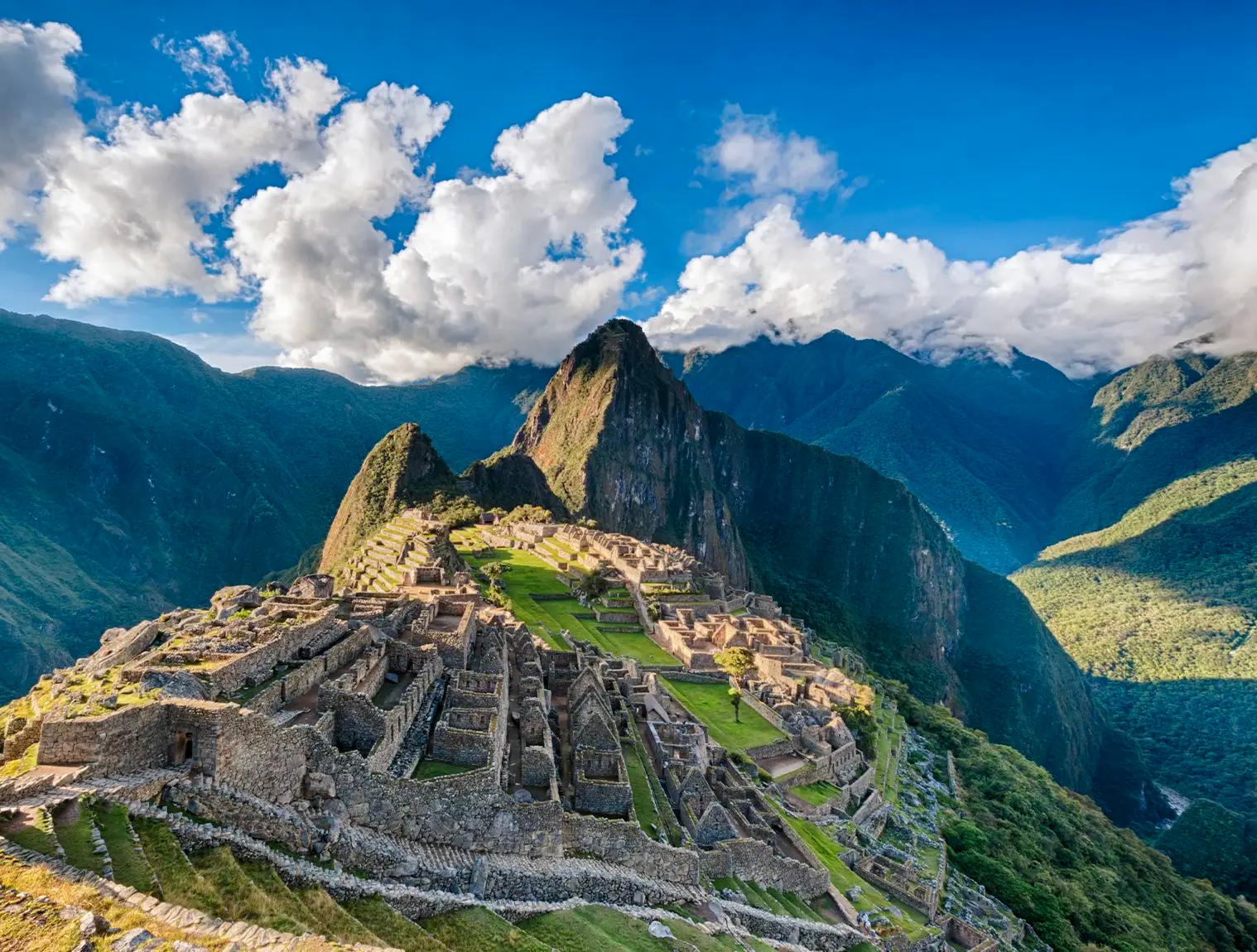
6 days from $ 1249
Cusco, Sacred Valley and Machu Picchu
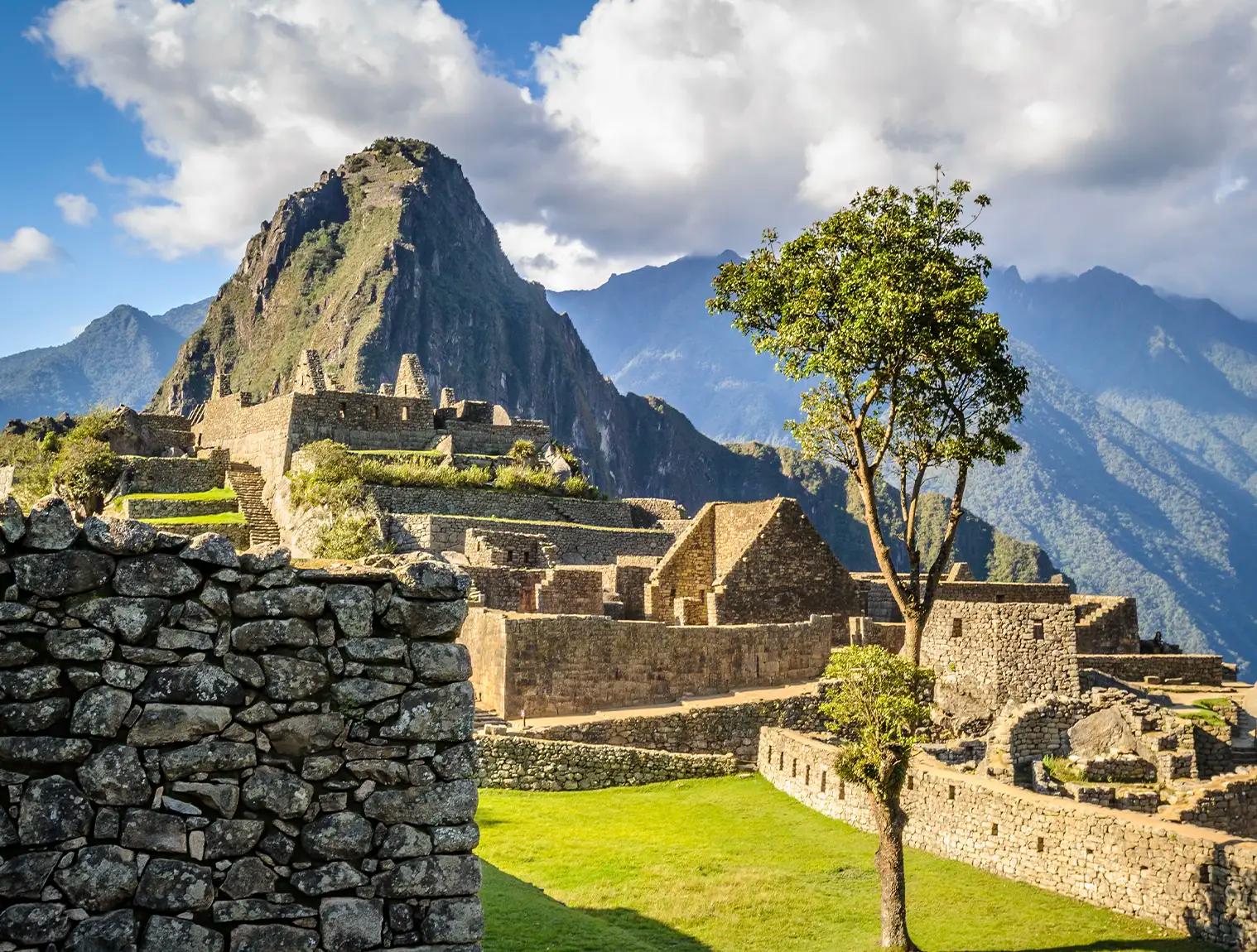
4 days from $ 989
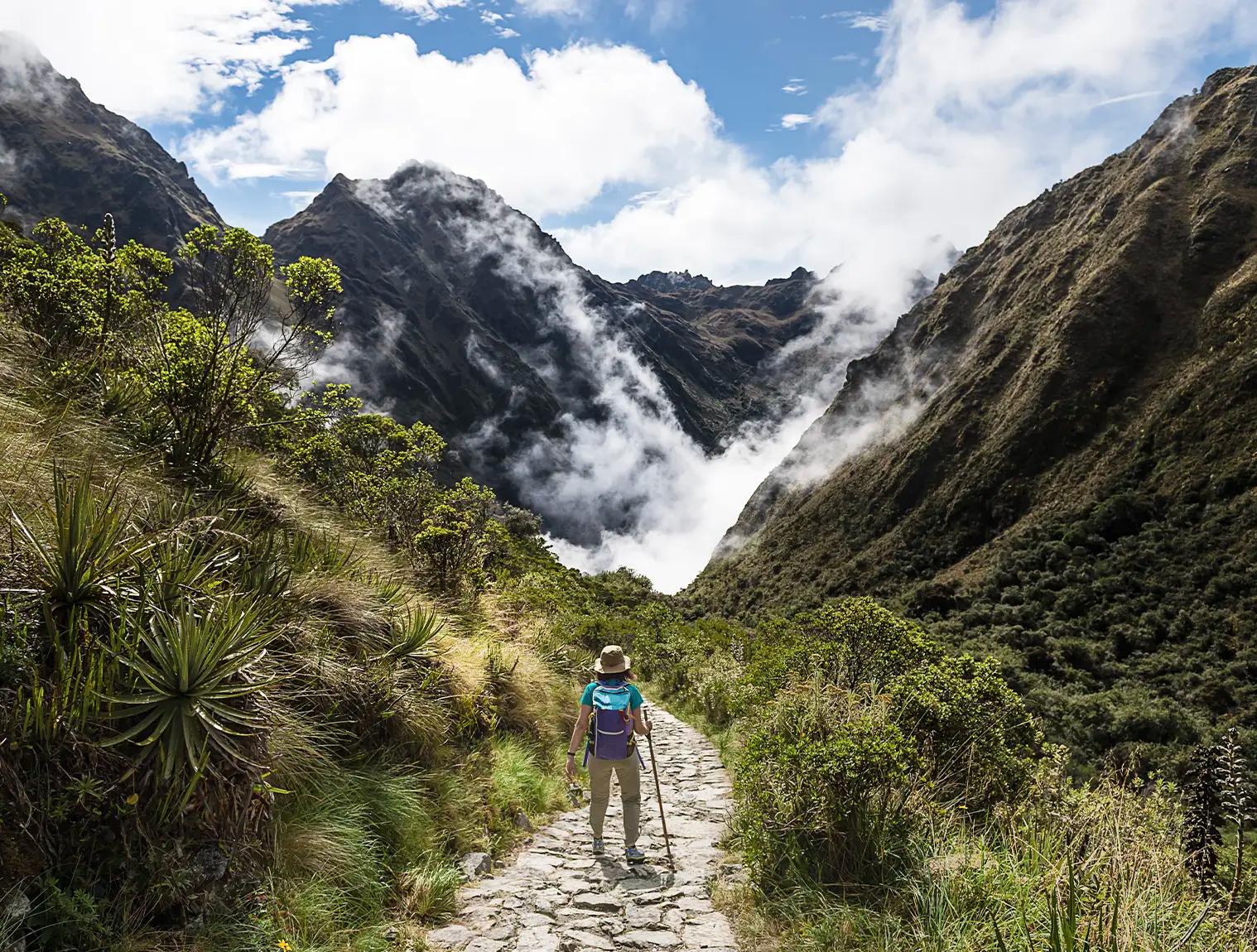
9 days from $ 2069
Cusco, Inca Trail, Sacred Valley & Machu Picchu
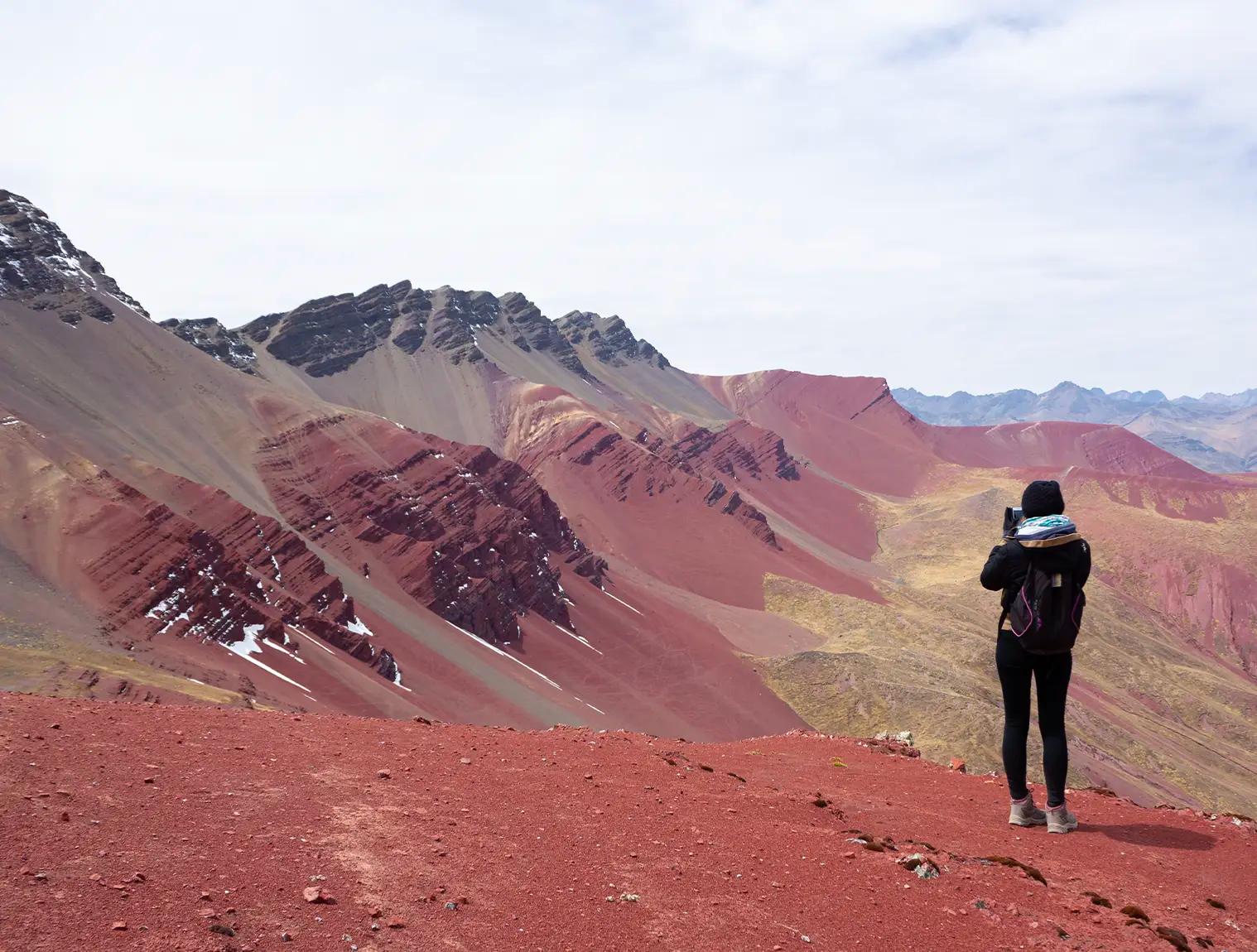
6 days from $ 1719
Cusco, Rainbow Mountain, Machu Picchu & 2-day Inca Trail
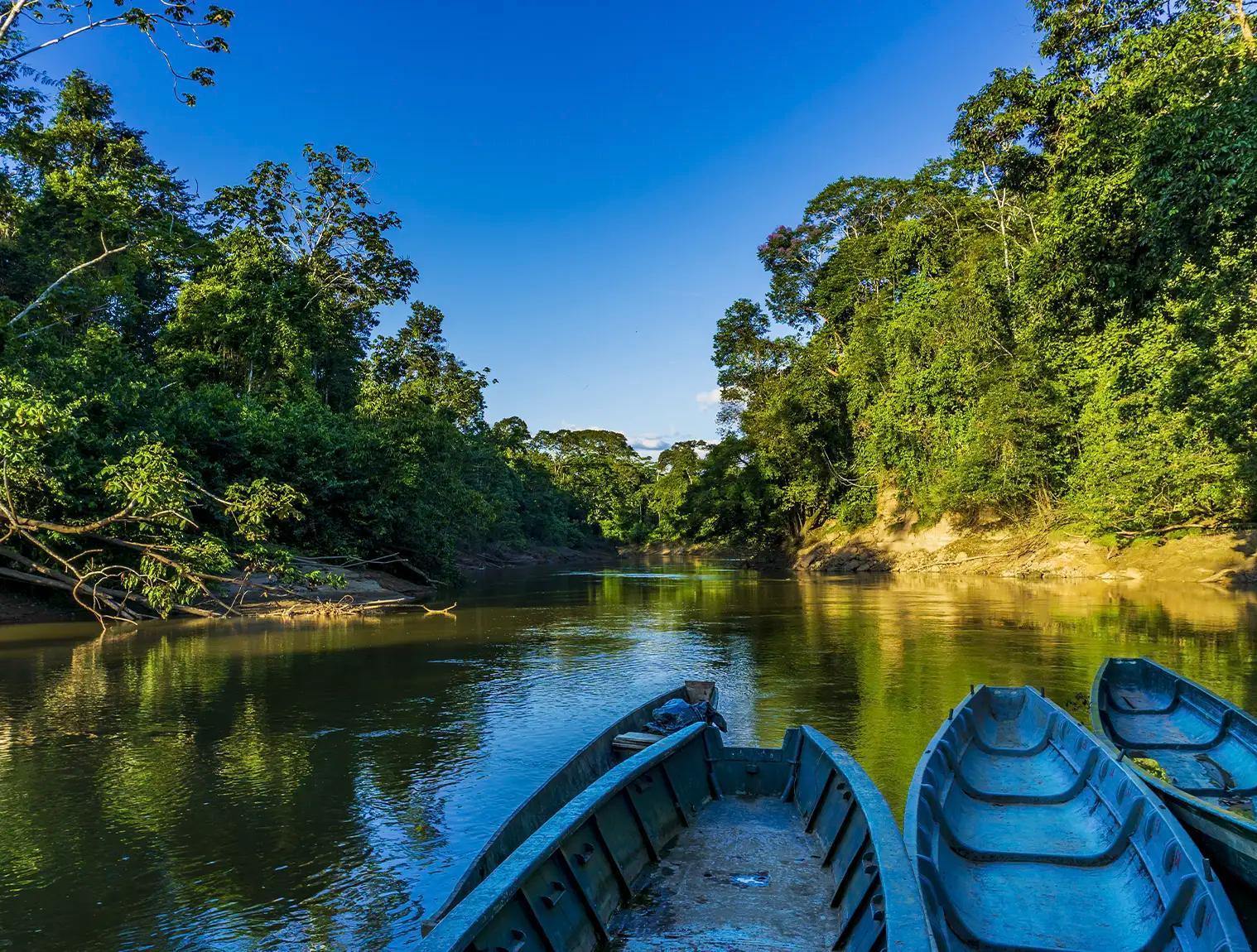
12 days from $ 2549
Machu Picchu, Sacred Valley, Cusco, Amazon, Arequipa & Colca Canyon
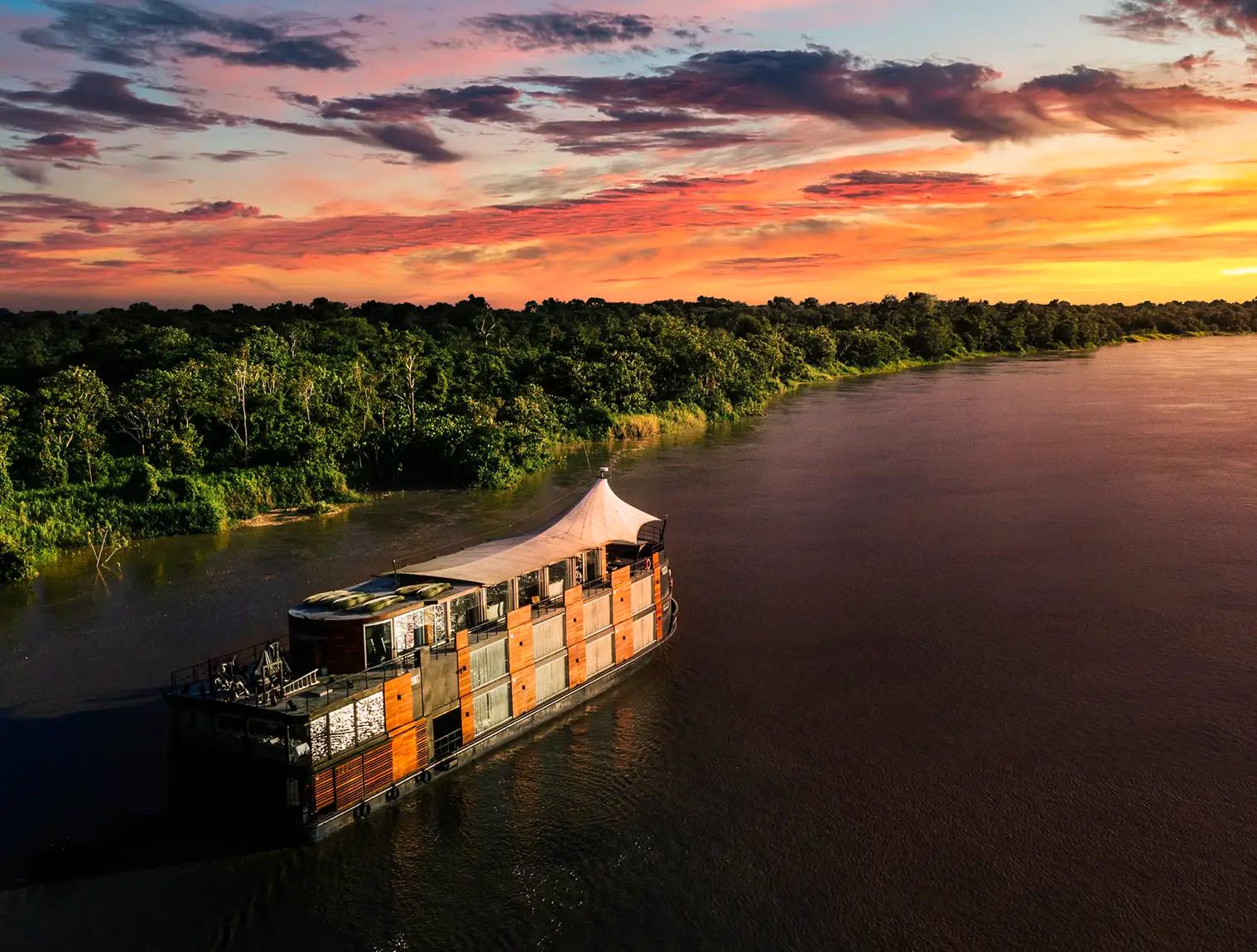
9 days from $ 3649
Cusco, Sacred Valley, Machu Picchu, Lima & Amazon Cruise
How long should I stay in Cusco?
What is the elevation of cusco, is cusco safe, where are the best places to shop in cusco, how can i visit the sacred valley from cusco, what’s included in a city tour of cusco, how can i visit rainbow mountain from cusco, where is the best place to exchange money in cusco, where is the cusco airport, how long is the flight from cusco to ____, how far is cusco from ____.

Book With Confidence
We're flexible! Postpone your tour with zero cost up to 10 days prior to departure.
Email: [email protected]
Sign up to receive our newsletter for great articles, stunning photos, and special deals.
1-817-230-4971
Sales & travel support

South America • Peru • Travel Tips
29 must-know tips for an epic adventure in cusco.
Please note that our website is supported by our users. Some of the links below are affiliate links, and at no additional cost to you, we earn a small commission when you make a purchase. We appreciate you helping us to keep the lights on and our website free for everyone.
Get ready for an awesome adventure in the Andes as you explore the enchanting city of Cusco, Peru. This gorgeous place is packed with history, culture, and jaw-dropping landscapes, and we’re here to help you make the most of your trip with some essential tips on what to know before visiting Cusco. Let’s get to it!
1. High Altitude: Prepare for the Elevation
Cusco is way up there, at a staggering 11,152 feet (3,399 meters) above sea level, which can lead to altitude sickness for some people. Marcel felt it more than I did, but it still got both of us. We drank coca tea and took altitude medications like AltiVital, found at local pharmacies.
Altitude sickness might cause breathlessness, headaches, dizziness, or nausea. To prevent and ease symptoms, take it slow, hydrate, and consider consulting with your doctor before your trip. So, make sure to give yourself a few days in Cusco before diving into treks or intense activities.
Fight Altitude Sickness in Cusco: ▸ Drink coca tea – a popular local remedy ▸ Take altitude medications like AltiVital, available at Cusco pharmacies ▸ Recognize common symptoms: breathlessness, headaches, dizziness, or nausea ▸ Take it easy when you first arrive in Cusco ▸ Stay hydrated ▸ Consult your doctor before traveling to Cusco ▸ Avoid alcohol a day before and for two days after arriving ▸ Opt for light meals, especially on your first day ▸ Give yourself a few days to acclimatize before diving into any intense activities
2. Best Time to Visit: Dry Season
The best time to visit Cusco is during the dry season, from May to October, when the weather is usually sunny and mild. We went in November and lucked out with amazing weather, including full sun at Machu Picchu and no rain or clouds. This climate is perfect for outdoor adventures, sightseeing, and joining traditional festivities.

3. Currency: Peruvian Nuevo Sol
In Peru, they use the Peruvian Nuevo Sol (PEN). Carry cash with you, as not all places take credit cards. US dollars are also accepted in some touristy areas like Cusco, but keep local currency on hand, though. ATMs are easy to find in cities but may be pretty hard to locate in rural areas, so plan ahead. Oh, and don’t forget to notify your bank of your travel plans to avoid issues with accessing your funds.
✈️ Find cheap flights to Peru
4. Language: Spanish and Quechua
While Spanish is Peru’s official language, many locals also speak Quechua, the ancient Inca language. Knowing basic Spanish phrases, like greetings and common questions, will help you connect with locals. We used a translation app on our phones a lot, so it’s a great idea to download one before your trip, preferably one that works offline. English is spoken in many tourist areas, but basic Spanish is always helpful.

5. Staying Safe in Cusco
Cusco is generally safe for tourists, and during our stay, we never felt threatened. In fact, the city felt much safer than Lima. Still, it’s essential to be cautious. Avoid flashing valuables like fancy cameras or jewelry, and be careful when using ATMs. Stick to well-lit areas at night and opt for reputable transportation options, like registered taxis or rideshare services.
6. Getting Around: Taxis, Buses, and Walking
Taxis are a cheap and easy way to explore Cusco. Just remember to agree on the fare upfront or use a rideshare app like Uber to avoid overcharging. We found Uber to be a great choice, with rides costing around $2 each around the city. Buses are also available for city travel and reaching nearby attractions. The city center is easily walkable, and many of Cusco’s must-see sites are close together, making it super convenient to explore on foot.

Get free 3-Day Cusco Itinerary!
Packed with top-rated tours, daily schedules, and helpful resources, you’ll have everything you need to make the most of your trip!
7. Conquering Cusco’s Stairs
You’ll quickly notice that Cusco has a lot of stairs, like, a LOT. The city’s steep terrain and the way it was built by the Inkas make it a real challenge for folks with mobility issues. The high altitude sure doesn’t make climbing them any easier, but it’s a unique experience that’s worth every step. Be prepared to huff and puff your way to some seriously awesome views.

8. Treat Your Tastebuds: Peruvian Cuisine
Cusco’s got a ton of delicious traditional Peruvian dishes, like ceviche, lomo saltado, and alpaca. Make sure to try the local specialty, cuy (guinea pig), often served during celebrations and family gatherings. We loved eating at Morena Peruvian Kitchen and Jack’s Café; those were our absolute top spots. Peruvian cuisine is truly a delightful mix of indigenous and international flavors, so go wild and try various dishes during your visit.

9. Peruvian Corn and Chicha Morada
Cusco is famous for its corn, and they’ve got a crazy variety of it. Corn is super important in their cuisine and culture because it has been a staple food for the Andean people for thousands of years. It’s used in countless dishes, from savory tamales to sweet desserts, and even drinks! Speaking of drinks, you can’t leave Cusco without trying Chicha Morada. We seriously loved this drink! Made from purple corn, it’s sweet, refreshing, and oh-so-delicious. Give it a try, and you’ll understand why corn is such a big deal in Cusco!
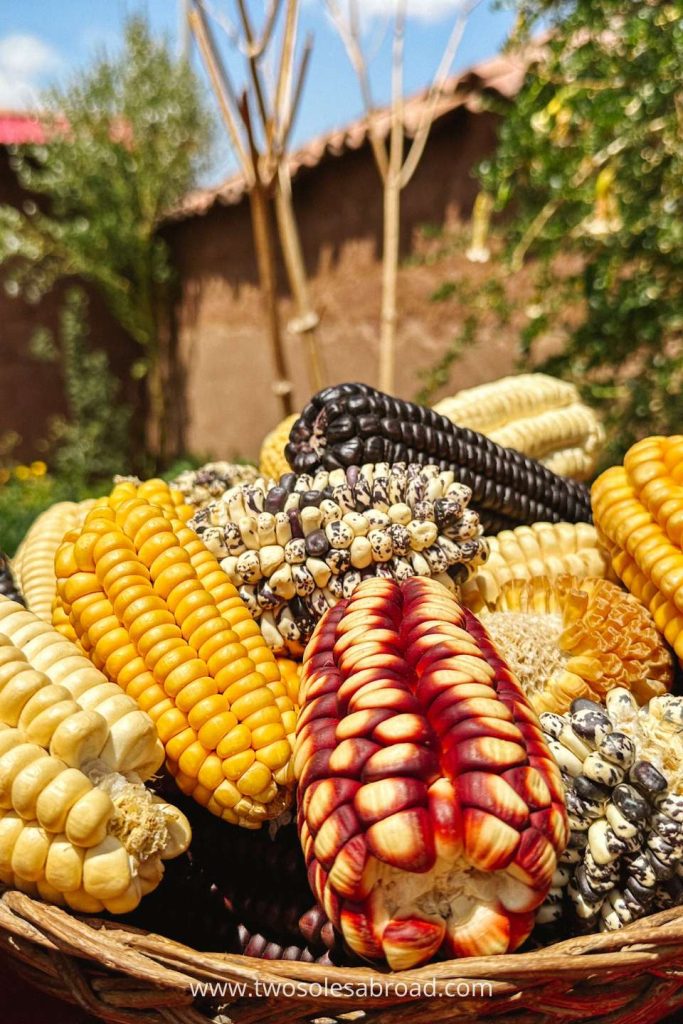
10. Drinking Water: Stick to Bottled Water
It’s best to drink bottled water in Cusco, as tap water might not be safe to drink. Also, avoid ice in your drinks and salads rinsed with tap water. While exploring the city, it’s a good idea to carry a reusable water bottle to stay hydrated and reduce plastic waste. Many hotels and restaurants offer filtered water to refill your bottle.
🏨 Find the best hotels in Cusco
11. Inca Trail Permits: Plan Ahead
If you’re considering hiking the Inca Trail to Machu Picchu, you’ll need a permit. They’re limited and can sell out months ahead, so it’s crucial to book early. However, during our trip, we discovered that some spots were available last minute, particularly in the less busy times. So, if you’re flexible with your plans, you might be able to snag that permit closer to your travel dates.
Remember that there are alternative treks to Machu Picchu, like the Salkantay Trek, which don’t require permits and can be a fantastic option if the Inca Trail is fully booked. Just keep in mind that you still need a Machu Picchu entrance ticket, even if you don’t need a permit for the trek.
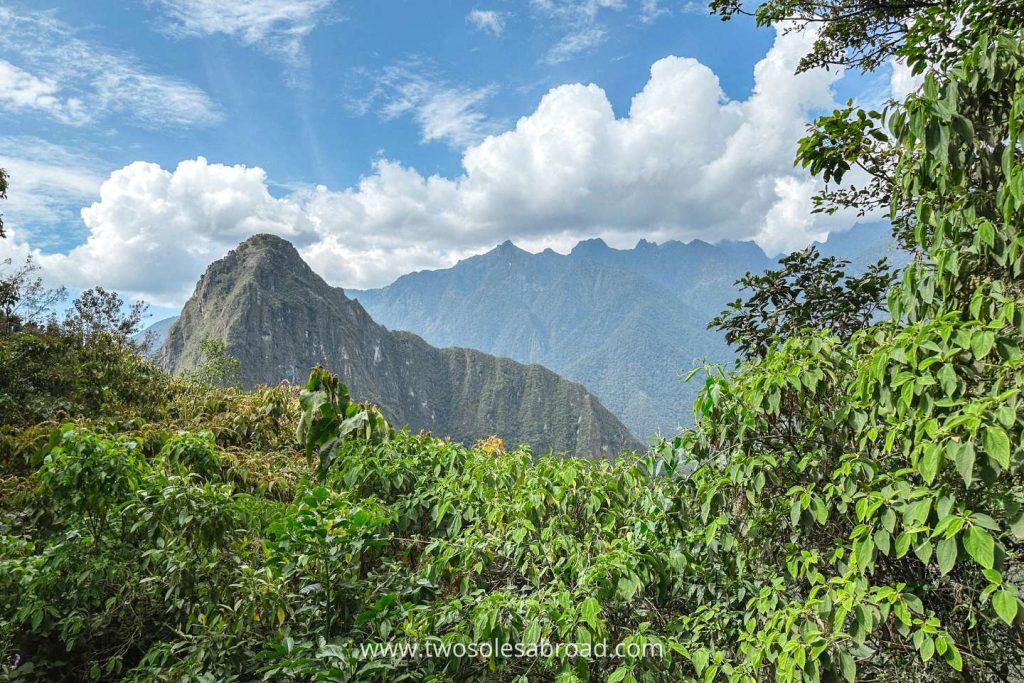
12. Acclimatization: Give Yourself Time
Before partaking in any serious activities or treks, spend a minimum of two days in Cusco to acclimate to the high altitude. We noticed that each day became progressively easier as we adjusted, although the initial adjustment period was challenging. Don’t let initial discomfort prevent you from enjoying your time in Cusco; use this period to explore the city at a relaxed pace and gradually increase your activity level as you become more comfortable. And make sure to drink a lot of water!
13. Power Up: 220 Volts and A or C Plugs
In Peru, they use 220 volts and type A or C plugs, which might be different from what you’re used to. If you’re coming from a country with a different voltage system, like the US, make sure your gadgets are dual-voltage or pack a voltage converter to keep them safe. Don’t forget a plug adapter for hassle-free charging!
14. Tipping: Appreciated but not Mandatory
Tipping isn’t a must in Peru, but it’s a sweet gesture for exceptional service in restaurants or from your amazing tour guides. A small tip shows your appreciation for the hard work of those who make your trip awesome. A general rule is to tip about 10% in restaurants and a few extra soles for porters, taxi drivers, and housekeeping staff.
15. Cultural Etiquette: Respect the Locals and Their Traditions
Always be respectful of local customs and traditions, like dressing modestly at religious sites and asking before snapping photos of people. As visitors, let’s be mindful of local culture, which leads to positive interactions with locals. Extra bonus for knowing some basic Spanish and Quechua phrases that can help you connect with people and make your experience even richer!
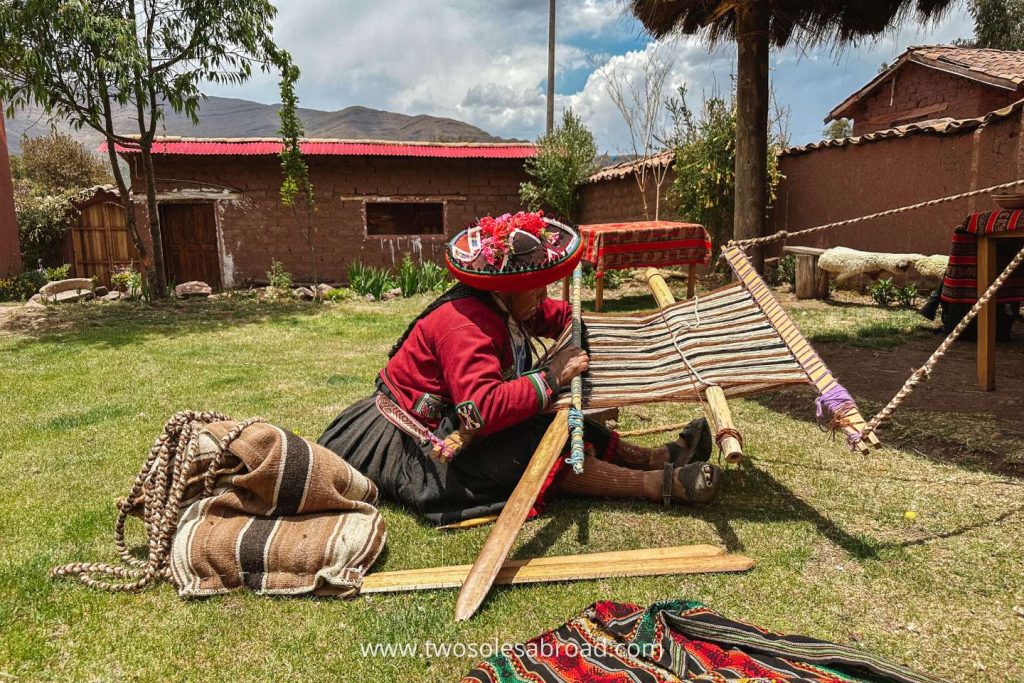
16. Souvenir Shopping: Alpaca Products and Handicrafts
Shopping opportunities are abundant in Cusco, so get ready to shop till you drop! Alpaca products like sweaters and scarves are super popular souvenirs, and Cusco has loads of shops selling them. Street vendors might offer cheaper items, but if you want genuine 100% baby alpaca wool, stick to reputable stores like Sol Alpaca, Etno Alpaca, or La Vicuñita Factory. Baby alpaca wool is softer, warmer, and more luxurious than regular alpaca wool, making it an amazing keepsake. Cusco also has beautiful handmade pottery, textiles, and jewelry for you to discover.
17. Alpaca Ladies: A Colorful Photo Op in Cusco
As you wander through Cusco, you’ll come across the iconic Alpaca Ladies. These women, dressed in traditional attire, offer tourists the chance to take photos with them and their adorable alpacas. It’s worth mentioning that alpacas typically thrive in higher altitudes, and Cusco’s elevation isn’t quite enough for them to roam around naturally. This means that the alpacas you come across in the city are mainly there to entertain tourists, and you won’t typically find them just meandering around on their own. Still, meeting these lovely Alpaca Ladies and their cuddly alpaca pals is a truly delightful and unforgettable experience during your stay in Cusco.
TIP: Here’s a word of advice: make sure to agree on the price BEFORE snapping any pics. It’s easy to get excited and forget this important step. A reasonable price ranges from 10-20 soles, but if you don’t ask upfront, they might start at 100 soles, which is way too much. Also, if there’s more than one lady, be clear whether the agreed amount is for each of them or for all of them combined. Trust me, these ladies know how to haggle, and it’s better to be prepared than to pay the price, like we did (literally).

18. Stay Connected: Go for Local SIM Cards
To avoid those pesky roaming charges, think about grabbing a local SIM card for your phone. You’ll find that most carriers offer prepaid options with data, calls, and texts. If your phone has eSIM compatibility, a service like Airalo is a fantastic choice, providing data-only plans. It’s the perfect solution for travelers who only need internet access without the added extras. Plus, no need to stress about staying connected while exploring; loads of cafes and restaurants in Cusco offer free Wi-Fi, making it a breeze to keep in touch with your loved ones back home.
📱 Download Airalo App and get $3 off your first eSIM purchase!
19. San Pedro Market: Don’t Miss Out
If you are looking for a true Cusco experience, you really need to visit San Pedro Market. We spent hours just walking around this busy market, filled with food stands, cool souvenirs, alpaca items, and never-ending local products. Prices here are much lower than other parts of the city, so it’s perfect for finding great deals. Oh, and definitely don’t forget to taste the local food at the stalls, like ceviche, tamales, jello, and fresh fruit juices, while you’re at it!
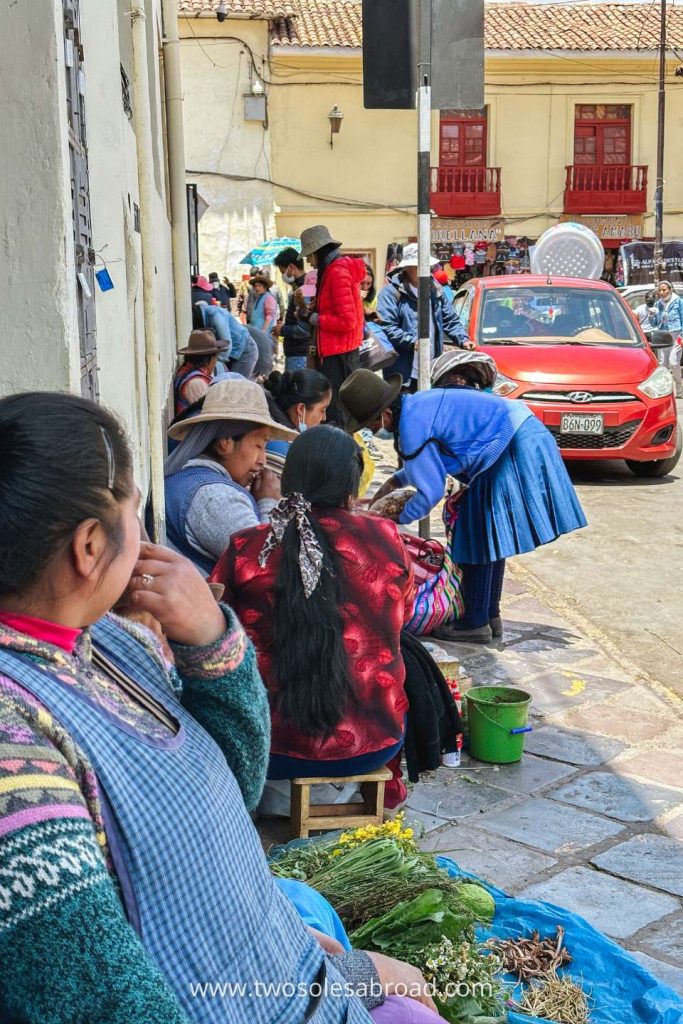
20. Cusco’s Inka Ruins: A Trip Back in Time
Cusco is packed with Inka ruins that showcase the mind-blowing building skills of this ancient civilization. It’s super cool to see these structures all over the city and in special spots. The Inkas were incredible builders, using a technique called ashlar masonry to carefully shape and fit stones together without mortar. This made their structures strong enough to withstand earthquakes and centuries of wear and tear. For an up-close look at the best Inka masonry, be sure to visit Sacsayhuaman, Qorikancha, and Ollantaytambo. You’ll be amazed by the history and intricate stonework that has stood the test of time.
To make the most of your time, consider hiring a trusted driver who can double as a knowledgeable guide.
🚗 CUSCO DRIVER: If you’d like a recommendation for a fun and reliable driver in Cusco who took us all over the top locations, feel free to contact us via Instagram , and we’ll gladly share his contact information.
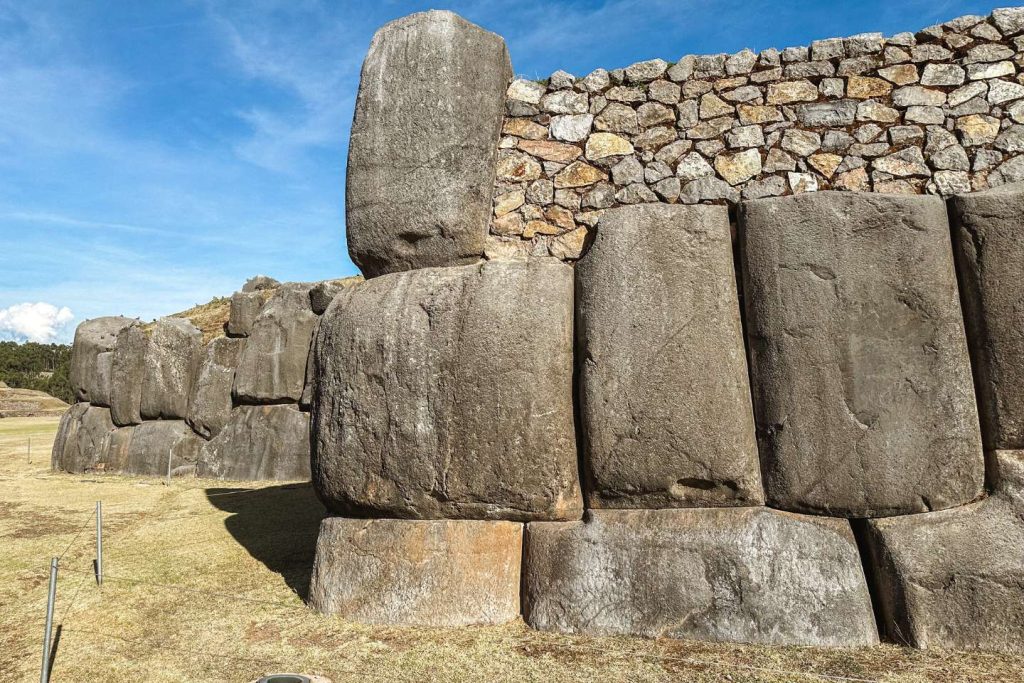
21. Coca Leaves: A Natural Remedy
Coca leaves are a natural remedy for altitude sickness, and we found them super helpful in Cusco. You can chew them or enjoy coca tea, which has a mild minty flavor and is widely available all around town. But be aware that they could show up on a drug test when you get back home. Also, exercise caution when taking coca leaves out of Peru, as they’re illegal in many countries, so we would not recommend doing so. In addition to coca leaves, you might want to try some local herbal remedies or even consult a doctor before your trip to help prevent altitude sickness.

22. Festivals: Join the Celebration
Cusco is always buzzing with festivals throughout the year, and we found that there was always something happening around the city, especially in the Plaza de Armas. Every time we visited the area, there were celebrations and festivals, creating a lively and vibrant atmosphere. Joining in on these events is an awesome way to dive into Cusco’s rich culture. From traditional music and dance performances to delicious street food, there’s always something new to discover and enjoy during these festivities.
🦙 Find fun things to do in Cusco
23. Music to Your Ears: The Soundtrack of Cusco
Music is everywhere in Cusco, and it truly adds an amazing vibe to the city as you explore its streets. The abundance of street musicians playing traditional Peruvian tunes on their Andean instruments like the pan flute and the charango, is something else, and we fell in love with the unique, magical sounds that filled the air. It’s an experience that stays with you long after you’ve left the city.
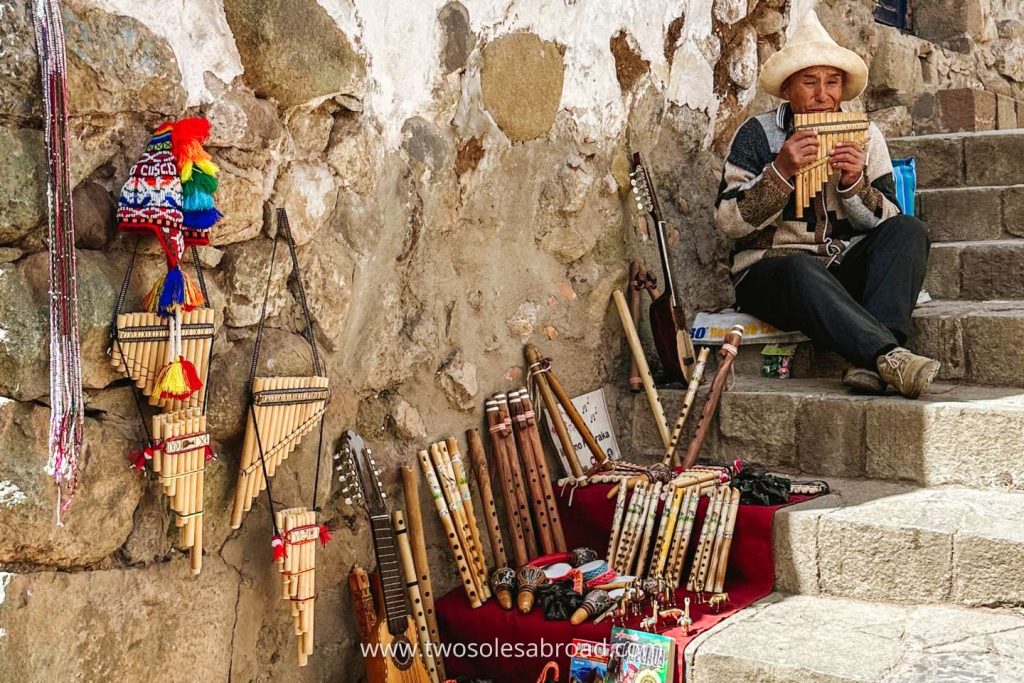
24. Travel Insurance: Better Safe Than Sorry
Make sure you have comprehensive travel insurance that covers medical emergencies, lost luggage, and trip cancellations. We often use SafetyWing insurance, an affordable option with great coverage. Additionally, take the time to read the fine print and understand what your policy covers, so you can have peace of mind during your trip. Some credit cards also offer travel insurance benefits, so it’s worth checking if you already have coverage before purchasing a separate policy.
IMPORTANT: Most travel insurance policies don’t cover high-altitude accidents like those on Rainbow Mountain. Double-check with your provider about their altitude limit, especially considering Cusco’s sky-high location. If you know a reliable insurance provider that covers high altitudes and sports, let us know in the comments or contact us on Instagram – we’d love to learn more!
🛟 Check out our favorite travel insurance
25. Haggling: Bargain Like a Champ
When we first visited Cusco, we quickly realized haggling is pretty common. But it’s important to find the sweet spot between scoring a deal and respecting the locals’ livelihood. It is how they make their living, after all, so be fair. Before diving into haggling, try asking non-vendor locals or hotel staff what they think a fair price would be. And always remember to be polite and keep your sense of humor during the process. It’s also helpful to familiarize yourself with the local currency and carry small bills and coins, making transactions smoother and more convenient for everyone.
26. Alpacas, Llamas, and Vicuñas: What’s the Difference?
Before heading to Cusco, we couldn’t tell an alpaca from a llama. But no worries, the friendly locals are more than happy to teach you the difference between these fascinating animals. Alpacas are smaller and have softer, denser fleece, while llamas are larger and have coarser hair. Alpacas also have fluffier faces compared to llamas. Vicuñas are smaller and rarer than both, known for their fine, luxurious wool. You’ll definitely run into these animals in Cusco and the surrounding areas, so don’t be afraid to ask questions about them!
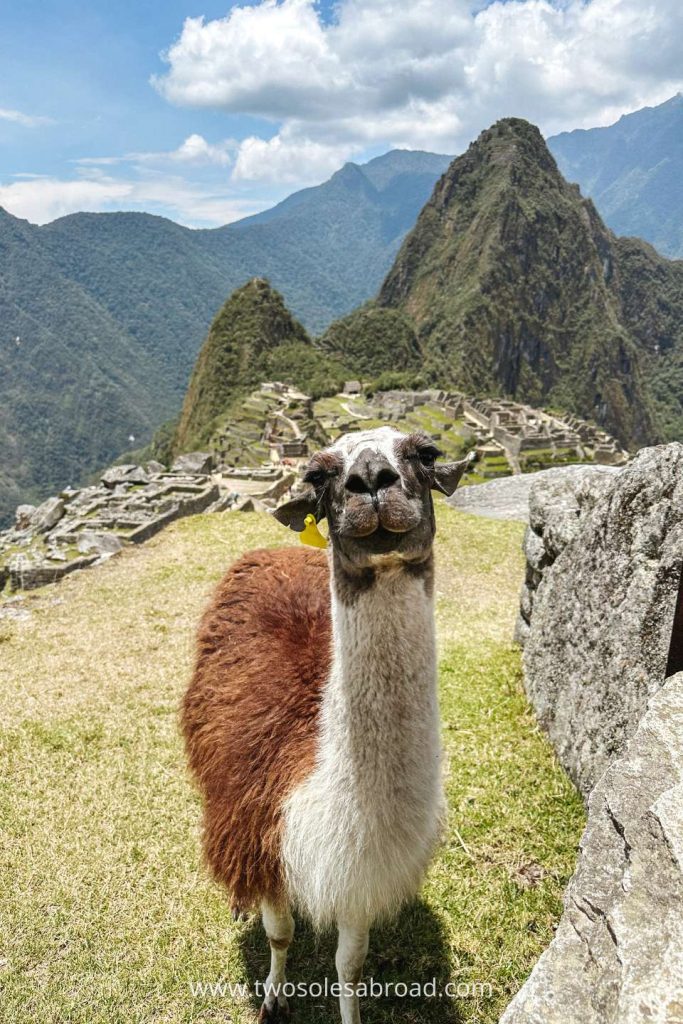
27. Don’t forget your passport!
One thing you absolutely need for Machu Picchu is your passport. You’ll need it to enter the site or even to buy a bus ticket to get there. For Rainbow Mountain, you don’t necessarily need your passport, but it’s a nice touch if you want to get a stamp on the mountain. We forgot our passports for Rainbow Mountain, but luckily, we were still able to get the unique stamp souvenir back in Cusco. Yes! You can get your passport stamped in the city, and it is even cheaper. It’s a cool little keepsake, but trust me, it’s even more special if you get it stamped while you’re actually there.

28. ATMs in Cusco: Cash is King
You’ll find ATMs all over Cusco, so it’s easy to grab cash when you need it. But remember, some ATMs have withdrawal limits or fees. We found it super helpful to have cash on hand for small purchases like souvenirs, street food, transportation, and tips as not all places accept cards. To avoid any issues, consider withdrawing enough cash for a few days at a time, and keep track of your daily spending.
29. Sun Protection: Don’t Underestimate the Andean Sun
I can’t stress enough how important it is to protect yourself from the sun in Cusco. The high altitude means the sun’s rays are stronger, and we really noticed this at Machu Picchu. So, make sure you wear a hat and sunglasses and apply sunscreen with at least SPF 50. You can find tons of places to buy authentic, locally made hats in Cusco, so don’t worry about bringing one from home.
Our absolutely favorite hat store in Cusco is Casa Pallay . The owner is a sweet, wonderful, and fun person, and she offers a beautiful selection of 100% alpaca hats. She also has other beautiful alpaca and wool products made by Quechua women, and she supports natives with each purchase. Her hats are absolutely beautiful and unique, and we highly recommend them. They are officially our favorite hats! They might be on a bit pricier side, but they’re absolutely worth it.

Popular Questions
Do i need a visa to visit peru.
Most visitors from the US, Canada, and EU countries don’t need a visa for stays up to 90 days. Check with your local Peruvian consulate for specific requirements.
Can I use US dollars in Cusco?
US dollars are widely accepted, but it’s a good idea to carry local currency for smaller transactions and in case businesses don’t accept dollars. Plus, you’ll often get a much better deal if you use the local currency (Peruvian Soles) instead of US dollars, as some vendors may charge a higher rate for transactions in USD.
Is it safe to eat street food in Cusco?
Street food can be both delicious and safe if you choose vendors with a high turnover and clean prep areas. Just use your judgment and follow the locals.
Can I take coca leaves from Peru?
It’s important to note that while coca leaves are legal and widely used in Peru, they’re considered illegal in many other countries. To avoid any issues, enjoy coca leaves and coca tea while you’re in Peru and don’t attempt to take them home with you.
What vaccinations do I need before visiting Cusco?
It’s recommended to be up-to-date on routine vaccinations, such as MMR, flu and tetanus. Additionally, consider vaccinations for hepatitis A and typhoid. Consult your doctor or a travel clinic for personalized advice.
How do I get from Cusco to Machu Picchu?
The most popular way to get to Machu Picchu from Cusco is by taking a train to Aguas Calientes and then hopping on a bus up to the site. If you’re up for an adventure, you can also hike the Inca Trail or other treks, which usually last a few days.
Is Cusco safe for solo female travelers?
Generally, Cusco is considered safe for solo female travelers. That being said, it’s essential to take precautions, like avoiding dimly lit areas at night and not flaunting valuable items. Opting for reputable accommodations and joining group tours can also boost your safety.
Can I use my credit card in Cusco?
Many establishments in Cusco accept credit cards, particularly hotels and upscale restaurants. However, smaller businesses and market vendors may require cash, so it’s a good idea to carry some local currency with you.
What is the weather like in Cusco?
Cusco has a subtropical highland climate with two distinct seasons. The dry season (May to October) is cooler and sunny, while the wet season (November to April) is warmer with frequent rainfall. Temperatures can vary greatly between day and night, so make sure to bring layers.
Are there any must-try dishes in Cusco?
Apart from ceviche, lomo saltado, and alpaca, you should also try quinoa soup, rocoto relleno (stuffed spicy peppers), and causa (a layered potato dish). For dessert, give picarones (Peruvian doughnuts) or suspiro a la limeña (a caramel and meringue treat) a go. And if you’re feeling adventurous, don’t miss out on the chance to taste guinea pig, a traditional Peruvian delicacy known as cuy.
Do I need travel insurance for Cusco?
Travel insurance is highly recommended for any trip, including visits to Cusco. Ensure your policy covers medical emergencies, evacuations, lost luggage, and trip cancellations or delays. Additionally, although it might be hard to find, try to look for a policy that includes coverage for high-altitude accidents or activities, as this can be an added plus, especially considering Cusco’s elevation and the possibility of participating in high-altitude treks or excursions like Rainbow Mountain.
What should I pack for my trip to Cusco?
Pack lightweight, breathable clothing that can be layered to accommodate changing temperatures. Include a rain jacket, comfortable walking shoes, sun protection, a reusable water bottle, a portable charger, a voltage converter, and a plug adapter.
Is Cusco worth visiting?
Absolutely! Cusco is an amazing city with a deep history and a lively culture. As the Inca Empire’s former capital and a UNESCO World Heritage Site, Cusco presents visitors with an exceptional blend of indigenous and colonial architecture, captivating archaeological sites, vivid markets, and dynamic festivals. Additionally, Cusco is the gateway to iconic attractions like Machu Picchu, the Sacred Valley, and Rainbow Mountain. No matter what floats your boat—be it history, culture, nature, or adventure—Cusco’s got it all, making it a must-visit spot for anyone visiting Peru.
Ureta Hotel: The Coziest Stay in Cusco
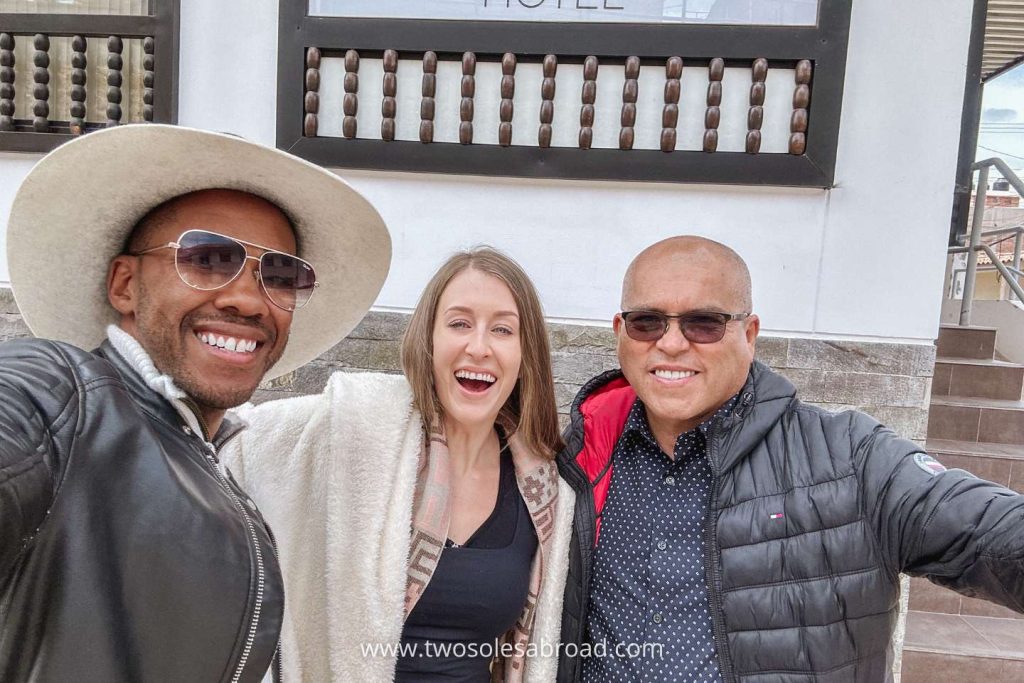
If you’re looking for the best hotel in Cusco, your search can end with Ureta Hotel! It may not be fancy or prestigious, but what sets it apart is the warm and welcoming atmosphere created by Victor, the owner. With his heart of gold, this kind and caring man made us feel at home from the moment we arrived. He went above and beyond to make our stay special, from preparing delicious breakfasts with local ingredients to sharing stories about Cusco’s rich history and traditions. He even woke up at 3 am to pack us snacks and drinks for our Machu Picchu adventure—how thoughtful is that?
We quickly became friends, and it felt like we were part of the Ureta family! Plus, Ureta Hotel is super affordable, so if you’re after a cozy atmosphere and the chance to make a lifelong friend, give it a try.
If you prefer something more luxurious, there are plenty of fancy options in Cusco. But trust us, Victor’s genuine warmth, generosity, and infectious smile made our stay unforgettable. And no, we weren’t paid or asked to say any of this – he’s just that amazing. Just check out the rave reviews online, and you’ll see what we mean!
Oh, and don’t worry if your Spanish isn’t perfect – we used a translation app to chat with Victor, and it was a blast!
If you choose to stay at Ureta Hotel, be sure to say hi to Victor from Maja and Marcel, and tell him we said, “Go to sleep, Victor!”
🏨 Book Ureta Hotel
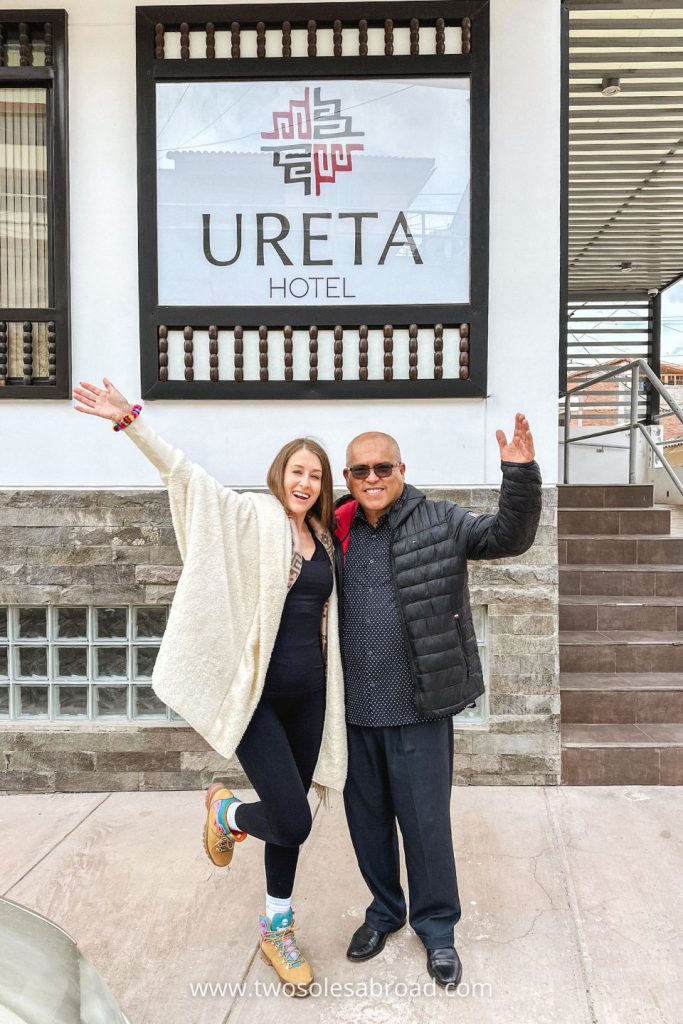
To sum it up, Cusco is an out-of-this-world destination that offers a truly memorable experience, all thanks to its awesome history, lively culture, and jaw-dropping natural beauty. We’ve shared various crucial tips and insights to help you get the most out of your Cusco adventure, from adjusting to the altitude and savoring local dishes to discovering iconic places like Machu Picchu and Rainbow Mountain. We hope these suggestions not only smooth out your journey but also deepen your love for this incredible city and its warm, welcoming residents.
Now it’s time for you to chime in! Have you visited Cusco, or are you planning a trip in the near future? What tips or suggestions do you have for fellow travelers? We’re super excited to hear your stories, recommendations, and any burning questions you might have. Just leave a comment below, and let’s keep this conversation going. Happy travels!
Top 30 Best Gifts For Travelers
The Ultimate South America Travel Guide
The Ultimate Peru Travel Guide
- Last updated: April 2023
We’d love to know what you think about this post!
Become a part of our travel community on YouTube , TikTok , Instagram , or Facebook and tell us all about your adventures. Or, simply share your thoughts in the comments below!
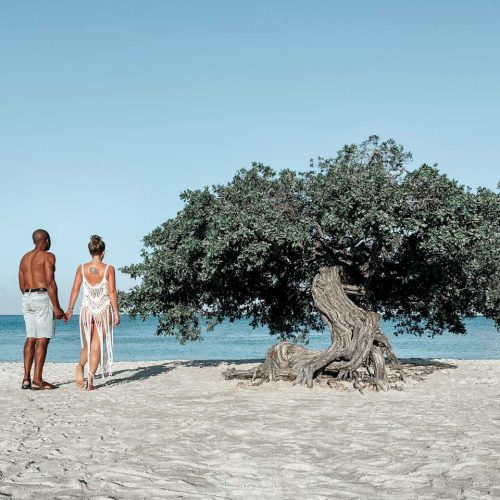
Hey! Maja & Marcel here!
Our goal is to inspire you and simplify your travel planning by sharing practical tips from our years of traveling around the globe. Join us as we reveal unique experiences and amazing destinations through engaging travel blogs, photos, and videos.Are you ready to join our exciting and unpredictable journey?
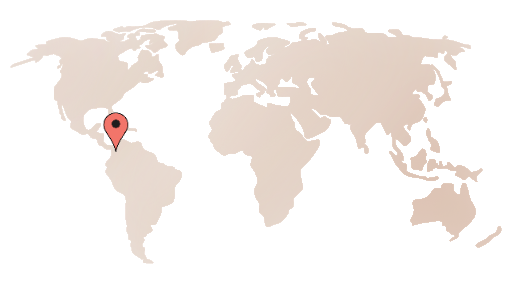
Medellín, Colombia
We are so glad you are on this journey with us. If you are enjoying our free travel guides & tips, then consider contributing to our work.
Every time you support us, a camel gets a new hump.
Book a Hotel
Book Cheap Flights
Find Experiences
Get Travel Insurance
WorldNomads
Find Transit
Subscribe to our newsletter for unforgettable travel inspirations , tips, giveaways, and more!
Cheap Flights
Experiences, related posts.

The Scammy Side of Tulum You Gotta Know About
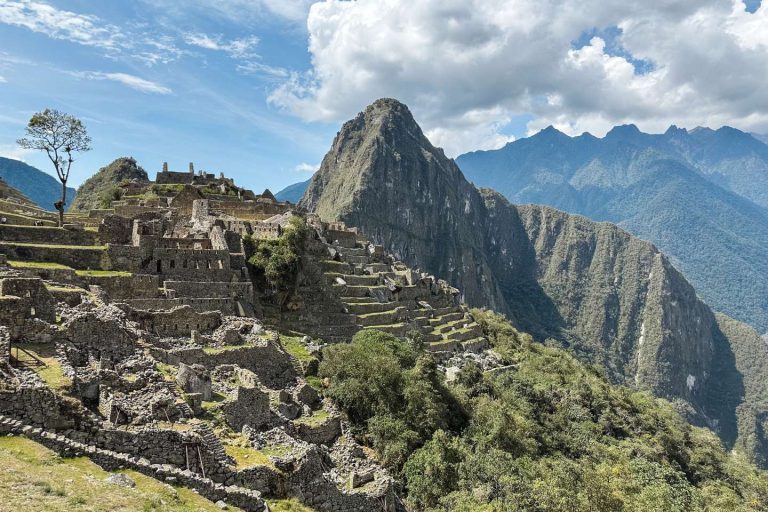
Machu Picchu on Your Own: A Step by Step Guide
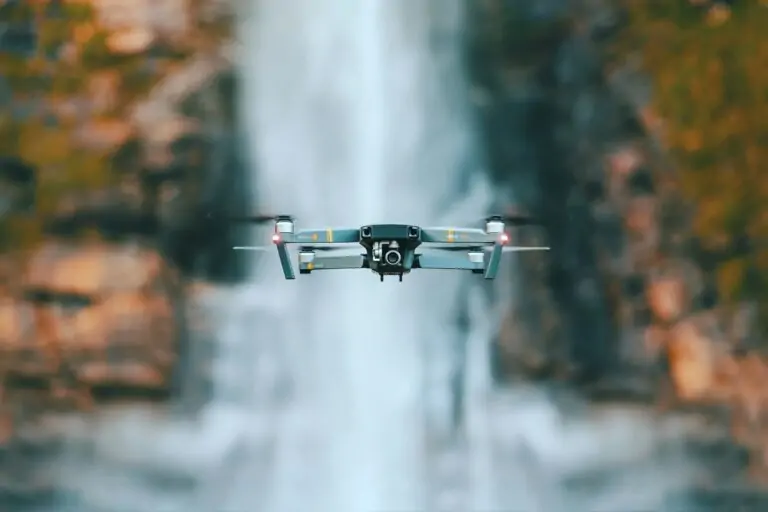
Can I Bring a Drone to Mexico?
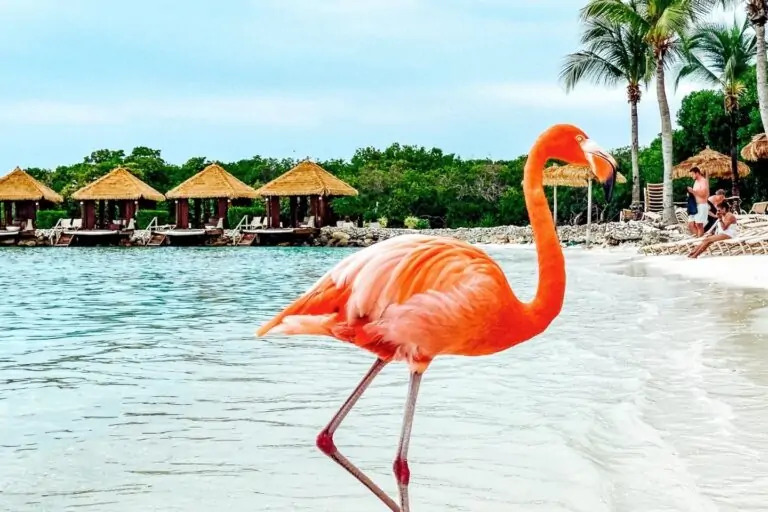
How To Visit Flamingo Beach in ARUBA. FULL GUIDE.

10 Top Attractions in Fortaleza, Brazil
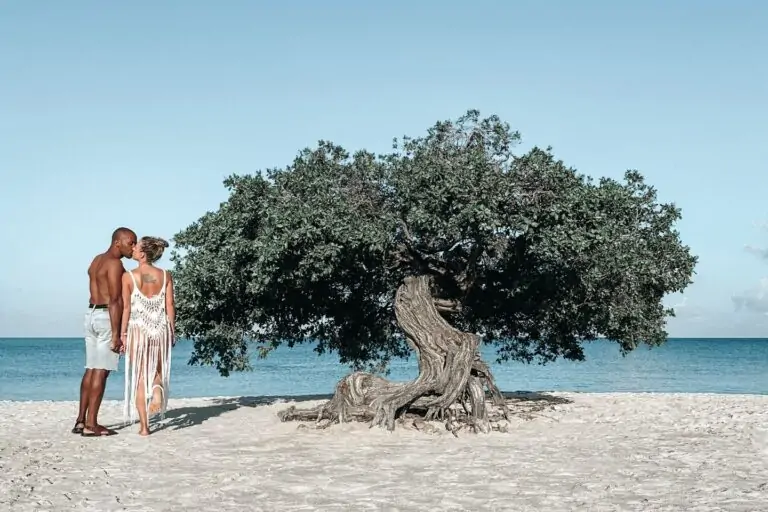
Top 19 Best Things To Do in Aruba
Get inspired.
Subscribe to out newsletter for amazing travel inspirations, tips, giveaways and more!
Leave a Comment Cancel Reply
Save my name, email, and website in this browser for the next time I comment.
Enigma Blog
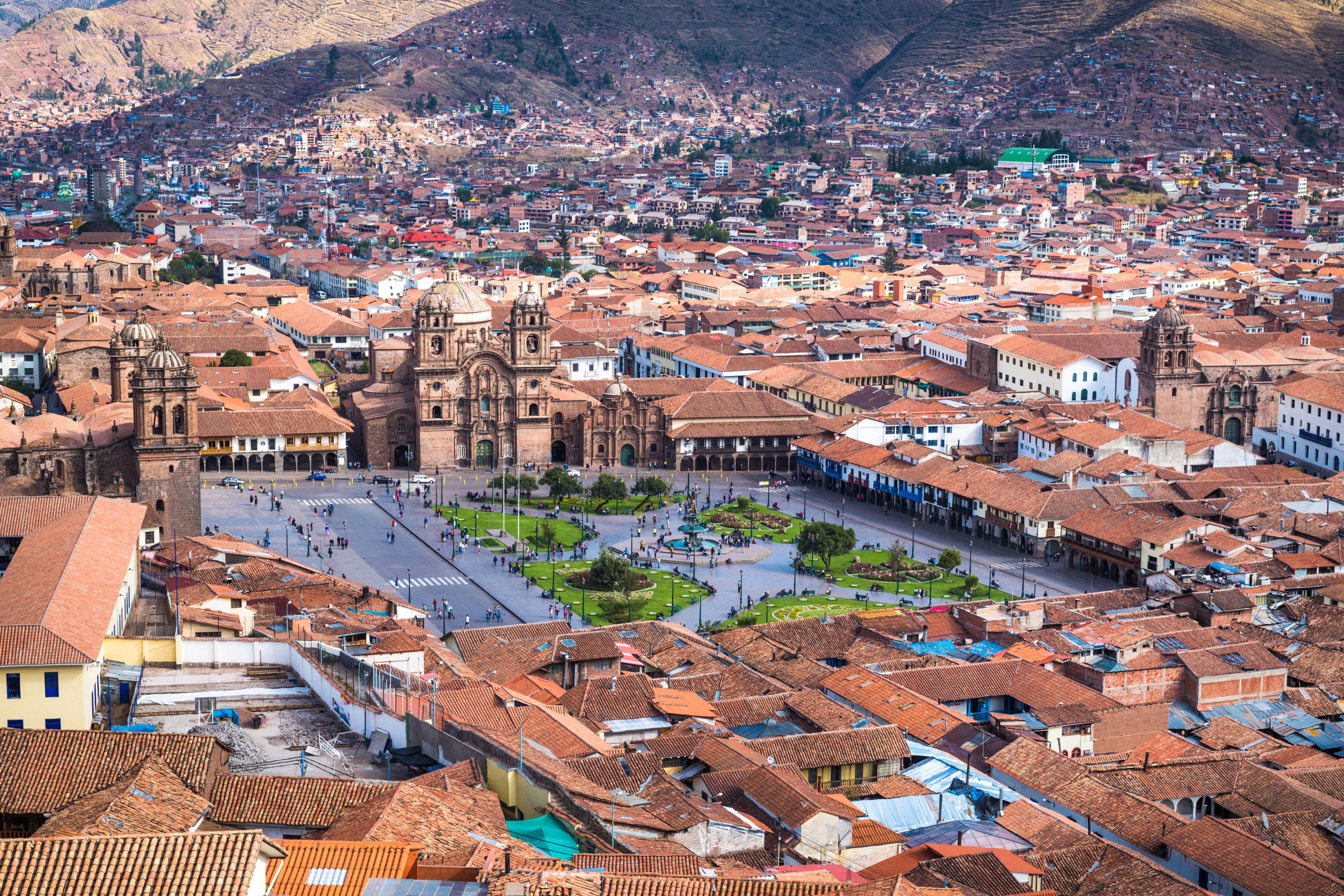
- Cusco , Destinations
- June 30, 2023
Reasons to Visit Cusco, The Capital of the Peruvian Andes
Cusco, the heart of the Peruvian Andes, captivates with its unique blend of history, culture, and excitement. Once the capital of the Incan Empire, Cusco is now a bustling city with beautiful architecture that serves as a gateway to the vast Andean landscapes. This city is replete with tales of its glorious past and pulsates with activity in the present.
As you traverse the narrow cobblestone streets, you will discover a world in which the old and the new coexist peacefully. With the majestic Andean peaks as a beautiful backdrop, the city’s skyline is a stunning combination of Inca ruins and colonial structures.
The past is not confined to museums in Cusco; it is also present in the city’s streets, plazas, markets, and festivals. The city is more than a tourist destination; it is a living, breathing entity brimming with vitality and energy. Every moment is an opportunity to learn, discover, and experiment.
Planning a trip to Peru? Here are some reasons to visit Cusco, the capital of the Peruvian Andes.
The Rich History of Cusco

The history of Cusco is as captivating as its landscapes. The city served as the capital of the Inca Empire, which flourished between the 13th and 16th centuries. The Incas referred to Cusco as the “Navel of the World” because it was a sacred city where the lines of Ley, or spiritual energy, intersected.
The city’s impressive stone walls, the most famous of which is Sacsayhuaman, demonstrate its Inca heritage. This fortified complex, with its enormous, intricately carved stones, is evidence of the Incas’ architectural brilliance.
In the sixteenth century, Cusco was conquered by the Spanish, who left their mark on the city’s architecture and culture. The baroque-style Cusco Cathedral, which was constructed atop the ruins of an Inca palace, is among the finest examples of colonial architecture in the Americas.
Cusco remained an important cultural and economic center despite the Spanish conquest. This period saw the emergence of the Cusco School of painting, characterized by its fusion of European and indigenous styles.
In 1821, Peru attained independence from Spain, but Cusco did not benefit immediately. However, tourism began to flourish in the 20th century as interest in the ancient Inca civilization grew. Machu Picchu, which was rediscovered by Hiram Bingham in 1911, became a popular tourist destination.
Cusco has grown and developed significantly in recent years. It is now a UNESCO World Heritage Site and the principal hub for tourists visiting the Sacred Valley and Machu Picchu. Cusco’s blend of Inca and Spanish colonial architecture has allowed the city to retain its distinct character despite modernization.
The history of Cusco is a living testament to the city’s resilience and cultural diversity.
The Unique Culture of Cusco
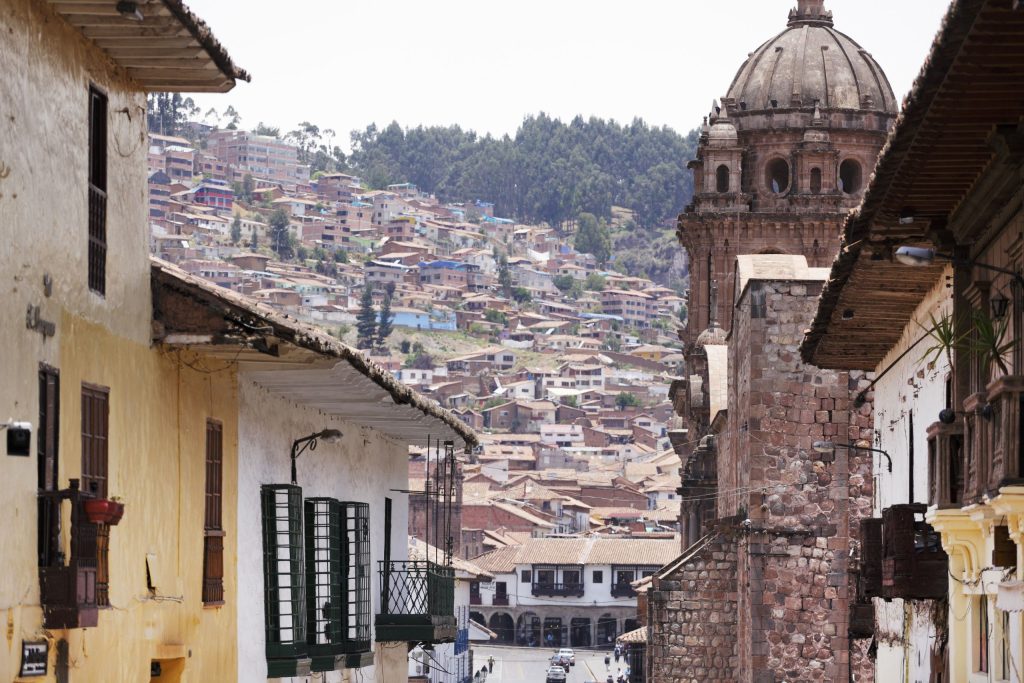
Culture in Cusco is a vibrant tapestry, woven with threads of Inca traditions and Spanish influences. The Quechua language, once the lingua franca of the Inca Empire, is still spoken here, adding to the city’s unique cultural charm.
The local artisans of Cusco uphold the city’s rich artistic traditions. From intricate weavings to colorful pottery, their handiwork is a sight to behold. The San Blas neighborhood, known as the artist’s quarter, is an ideal place to explore the city’s artistic heritage.
Cusco is a remarkable fusion of Inca and Spanish colonial architecture. Ancient Incan walls and temples, such as Qorikancha (Temple of the Sun), seamlessly blend with Spanish colonial architecture as you stroll through the city. The Incas designed the layout of the city, which is still in use today.
Festivals and music are integral to Cusco’s culture. Whether it’s the colorful Inti Raymi festival or the soulful notes of Andean pan flutes, the city’s cultural expressions are as diverse and captivating as its landscapes.
Cusco’s pre-Hispanic and colonial music and dance are unique. Traditional Andean music uses wind and percussion instruments, and many festivals and celebrations include folk dances with colorful costumes.
Due to Spanish colonialism, Cusco is mostly Roman Catholic. However, Catholicism and Andean spirituality often blend.
Amazing Landmarks in Cusco

Cusco, often referred to as the “Archaeological Capital of the Americas”, is rich with historical landmarks, many of which are a testament to its Incan past and Spanish colonial history. Here are some of the amazing landmarks to explore when you visit Cusco;
Machu Picchu
Machu Picchu , although not in Cusco, is a must-see landmark. Cusco is the gateway city to the Inca citadel. This ancient Incan city is high up in the Andes Mountains. It is a UNESCO World Heritage Site and one of the New Seven Wonders of the World. It is the most well-known archaeological site in South America.
Sacsayhuamán
This colossal Inca fortress overlooks the city of Cusco. The impressive dry-stone walls of Sacsayhuamán were built by fitting boulders together without mortar. A grand ceremony is held here every year during the Inti Raymi festival.
Cusco Cathedral
The cathedral on Cusco’s Plaza de Armas, the city’s main square, is an example of colonial Baroque architecture. It is renowned for its Cusco School of Painting art collection and ornate altar.
Once the most significant temple in the Inca Empire, Qorikancha (or Coricancha) was devoted to the Sun God’s worship. After the Spanish conquest, Inca stonework was incorporated into the construction of the Church of Santo Domingo.
San Blas Neighborhood
The narrow, steep streets of San Blas, known as the artisans’ quarter, are lined with workshops and galleries. On the summit of the hill, the San Blas Church contains a beautifully carved wooden pulpit.
Twelve-Angled Stone
This stone, which is located on Hatun Rumiyoc street, is a masterpiece of Incan stonework. The stone has precisely twelve angles that fit perfectly with the surrounding stones, demonstrating the Inca’s superior stone-cutting skills.
Pisac is worth the trip, despite its distance from Cusco, due to the fact that its Inca ruins have been preserved so well. It has a lively market where local artisans sell textiles, clothing, and jewelry.
Moray and Maras
In the Sacred Valley , these Incan agricultural terraces and salt mines are remarkable. The Incas may have used Moray’s circular terraces as a farm lab.
Each of these landmarks showcases Cusco’s Incan heritage, colonial past, and vibrant contemporary culture.
The Natural Beauty of the Peruvian Andes

The natural beauty of the Peruvian Andes is truly breathtaking, with its snow-capped peaks, verdant valleys, and tranquil lakes. No trip to Cusco would be complete without taking in these breathtaking views.
The Sacred Valley is a must-see for its picturesque Andean villages and Inca ruins. This fertile valley, once the Inca Empire’s breadbasket, is a place of enchanting beauty and serene tranquility.
For those seeking adventure, the Inca Trail offers an exhilarating trek through the Andean highlands, culminating in the spectacular Machu Picchu, the lost city of the Incas. This UNESCO World Heritage Site, perched high in the Andes, is one of the world’s most recognizable landmarks.
Local Cuisine to Try in Cusco

Cusco is no exception to the culinary excellence of Peruvian cuisine . The city’s culinary scene is a tantalizing blend of traditional Andean flavors and contemporary cooking techniques.
In Cusco, cuy, or guinea pig, is a traditional delicacy. This dish, though it may sound exotic to some, is a must-try for foodies. Ceviche is a popular local dish consisting of raw fish marinated in citrus juices.
Try picarones, which are doughnuts made with sweet potato and drizzled with syrup, or churros con chocolate, a popular dessert consisting of fried dough sticks served with hot chocolate.
When you visit Cusco, you will discover a vibrant culinary scene that will allow you to taste Peru’s gastronomic diversity.
Adventure Activities in and Around Cusco
Cusco is a paradise for intrepid travelers. From hiking to white-water rafting, the city and its environs offer an abundance of exciting activities.
As mentioned previously, the Inca Trail is a popular trek that takes you through breathtaking Andean landscapes to Machu Picchu. However, this is not the only trek in the area. Both the Salkantay and Lares treks offer awe-inspiring landscapes and cultural encounters, making them equally rewarding alternatives.
White-water rafting on the Urubamba River and zip-lining in the Sacred Valley are thrilling activities that adrenaline junkies should not miss.
Traditional Festivals and Events in Cusco
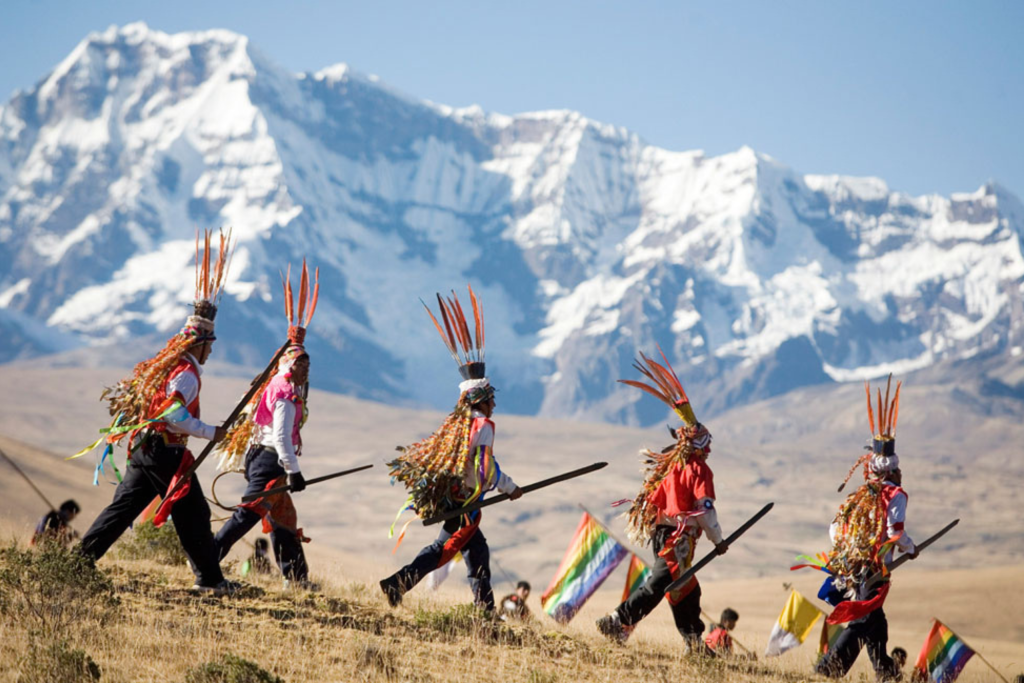
The Cusco calendar is jam-packed with traditional festivals and events, each of which provides a unique glimpse into the city’s vibrant culture. In June, Inti Raymi, or the Festival of the Sun , is one of the most important celebrations. This spectacular event commemorating the winter solstice is a recreation of an Inca sun worship ceremony.
In May, the city celebrates the Lord of Qoyllur Rit’i, a pilgrimage to the Sinakara Valley in the Andes attended by thousands of devotees. The festival is a blend of Catholic and Andean traditions, reflecting Cusco’s cosmopolitan culture.
Corpus Christi, observed 60 days after Easter, is a significant event on the Christian calendar. A procession of 15 statues of saints and virgins from various districts to the Cathedral of Santo Domingo in the Plaza de Armas is one of the holiday’s distinctive local characteristics in Cusco. Chiriuchu, a traditional dish containing guinea pig and chicken, is also associated with this event.
Pachamama Raymi takes place in August and celebrates Pachamama , the Mother Earth deity in Inca mythology. In celebrations, offerings are made to the earth to ensure abundant harvests and general well-being.
When you visit Cusco, you will find plenty of things to do.
Planning Your Trip to Cusco: Practical Tips
Cusco travel planning necessitates practical considerations. The city is located at a high altitude, so it is essential to acclimate in order to avoid altitude sickness.
The best time to visit Cusco is between May and September, during the dry season, when the weather is suitable for outdoor activities. Nevertheless, the city may be crowded during this time, especially in June when the Inti Raymi festival is held.
Remember to pack clothing for all types of weather, as daytime and nighttime temperatures can vary significantly. Do not forget your hiking boots if you intend to hike the Inca Trail or any other trail.
However, you can also visit Cusco all year round, with each season offering its own unique experiences.
Cusco is much more than a city. It is a journey through time, an immersion in culture, an adventure playground, and a culinary delight.
The city’s rich history, unique culture, amazing landmarks, and landscapes make it an essential travel destination.
So, why wait? Plan to visit Cusco , the charming capital of the Peruvian Andes and get ready to fall in love with its charm.
Ready to start planning your custom journey to Cusco, Peru? Contact us at [email protected] and let’s make it happen!
⟵ BACK TO JOURNAL
BROWSE BY CATEGORY
HOME ARTS & CULTURE DESTINATIONS EXPERIENCES SUSTAINABILITY PERU TIPS
TRENDING POSTS
RECENT ENTRIES
Leave a Reply Cancel reply
Your email address will not be published. Required fields are marked *
Save my name, email, and website in this browser for the next time I comment.
Related posts

The Ultimate Guide to Huaraz, Peru’s Hiking Capital
Huaraz is a hidden gem nestled in the heart of the Andes Mountains in Peru.

The Mysteries of Ollantaytambo: A Look into Peru’s Incan Past
As you travel through the rich tapestry of history, you will find yourself drawn to

Bucket List Experiences: Exciting Things to do in Cusco
Cusco is a city full of history, culture, and beautiful natural areas. This charming city
Subscribe To Our Newsletter
Subscribe to our email newsletter today to receive updates on the latest news, tutorials and special offers!
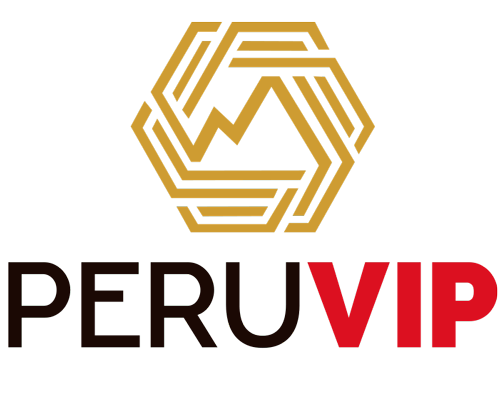
Home » Blog » Why Visit Cusco?
Why Visit Cusco?
Exploring the Magic of Cusco: Reasons to Visit this Peruvian Treasure
Previously if there is one destination that truly embodies the essence of Peru, it is Cusco. This magical corner nestled in the Peruvian Andes is a place that should be on the bucket list of any traveler passionate about history, culture and natural beauty.
In this extensive blog, we will explore the captivating reasons to visit Cusco and immerse yourself in luxury adventure in the heart of the Andes.

Table of Contents
15 reasons why to visit Cusco
1. Let’s start with the Mystery of Machu Picchu
First of all, let’s start with Cusco’s most recognized icon: the Machu Picchu Citadel. This ancient Inca site, declared one of the New Wonders of the World, is an architectural marvel and a historical enigma. Getting lost among the ancient ruins while contemplating the surrounding mountains is a spiritual experience. Machu Picchu connects you with the past, inspires you and makes you appreciate the ingenuity of the Inca civilization.
2. Luxury Hotels in Epic Settings
In other words, Cusco offers you a wide variety of luxury hotels that blend perfectly with the natural beauty that surrounds them. From restored old haciendas to modern accommodations with panoramic views of the Andes, Cusco’s lodging experience is as memorable as its attractions. Luxury hotels are an essential part of the travel experience, and in Cusco, they exceed all expectations.

“Discover magical Cusco, a journey that will change your life forever.”
3. A Gastronomic Adventure
Peruvian cuisine has conquered the world, and in Cusco, you can explore its roots. Try emblematic dishes such as ceviche, lomo saltado or aji de gallina in high-end restaurants or street stalls. The fusion of Peruvian flavors with local ingredients and modern culinary techniques is a delight for the senses.
4. Scenic Walks and Breathtaking Landscapes
Cusco’s surroundings offer endless opportunities for trekking in breathtaking natural scenery. From the iconic Inca Trail hike that takes you to Machu Picchu to lesser known routes such as the hike to the Humantay Lagoon or the Sacred Valley, you will immerse yourself in dreamlike landscapes and connect with nature in a unique way.
5. In the Heart of the Inca Culture
Why visit Cusco, a place where past and present intertwine. The Inca heritage is alive in the cobblestone streets, in the festivities and in the local population that continues to preserve ancestral traditions. Explore markets full of handicrafts, attend authentic festivals and discover the rich culture that permeates every corner of this city.

“Cusco, a place where the earth touches the sky and the heart finds its way.”
6. Handcrafted Jewelry and Unique Art
Therefore, Cusco is a paradise for handicraft lovers. From intricate textiles to handmade pottery and jewelry, you can purchase unique souvenirs that tell stories of the region. In addition, you will discover a vibrant art scene in the local streets and galleries.
7. Unique Emotions and Adventures
If you are looking for excitement, Cusco has a lot to offer. From mountain biking in the mountains to rafting on the Urubamba River and hot air ballooning over the Sacred Valley, the adventure options are endless. Experience the thrill in the midst of spectacular scenery.

8. Then the Wonders of the Sacred Valley
The Sacred Valley of the Incas, located near Cusco, is a treasure trove of natural and cultural beauty. Here you will find breathtaking mountain scenery, fertile valleys and authentic villages. In addition to its spectacular surroundings, the Sacred Valley is home to archaeological sites, such as Ollantaytambo, that transport you to the Inca past.
9. The Richness of Flora and Fauna
In fact, the biodiversity in Cusco is astounding. From watching condors flying over the Colca Canyon to spotting the variety of birds in the Manu cloud forest, nature lovers will be impressed by the wildlife that inhabits this region.
10. Unique Traditions and Festivals
Cusco is a place of vibrant festivals and unique traditions. From the Inti Raymi celebration, which pays homage to the Inca god of the sun, to the Cusco Carnival, which is an explosion of color and music, you will have the opportunity to participate in authentic festivities and witness the devotion of the local people.

“Adventure awaits you in Cusco, where memories are as precious as Inca gold.”
11. Learning from Living History
Besides, Cusco is not a history museum; it is living history. Strolling through its cobblestone streets and visiting sites such as Sacsayhuaman, you will have the opportunity to immerse yourself in the Inca and colonial legacy that continues to influence the life of the city.
12. Hospitality and Warmth
It should be noted that Cusqueños are known for their hospitality and warmth. The local people will greet you with smiles and make you feel at home. Their stories, music and joie de vivre will leave a lasting impression.

13. Subway Adventures
Because Cusco not only offers wonders on the surface; it also harbors impressive subway adventures. Explore the enigmatic caves of Catacancha or enter the tunnels of Chinchero, where archaeology and exploration come together.
14. Cusco by night
Just as the nights in Cusco are just as captivating as the days. The city comes alive with cultural shows, traditional dances and a lively nightlife. Enjoy a dinner overlooking the city or join a folkloric peña to experience Cusco culture at its best.
15. Finally the Spiritual Connection
To clarify many travelers find a deep spiritual connection in Cusco. The energy of the Andes, the sacred history and the calm of nature can bring you to a state of reflection and inner peace.

“The Andes are calling you, Cusco awaits you, and the adventure begins here.”
In conclusion, because visiting Cusco is much more than a tourist destination; it is an unforgettable experience that takes you through time, culture and nature at its best. Every corner of this city and its surroundings is full of surprises that will motivate you to explore, learn and enjoy.
For example, whether you are a history buff, a food lover, an avid adventurer or someone in search of serenity, Cusco has something that will motivate you to explore, live and experience the magic of the Peruvian Andes. Your next luxury adventure awaits you in Cusco.
Do not hesitate to plan your trip and let yourself be carried away by the charm of this Peruvian treasure!
Above all, the magic of Cusco awaits you, do you dare to discover it?
- Bolivia Destination
- Cusco Destination
- Destino Cusco
- Destino Ecuador
- Peru Destination
- Gastronomic Exploration: Delights to Discover
- Exploración Gastronómica: Delicias por Descubrir
- Peru with flavor
- Perú con sabor
- Galapagos Underwater Experience with Galaxy Diver
- Experiencia submarina de Galápagos con Galaxy Diver
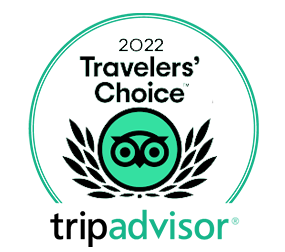

What are you looking for?
27 best things to do in cusco, peru in 2024 [by a local].
As far as imperial cities go in South America , Cusco is hands-down one of the best you can visit.
With remnants of an ancient culture, many mesmerizing sites as well as a charming local life, it makes for a truly superb cultural destination.
There’s a famous adage among those in the backpacking community, in that many who come to Cusco never end up leaving. And once you’re here, you’ll know exactly what all that fuss is about!
In this sizable guide to Cusco, we’ll explore everything you need to know to get the very most out of your trip here.
This includes how to get to Cusco, the best things to do, where to stay, the best time to visit as well as some advice on budgeting!
This city is undoubtedly one of the best places to visit in Peru so let's take a look at why you should visit...
Travellerspoint
Getting to Know Cusco
Why visit cusco.

I think the question should be, why wouldn’t you want to visit Cusco?!
Located within the stunning Sacred Valley, it’s one of the most varied and captivating cities to visit within Peru.
Officially the oldest city of the Americas (over 3,000 years old), it was once the capital of the Inca Empire , a community who were known for their incredible customs and sprawling temples such as that of Machu Picchu.
Aside from the culture and landmarks within the city, Cusco is also a great base camp to use to explore the nearby region.
There are many stunning national parks, lakes, Inca ruins as well as ancient towns and markets just waiting to be explored.
Even when just taking the local colectivos around, your eyes will be glued to the windows as you witness the incredible landscapes of the Sacred Valley unfold before you.
How to get to Cusco

From a geographical standpoint, getting to Cusco would be no easy feat!
Located within the remote Andes mountains, it’s very far from the seaside capital of Lima .
Thankfully, though, we now live in an age where we can simply fly above most obstacles and terrains with ease.
There are dozens of direct flights to Cusco from Lima daily, which can be as cheap as $40 for a one-way ticket. For the best deals, check out Skyscanner !
You can also fly from other Peruvian cities such as Pucallpa, however there are no direct flights to Cusco from outside Peru.
The other way to get to Cusco is by bus, which is much cheaper as you can find some great deals on Red Bus .
Some popular routes include from Arequipa , which takes 10 hours, as well as from Puno which is around 8 hours. Of course we can’t leave out the infamous bus ride from Lima, which takes an eye-watering 22 hours (oh the memories).
Some of these bus journeys can be done overnight which will save you valuable exploring time. Trust me, this is one of our top travel tips as you'll save money on accommodation too.
Although you can fly around the country easily enough, the buses are the best option if you're backpacking Peru on a budget!
Getting around Cusco

There are many ways of exploring and navigating Cusco.
For the touristic sites, you can either hail a taxi or ride the hop-on hop-off bus to get around with ease.
For the more adventurous (and budget-minded travelers), there are many local buses you can take, although the schedules will vary and you’ll also need to check where is best to get off.
When it comes to exploring further afield and within the Sacred Valley, you have two options.
The first is going with tours, where you’ll have logistics handled for you which is a much better option for hiking trips into the more remote areas.
The other is using the local Colectivos, which are shared minivans. These are much cheaper, and a better option for flexible travelers who want to explore nearby towns like Pisac and Ollantaytambo at their own pace.
Where to Stay in Cusco?

It’s important to remember that Cusco is a big city, and as such has many districts and neighborhoods.
The overall best area is in the heart of El Centro Histórico, and your aim is to stay near the Plaza de Armas.
This is the most bustling area, close to many awesome restaurants, accommodation options and sites of interest.
Our top budget option is the Kokopelli Hostel . Having stayed here for over two weeks, it’s simply perfect with its lively atmosphere, and also for the incredible free breakfast included in the room rate!
If you’re aiming for a mid-range accommodation option, then we recommend staying at Posada Villa Mayor . It’s literally right on the Plaza de Armas, so you’ll be just footsteps from all the best restaurants and nightlife options.
For those who like a taste of luxury, then look no further than the Costa del Sol Wyndham in Cusco. Also next to the Plaza, here you’ll be staying in a colonial-style building which includes a breakfast buffet, as well as many Peruvian-style dishes to feast on.
If you're looking for a bargain, then check out our guide on how to get cheap hotel rooms ...
27 Best Things to do in Cusco, Peru
1. try local foods in the san pedro market.

What better way to kick off our list than by throwing yourself into Cusco’s most notorious food market?
Nestled in the Andean mountains, Cusco still retains much of its ancient culture despite modernization and increasing levels of tourism.
One of these cultural pillars is the food, and in the San Pedro Market , you’ll really be able to get acquainted with the local grub.
Opened in 1925, it’s still the main market in town and here you’ll see the flurry of locals bargaining between stalls, which sell everything from fresh fruits and meats to flowers and handicrafts.
There’s also a food court in the north and western corners, where you can sample many of Peru’s finest dishes including Papa a la Huancaína and Lomo Saltado.
The San Pedro Market is located just 5 blocks west of the Plaza de Armas, with this giant food tent pretty hard to miss when close-by.
Check out this awesome tour where you can try the very best foods of Cusco!
2. Explore Ausangate National Park

Peru is known for its extreme variety of incredible landscapes, and in the Cusco area we can find some pretty surreal mountains and sceneries.
Ausangate National Park sits at a dizzying altitude of between 4,000-4,300m, and is known for its seven colored lakes that vary from bright red to deep blue and beyond!
Before starting the trek, we recommend either drinking coca leaf tea or buying soroche pills which help to alleviate any potential symptoms of altitude sickness (we’ll cover this in more detail later).
The trailhead begins next to a small bungalow, where you can eat a hot breakfast and buy any supplies beforehand.
The route takes around 3/4 hours depending on fitness level, starting with a gradual ascent.
As well as the lakes, you’ll see the picture-perfect backdrop of snow-capped mountains as well as wild llamas roaming around.
You’ll need to take a tour here which can be easily organized within the Plaza de Armas, and in total the whole trip there and back will take around 10-12 hours.
Here's some more information on the Ausangate trek ...
3. Bargain Hunting in the San Blas District

Let’s face it - picking up a souvenir on your travels to Cusco is serious business!
Cusco is one of the most popular cities to visit in Peru, and therefore has the biggest range of goodies to take home with you.
The San Blas district is one of the best places to go bargain hunting, with lots of open stalls and cozy shops lining its narrow, cobblestone streets.
You’ll know you’re in the right area once you’ve passed the famous Twelve Angled Stone.
Once you’re here, your toughest challenge will be to choose between the masses of handicrafts and trinkets displayed before your eyes.
Some of the best things to buy here include Alpaca Gloves, Jumpers, Socks, Bags, Hats, Chakana Jewelry, or of course a cheeky bottle of Pisco Sour.
Many of the shops will sell similar items (although still authentic from the valley), so you’ll need to really dive in to find something novel that others won’t have!
4. Machu Picchu

This legendary citadel forever perches on top of most South American Bucket Lists, and despite the enormous hype it receives, it still mesmerizes visitors regardless.
In fact, it's one of best places to travel in the world so can't be missed!
Built on top of a mountain during the 15th century, it's believed that this iconic Incan symbol was created either as a sacred religious site, or as a defensive fortress.
And when you arrive, you’ll probably agree that it could have served both purposes pretty well.
It’s important to mention that Machu Picchu isn’t actually in Cusco, nor close for that matter.
You’ll first need to head to the town of Aguas Calientes (either by tour or via the stunning Inca Trail) to rest up before visiting the former kingdom of the Incas.
Heading by tour (such as this Machu Picchu day trip ) is better for logistics and for those who can only dedicate the minimum time necessary for the visit.
The Inca Trail is harder to book in advance, although this multi-day hike will blow your mind with some of the very best paisajes (scenery in Spanish) in the Sacred Valley.
If you're looking to visit Machu Picchu then you might find this guide helpful!
5. Stroll around the Plaza de Armas

If you type Cusco into Google, this will most likely be the main result that will show up.
The heart of the Historic Center, the Plaza de Armas is one of the most important sites you can visit in the imperial city.
Walk here any time of the day and it’ll be bustling with both locals and tourists alike, and you’ll be able to get up close with famous sites such as the Cusco Cathedral as well as La Iglesia de la Compañía de Jesús .
We recommend heading on a walking tour for the best overall experience!
Many of the buildings here are made out of adobe and as such have a really authentic feel, along with the cobblestone streets that isolate the main square by itself.
There are a lot of restaurants both Peruvian and international perfectly placed here, so you’ll always be able to eat well in the area.
It’s also a good place to book tours, and here you’ll find many agencies underneath the shaded terraces that offer competitive prices.
The Plaza de Armas is a great reference point too, and you’ll see it used for directions for many other sights and activities in this list.
6. Indulge in the ChocoMuseo

It’s easy to get into the typical Cusco routine - region trips followed by endless exploring during your days off.
The ChocoMuseo Tour is the perfect way to change things up, and also a good place to start for those still acclimatizing to the higher altitudes (be sure to relax the first day or two when arriving).
As well as trying out the sweet stuff, you can also learn how to make it too!
The ChocoMuseo offers workshops where you’ll be guided from chocolate bean to bar, and there’s also a restaurant-style meal option too.
It’s also worth heading to the museum (free with the price of the tour) where you can learn more about the history and production processes.
The ChocoMuseo is located close to the church in the San Blas barrio, just two blocks east from the Plaza de Armas.
At the time of writing, it’s open all days of the week, from 9:30am until 8:00pm.
7. Explore Qorikancha

Translated directly from Quechua as “The Golden Temple” (Quechua being a native language still spoken throughout Peru today), this temple was considered one of the most important of all by the Incas.
Featuring many rooms once shrined in solid gold and laden with incredibly designed stonework, Qorikancha’s main purpose was for stargazing.
The Incan Empire loved to come here and observe the night skies, creating their very own constellations and reference points.
The temple of Qorikancha lies just a few blocks south of the Plaza de Armas, and is actually in the same location as the Convent of Santo Domingo.
It’s open (at this time of writing) from 8:30-17:30, Monday to Saturday.
Whenever you do visit, we strongly recommend hiring a tour guide who can properly explain the use of each room.
8. Ollantaytambo

This village is located within The Sacred Valley, some 72km from Cusco.
Built on the base of the Urubamba River, Ollantaytambo is best known for its massive ruins carved into the hillside.
The ancient complex was founded in the 15th Century, and starts with a series of large terraces that ascend into the mountain (the amount of steps can be somewhat intimidating!).
Once at the top you’ll be able to enter the Temple of the Sun, which is home to 6 giant stones which each weigh a hefty 50 tonnes apiece.
You’ll also be able to head out onto the Balcón Pata, which has stunning views of the surrounding valley and snow-capped peaks.
There are endless things to do in Ollantaytambo so make sure you pay this incredible place a visit!
Ollantaytambo is also a popular place to stay outside of Cusco, with many using it as a starting point for the Inca Trail hike.
Here it’s also easier to get transport to Aguas Calientes and some of the other major sites within The Sacred Valley.
You can either take the bus or local colectivo from Cusco to Ollantaytambo, which takes around 1-2 hours.
We recommend heading on this day tour from Cusco where all logistics will already be handled for you.
9. Head up to Cristo Blanco

Of all of the sites located within Cusco, this one seems to be lesser visited which we think is a shame.
During the evening you’ll see this large glowing cross from most points in Cusco, and it's very much worth the hike (or bus for those with tired legs) up to the monument.
Also known as Pukamaqu, Cristo Blanco is believed to be the protector of Cusco, and is much smaller when compared to its big brother in Rio.
However at night it begins to illuminate, and from here you’ll have some really insane views over Cusco and the surrounding plains.
You can either walk up from San Blas, which takes around 45 minutes (not to mention a few added stops - the hills and altitude will probably get you too!), or by taking a 15 minute cab ride.
Alternatively, the Open Tourist Bus also heads up to the Cristo Blanco statue, and you can book your tickets in advance .
10. Walk through the Arco de Santa Clara

One of the main arches of Cusco, Santa Clara is pretty hard to miss even when walking aimlessly through the historic center’s amazing alleyways.
Built in 1835, it served to commemorate the promising yet short-lived Peru-Bolivia Confederation , which only lasted for 3 years.
Despite the somewhat underwhelming event, the arc is still one of the most beautiful pieces of architecture you can find in Cusco, and is perfect for photographers (and Insta snappers alike) trying to catch the ambience and feel of this imperial city.
It’s located just off the Plaza San Francisco, 3 blocks west of the Plaza de Armas.
We recommend coming here in the early morning, where traffic is less busy and you’ll be able to get some quality photos with the sunrise in the background.

11. Witness the stunning Moray Ruins

It’s pretty impressive just how many ancient ruins are located in Cusco and dotted around the Sacred Valley region.
Whilst Machu Picchu steals all the thunder, there are some others that are just as unique and interesting.
Moray is one of these!
The Moray Ruins are set in the remote hills of the Sacred Valley, and are very strange, even as ruins go.
With as many as 12 layers of perfect circles digging into the mountains, here you can see some of the best architectural creations of the Incan empire.
Each rising terrace is around 2-3 meters high, and they were designed in such a way that the Incas could manipulate water and temperature conditions to grow a variety of different crops.
It’s believed that temperatures could range as much as 27°F from the top to bottom layers!
Visiting Moray Ruins is best done as a tour, such as this ATV tour which includes all transport.
12. Try out a Cooking Class

Peruvian cuisine is now one of the most popular around the world, and for good reason too.
The extreme variety of lands and altitudes here have resulted in many different styles of cooking and dishes, and you simply must try these when in Cusco.
This cooking class is a great way to sink your teeth into Peru’s culture, where you’ll have a guided tour of the very best foods, breads and cheeses of the San Pedro Market.
After that you'll learn to cook three Peruvian staples, which you’ll find out on the day!
At the end you’ll have a tasty meal prepared for you, which really is the highlight.
From the classic Ceviche to the locals’ favorite of Papa a la Huancaína, your taste buds will never be the same afterwards.
You’ll also be able to try the national drink of Pisco Sour, and get a quick demonstration on how it’s made.
13. Aguas Calientes

This small town is set within the mountains of the Urubamba Province, and is known best as the base camp to explore Machu Picchu.
However Aguas Calientes itself is a really beautiful town worthy of spending time in, especially with its more natural setting and range of interesting things to see and do.
Here you can wander off on hikes into the lush nearby jungle, that impressively carves out between the super-sized mountains.
You can also spend the day soaking in the hot thermals of Aguas Calientes, perfect for resting those tired legs after completing the Inca Trail.
There are tons of awesome things to do in Aguas Calientes so what are you waiting for?
To get here from Cusco, you’ll first need to take a local colectivo or bus to Ollantaytambo, and then onwards.
They’ll drop you off at the hidroeléctrica track, which marks the start of the trail to Machu Picchu.
From here you can either hike along the legendary trail for 2 hours, or take the scenic train to Aguas Calientes.
14. Explore the Church Route

For those who love a fun challenge whilst traveling, then why not try and see the 6 main churches of Cusco’s historic center?
This city is known for its incredible architecture, and easily ranks as one of the prettiest cities you can visit in Peru.
As with any colonial city, Cusco’s churches are a very important landmark, and here they are dotted throughout the city.
First we start at the imposing Cusco Cathedral within the Plaza de Armas, which is the biggest and most well-known of the imperial city.
From here we can then quickly see the Church of Triumph as well as the Church of the Company of Jesus, both within 2 minutes of our starting point.
We then walk a couple of blocks west to La Merced Church, which is known for its large collection of paintings and statues.
From here we continue east towards the San Francisco Church, another large cathedral which houses 7 large bells and many human remains under its quarters.
Lastly we’ll stroll through the San Francisco Plaza to reach the Santa Clara Monastery, a smaller baroque church which was run by women and was a meeting point of both nuns and natives of the region.
15. Rainbow Mountain (Montaña de Siete Colores)

Rainbow Mountain , or lesser known as Vinicunca (which is actually the real name of this site) is an extraordinary mountain which houses seven bright and contrasting colors.
Varying from bright greens to blood reds, it’s easy to simply sit in awe at how something like this is even possible to create (and you’ll also need to sit for a while - at 5200m, you’ll need to catch your breath after the hike up!).
Whilst the mountains were formed millions of years ago, the rainbow surface was created more recently as a result of the erosion of varying minerals into the upper-most layer.
Ores such as limestone and sandstone were deposited, which has resulted in this fascinating mix of colors.
The trek from the starting point takes around 3 hours to reach the top, with the high altitude demanding several breaks to catch your breath.
You can easily go with a day tour , who will organize all logistics. They will also give you the option of a mule ride to the top for those who can’t handle the more difficult conditions.
16. Marvel at the Twelve Angled Stone

Whilst the Incas were infamous for their impressive ancient fortresses and brutal ways of life, they were lesser known for another skill - stonemasonry.
They were masters of this craft, building complexes that were way before their time.
The Twelve Angled Stone is a great example of this, which is located in the San Blas district, just a couple of blocks east of the Plaza de Armas.
Weighing in at an impressive 6 tonnes, this giant stone was built over 700 years ago.
What makes it so outstanding is just how finely the cut stones fit together, and without the use of any adhesive such as mortar to keep them in place.
It’s commonly said (you’ll probably hear this often when there) that you can’t even fit a needle between these stones.
Pretty impressive given the era this was created, and just looking at it really gives you a sense of appreciation for the Incas and what they were able to create with just their bare hands.
17. Learn about Inca history in the Museo de Arte Precolombino

Cusco is unique in that many of its ancient ruins are still well preserved, and give a good visual representation of what Incan life would have been like in the past.
Despite this, looting and destruction have still unfortunately occurred, meaning some of its most hidden treasures will never be seen again.
On a more positive note, many of the more recently unearthed artifacts are now safe and on display at the Museo de Arte Precolombino in the city center.
Here you can stroll around and see a collection of over 450 relics and rare objects, all of which provide a more solid glimpse into the ancient world.
Getting here is very easy, with the museum being just a 2 minute walk east of the Plaza de Armas.

This town is located within the Sacred Valley, and is one of the most popular areas to visit from Cusco.
Many tourists end up actually staying here longer than in the big city!
Pisac really has a different flavor, and feels much more authentic and bohemian, even despite the tourism that has since evolved here.
The best thing to see here is the archaeological ruins of Pisac , which are located between the wild mountains and offer some really surreal views.
Whilst in town, you can also visit the market, which is argued to be the best in all of the Sacred Valley. It’s perfect for picking up a souvenir or two to bring back home.
Pisac is located 28km away from Cusco, and takes just under an hour to arrive by either taxi or local colectivo.
Alternatively, go with this Sacred Valley tour for a more intimate experience.
Here's some more information on visiting Pisac ...
19. Explore Q’enqo

Located roughly 6km north of Cusco we find the archaeological site of Q’enqo .
This particular set of ruins is one of the most mysterious in the Sacred Valley, with its real purpose and intention still unknown to this day!
Translated as “Labyrinth in the Andes” from the native Quechua language, Q’enqo is full of statues and man-made caverns, as well as many subterranean complexes.
One of the most fascinating things to see here is the sacrificial stone slab, where it's believed ritual sacrifices (of both llamas and humans) were a common occurrence.
To get to Q’enqo you can take a taxi which costs just 10 Soles, or if you want to save further you can take the bus from the Rosaspata stop for just 1 Sol.
You’ll also need to pay for the entrance which is 70 Soles, however this is included in the “ Cusco Tourist Ticket ” which we mentioned before with Sacsayhuamán.
20. Head to your local InkaFarma to prepare for Altitude

It’s probably not too common that a travel guide involves a trip to the pharmacy, and we hope that it’s not otherwise needed!
However here it earns its rightful place, and for good reason too.
Cusco is located at an altitude of 3,399 meters, which is pretty tough business. Around this altitude the body tends to struggle to acclimatize to the more difficult conditions, with some individuals getting ill with Soroche (the local Peruvian word for altitude sickness).
Symptoms can include headache, nausea, extreme tiredness among sickness and others, and trust us it’s really not fun business.
Fear not though! Over the last thousands of years, the ancient locals had the same issue and have since developed Coca Leaf Tea, which helps alleviate symptoms by enhancing your body’s performance.
You can easily buy this in any shop or pharmacy, and even some accommodations will provide this at breakfast for you.
A good alternative is the Soroche Pill, a medication which is stronger and lasts slightly longer, which can be bought at any InkaFarma in Cusco .
21. Enjoy the nightlife in Calle Teqsicocha

When dusk hits, Cusco really comes alive.
With travelers arriving back from day trips, and workers finishing ready to throw down, it all culminates in a pretty lively night scene.
And the epicenter of it all is focused on Calle Teqsicocha, which is just a block north of the Plaza de Armas.
There are all sorts of options here, including pisco bars and more modern dance and salsa clubs.
We recommend starting out in La Chupiteria Bar , and also Blackbird which both have good ambience and a range of drinks to kick it all off with.
Chango is one of the most popular nightclubs to end your memorable night in, however whether you actually remember anything at all is really up to you…
22. Sacsayhuamán

These ruins are one of the most spectacular and mysterious ones you can visit in Cusco.
Set in the hills overlooking the imperial city, Sacsayhuamán is the largest and most notable work ever created by the Incas, yet still remains lesser known today than others such as Machu Picchu.
Expanding over 3000 hectares are several long defensive walls that use the typical Incan architectural style (be sure to bring your needle from the Twelve Angled Stone for some tests!).
This site is also home to many shrines and sacred towers, and just the location itself is pretty fantastic surrounded by the rolling plains and mountains of the Sacred Valley.
The admission is 70 Soles, which is paid when purchasing the Cusco Tourist Ticket in town.
Make sure to keep this ticket on you, since it also includes entry to other popular sites including Q’enqo and Tambomachay.
This fantastic private tour is a great option which includes the ticket where you’ll also visit many other Inca ruins along the way.
You can take a 10 minute taxi to reach this site, or walk for roughly 45 minutes whilst breathing in the awesome views of the region.
23. Head on a Day Trip to Maras

Now it’s time to change up the scenery, perhaps to something you’ve probably never seen before in your life.
Maras is a small town that is home to over one thousand salt pools carved into the hillside.
These were actually created between A.D. 200-900 by the Chanapata, a group who roamed these lands far before the arrival of the Incas.
With colors ranging from pink to dark brown, this site makes for a truly spectacular scenic shot.
The actual salt found within the pools is also used as an additive to foods due to its healthy nutrients and vitality.
Whilst it can be bought with ease in Cusco, buying the salts at Maras Salt Mines is just a fraction of the price!
The salt pools are located within the town of Maras, which is around 30km from Cusco.
To get here you’ll first need to take a bus or taxi to the village of Tarabamba, and then hike for a couple of kilometers to reach the site.
24. Try Cuy

Now it’s time to feast upon a, uh, slightly more unorthodox food choice.
Of course we’re talking about Cuy (better known as Guinea Pig), which is a staple throughout the Andes in South America.
We can already hear the synchronized gulps, yet if you’re open to trying new foods and taking a risk, you may find it’s actually tastier than you think (many in Peru eat it daily, and for good reason too).
Usually in Cusco they serve it roasted, and you can opt to have just the meat instead of the whole thing (although that would be much less of an Instagram opportunity!).
We recommend eating Cuy in DEVA - Cocina Andina , which is just two blocks south of the Plaza de Armas along Calle San Agustin.
For those who truly want to go all in, then head back to our friends in the San Pedro Market, where they can prepare it ‘local style’ for you to eat right there and then.
25. Hike to Lake Humantay

Peru is full of stunning alpine lakes, however this one definitely ranks amongst the most beautiful.
Lake Humantay sits up at an altitude of 4200m, within the postcard-perfect mountains of Salkantay.
So not only will you see the crystal blue waters (or emerald green, depending on the cloud cover), you’ll also have the imposing snow-capped peaks towering above in the backdrop.
The easiest way to get here is with a day tour such as this one, which takes a few hours from Cusco to cover the 120km distance.
The hike will take around 2 hours, and is somewhat demanding.
Thankfully, for those who are more independent, it’s possible to visit Humantay Lake on your own terms too.
You’ll need to take two buses - the first to Mollepata from Cusco, and then onwards to the community town of Soraypampa.
Due to the higher altitude, we only recommend going alone if you’ve already acclimatized and have the necessary experience.
26. Explore the Sacred Valley by Tour

One of the most diverse regions to visit in the country, the Sacred Valley is a big hit amongst travelers who come here.
Not only does it have some surreal and insane landscapes, it’s also filled with Inca ruins (and some pretty wild ones too) as well as some other bizarre creations.
We’ve already looked at some of these, including Maras, Ollantaytambo as well as the ruins of Moray.
However if strapped for time, or if you're feeling somewhat lazy, then this Sacred Valley tour will be perfect for you.
As well as visiting all the above, you’ll also be able to head to the Chinchero Weaving Factory where you can buy some truly authentic sheep and llama garments, as well as dining at the ever-popular Tunupa Restaurant.
This tour lasts around 12 hours, and is a great way to get a taste of this stunning region with all logistics already handled for you.
There are endless places to visit in Sacred Valley , so don't rush your time in this part of Peru if you can help it!
27. Learn inside the Museo de la Coca

As already mentioned, Cusco sits at a pretty high altitude of 3,399m.
Those born in the valleys and Andes will be used to the different air from very young, however for us tourists it’ll be much more difficult.
Altitude sickness tends to be a big problem, where less oxygen in the air has undesirable effects on the body.
This is where the Coca Plant comes in, helping to alleviate the negative aspects of being up at high altitudes.
The Coca Museum is a great place to learn about this highly versatile plant, with three different exhibition rooms explaining its importance in ancient times through to its modern day uses.
This museum is located just behind the church in the San Blas neighborhood, and you’ll need around an hour for the visit.
If you're wondering what to do in Cusco and you've got some spare time then I'd definitely recommend coming here!
Cusco Travel Tips & FAQ
When is a good time to visit cusco.
Cusco is located within the Andes, and as such has its own micro-climate (this is similar with many destinations in Peru).
It has both a dry and wet season, which we’ll explore below.
The overall best months to visit Cusco are April or September, which are considered the shoulder seasons.
As well as having comfortable temperatures and little rain, they’re also slightly cheaper than other times of the year.
The dry season runs from April until September, and is the preferred time for a visit due to less rainy weather.
On average there’s only between 0-1 inches of rainfall falling throughout these months, making it perfect for hiking.
Average daily temperatures during this time of the year range from 47-51°F.
The wet season, which starts in October and lasts until March, is less popular however it has its own benefits.
Monthly precipitation increases to between 1.5-4.5 inches, which can sometimes cancel hiking trips as the routes become more unpredictable.
Average temperatures increase to 52-54°F though which is slightly warmer, and prices are cheaper since it’s a less popular time to visit.
How long should you spend in Cusco?
We recommend spending one week in Cusco!
This will give you ample time to see the city, be able to hike to Machu Picchu and also see some of the best sites around the Sacred Valley.
If you’re really on a strict time schedule, then this could be pushed to 5 days but no less than that.
There’s so much to see around here, and remember that Machu Picchu requires a minimum of two days to explore.
On the other hand, if time isn’t an issue, 2 weeks would be much more ideal to see everything and get a more intimate experience of Cusco.
This would also give you plenty of time to complete the Inca Trek too, without feeling rushed or like every minute of everyday must be used exploring.
What is a good budget for Cusco?
It depends on what kind of traveler you are, and whether you want luxury or are happy on a classic backpacking shoestring.
Below we’ll look at some budgets, which cover daily costs such as accommodation, food and some buses (these don’t include tours or any flights).
For the ‘no thrills’ backpacker, you’ll be able to live well off $25 a day.
Especially if staying at Kokopelli, you’ll have a cheap dorm bed with breakfast already included.
You can eat well at some of the cheaper restaurants in town, making good use of the Menu Ejecutivo which is a local’s favorite.
For those who want more comfort and prestige, your budget can range anywhere from $35-45 and upwards (the sky’s always the limit!).
For this price range you can get a really good hotel near the Plaza de Armas, and enjoy some of the finest restaurants in this area as well as in San Blas.
Can you just book a tour for Cusco?
For many heading to Cusco, tours will be a frequent part of your daily routine here.
As already seen above, there are many incredible sites to visit, however some are located within the remote mountains and it’s mandatory to go on a tour.
If you prefer a more flexible schedule then you can book these individually, which is easy with the high number of operators in Cusco offering trips pretty much every day of the week.
For the best experience, we recommend booking tours in advance like this San Pedro Market tour as spots can fill up pretty quickly.
For those on a stricter timeline, you can look at a multi-day tour with an agency who will take you to all the top sites in and around Cusco.
We recommend this tour from G Adventures who are very knowledgeable, and also provide an experience which is both fun as well as time-efficient.
Where to go after Cusco?
After your trip to Cusco, most likely one of two things will happen.
You’ll either have pretty heavy legs from all the hiking, or you won’t want to leave (we warned you at the start of this guide!).
If you want to change things up or are thinking where to head next, we recommend heading to Puerto Maldonado.
Located in the dense Amazon jungle, it’s one of the best places in the country to spot rare and exotic wildlife.
Book a tour (such as 3-day Tambopata Jungle tour ) where you’ll head deep into the jungle and be able to see wild Caiman, Capuchin Monkeys, Butterflies and even the elusive Jaguar if you’re lucky.
Here are some more Peru travel guides that may help you when it comes to planning your trip:
- Peru Packing List
- 2 Week Peru Itinerary
- Best Things To Do In Peru

Leave a comment
Let us know what you think.

5 million people can't be wrong

- Work With Me
- SEO Services
- All Destinations
- Philippines
- Timor-Leste
- United Arab Emirates
- Czech Republic
- Netherlands
- Switzerland
- ALL Oceania
- New Zealand
- ALL North America
- United States of America
- ALL South America
- South Africa
- Adventure Travel
- Budget Travel
- Nature Travel
- Digital Nomad Life
- Australia – Sydney
- Colombia – San Andres
- Costa Rica – Tamarindo
- Czech Republic – Prague
- England – London
- Guatemala – Antigua
- Labuan Bajo
- Nusa Penida
- Japan – Tokyo
- Puerto Escondido
- New Zealand – Queenstown
- Netherlands – Amsterdam
- Spain – Barcelona
- Thailand – Bangkok
- UAE – Dubai
- Atlanta, Georgia
- Los Angeles, California
- Miami, Florida
- Orlando, Florida
- Vietnam – Ho Chi Minh
- Plan Your Trip
- Blogging Tips
- Boost Your Traffic For Free!
11 Reasons Why You Should Visit Cusco, Peru
Cusco, Peru is one of the most magical places in the world, and not just because of its nearby proximity to the mysterious ruins of Machu Picchu. Travellers of any kind will undoubtedly find themselves sucked into the culture, food, and people of this city.
If you’re thinking about visiting the South American country of Peru and are wondering what to do , here are 11 reasons to visit Cusco.
At A Glance
1. Machu Picchu
2. llamas and alpacas, 3. the history, 4. the food, 5. cobblestone streets, 6. amazing views, 7. coffee shops, 8. the markets, 9. easy access, 10. hiking trails, 11. friendly locals, 11 great reasons to visit cusco, peru.

There’s no doubt Machu Picchu is the main reason most people visit Cusco, Peru, which is a convenient gateway to the ruins. Nearly every short and long-term traveller in South America adds it to their list.
Machu Picchu is an Incan citadel , perched high above the town of Aguas Calientes. Archeologists aren’t quite sure of the exact history behind the city — much of the information you’ll find is just speculation. Of course, that simply adds to the allure.
There are only two ways to get to Machu Picchu — by train or on foot. If you opt to hike in, plan your trip months ahead of time with a reputable company (they sell out fast). If you’re taking the train, buy your tickets with either with PeruRail or Inca Rail .
Rules for visiting Machu Picchu were recently changed. In the past, you could simply buy a ticket and spend as long as you wanted in the city. Now, you have to buy tickets according to what time you want to visit, either in the morning or afternoon.
You can buy tickets online and pick them up once you’re in Cusco, or you can head to the Machu Picchu tourism centers in both Cusco and Aguas Calientes and buy them in person. Just make sure to plan ahead, as they do sell out.

While this one’s obviously a tourist draw, it’s hard not to enjoy seeing the traditionally dressed women in town walking their llamas and alpacas, which you’ll find all throughout Peru.
If you’re feeling really touristy, pay a few soles to take a picture with one. Otherwise, just enjoy the new wildlife as you explore the city.

Aside from Machu Picchu, Cusco is shrouded in history. A quick walk around town will leave your head spinning from all the ruins and culture you’ll see.
If you’re spending some time in Cusco to acclimatise before heading to Machu Picchu, take a short hike up to Sacsayhuaman, which is an ancient ruin site overlooking Cusco. You can walk there from the city center in under an hour. Just be warned, while the distance to get there is short, the hike is steep. If you’re not used to the altitude yet, a cab might be a better option.

Peru has some of the best food in the world, and while Cusco doesn’t hold Lima’s title of food capital of South America, it does hold its own when it comes to the culinary realm.
Not only will you find traditional Andean and Peruvian food in Cusco, you’ll also find an array of international options. While you might think solely indulging in the local cuisine is the way to go while there, it’d be a mistake to miss out on the city’s other offerings.
If you’re feeling adventurous, try the Cuy (aka guinea pig) and alpaca . You can even get the latter as a pizza topping.

There’s a certain ambiance in Cusco you won’t find anywhere else in the world. Maybe it’s due to the highly spiritual background of the city or the ancient ruins no one really knows the history of. Regardless, you’ll certainly feel it the moment you arrive.
Cusco is like a maze, where countless narrow alleyways lead to even more steep staircases. If you’re not careful, you’ll wind up lost in the midst. Fortunately, that’s not a bad thing. Wandering through Cusco ’s charming cobblestone streets is an adventure in and of itself.
In fact, you’ll likely find yourself planning time just to walk around and explore all the passageways around the city. Just take it slowly — Cusco’s elevation is around 11,000 feet.

No matter where you are in Cusco, you’ll have an amazing view. No question. Nearly every store, cafe, and hotel takes advantage of this fact by filling their walls with giant windows.
Stop by any restaurant or coffee shop in the city, and you’ll be treated to a view you won’t want to look away from – think red-tiled roofs dotting never-ending mountains, all contrasted against a deep green landscape.
It’s gorgeous.

Like many destinations these days, Cusco has kept up with the ever-growing cafe culture, and with Peruvian-grown coffee being a huge deal there, it’s worth exploring.
You could stick to the huge Starbucks bordering the Plaza de Armas for your morning coffee, and it’s admittedly a very charming shop. If you’re interested in trying the local coffee, though, there’s no shortage of craft cafes.
The neighbourhood of San Blas, which has an artsy-bohemian flair, is home to a handful of Cusco’s best coffee spots. Try L’Atelier , with its windows overlooking a typical Cusco alleyway. If you’re still craving more afterwards, not to worry — you’ll find a new cafe around pretty much every corner.

San Pedro Market is one of the biggest you’ll find within the city, and you could easily spend a whole day exploring it. Go there for anything from alpaca sweaters, to fresh fruit smoothies, and everything in between.
On one end, you’ll find food stalls and lots of locals. Go there for a truly traditional meal. On the other, you’ll be surrounded by a maze of trinkets and clothes. Head there if you’re looking to grab some souvenirs.

There’s a ton to see and do in all of Peru , and fortunately, Cusco gives you easy access to a diverse range of options for travelling further abroad.
A short flight or (long) train ride can take you to places like Lake Titicaca, where you’ll see a whole other side of the country. And if you’re looking for something a little more dense, you can head to Puerto Maldonado for a rainforest adventure. Of course, a quick plane ride to Lima will leave you in the country’s bustling capital.
From Cusco, you can really see it all.

Not everyone goes to Cusco just to see Machu Picchu. For outdoor lovers, this place is a haven.
Not only will you find great hikes right within the city (like up to Sacsayhuaman), you’ll also be surrounded by trails nearly everywhere you go outside the city. Huaraz is one place that’s considered the trekking capital of Peru.
If you want something organized for you, any tour operator in Cusco will help. It’s worth noting, pretty much any hike you go on will involve jaw-dropping scenery, ancient ruins, and nature in its rawest form.

You’ll meet people from vastly different cultures and lifestyles all around South America, and each group tends to have its own ambiance. Cusco, without a doubt, is filled with some of the most warm and welcoming people on the entire continent.
While you’re here, take a side trip to visit the Sacred Valley of Peru which offers magnificent views and an escape to nature.
Yes, on the surface, the city might feel a bit touristy (of course, there’s a reason people flock there). Look past that, however, and you’ll find friendly people who genuinely care about you and your experience when you stay in Cusco . Enjoy.

Kristen Youngs co-operates two online businesses while travelling the world full-time. Her website, One Bag Nomad, teaches other remote workers and travellers how to build their own businesses, completely location free.
Get your FREE travel expense sheet and track your expenses!
Region(s) you’re most interested about?
- North America
- South America
- Just send me life updates about you!
Isabel Leong
Full-time travel blogger at Bel Around The World and SEO coach roaming the world at a whim, Isabel helps aspiring content creators and brands get the most out of their online presence by attracting organic leads/traffic and achieving financial freedom with her Skyrocket With SEO course. She's closely involved in and has been featured as a speaker in other travel & digital nomad networks & podcasts such as Traverse, Travel Massive, The Nomadic Network and Location Indie.

Hi! I'm Isabel, a full-time traveller and digital nomad from Singapore. In the past 10 years, I've lived in New Zealand , Japan , Kauai Hawaii , Mexico , Costa Rica and Bali . Pulling from my own world travel adventures and blogging lessons, I share my tried and tested tips, so that I can get YOU to work LESS and play MORE!

Previous Post Hearty Wine Tours to Embark on in Waiheke Island, New Zealand
Next post my most epic new zealand experiences (that money can't buy) from 6 months here, leave a reply cancel reply.
Save my name, email, and website in this browser for the next time I comment.
- Destinations
- Privacy Policy
- Skyrocket Your Site Traffic!
Join the newsletter and get exclusive travel tips, giveaways and more!
There are times to stay put, and what you want will come to you. And there are times to go out into the world and find such a thing for yourself. – Lemony Snicket
© 2024 Bel Around The World. All Rights Reserved. Website design by Hello Pomelo .

Travel Blog | Travel Inspiration
10 Easy Things To Do in Cusco, Peru

The city of Cusco, in Peru, is a must-see destination in south-east Peru and is the gateway to many of the Inca sights and wonders that Peru is famous for.
Cusco, also called Cuzco, was the capital of the Inca Empire from the 13 th to the 16 th Century, when the Spanish conquered the Incas and made Cusco the centre of their efforts to colonise the Andean region. As such it contains gems of both Inca and Spanish architecture and design. In fact, some of the buildings have Inca foundations under colonial buildings.
There’s a lot to see in Cusco, but the altitude can take the wind out of your sails. So if you struggle at altitude or just like to take things easy when you travel, most of the things to do in Cusco featured in this article are good for a chilled-out, easy-going Cusco itinerary.
Disclosure: This article contains affiliate links. These are links to products or experiences I recommend and if you were to buy something after clicking on them, I might earn a small commission at no extra cost to you. Any earnings go towards the upkeep of this blog, which I appreciate.
Table of Contents
Why Visit Cusco?
Cusco sits high up in the Andes and is the nearest city to many Inca ruins and monuments including the Sacred Valley of the Incas. In particular, many people visit Cusco because it is the jumping-off point for trips to Machu Picchu, whether they’re taking the easy route, which is the train to Machu Picchu with Peru Rail, or they’re preparing to hike the Inca Trail .
If the latter, it is advisable to acclimatise to the high altitude before starting the Inca Trail, so many hikers spend a few days in Cusco before they start the trek. I have great memories of wandering the streets of Cusco, trying to acclimatise to the altitude. But, if this is your plan, don’t worry, you won’t be bored during those acclimatisation days! Cusco is an enticing and delightful destination all on its own. There are some great things to do in Cusco, and it’s a beautiful city to explore.

What is Cusco’s Elevation?
Cusco’s elevation is 3400m above sea level, which is 11,150ft. This is a third of the way to the altitude commercial jets fly at, so it is pretty high! Unless you live at a high elevation yourself, you may experience the effects of being this high up, where the air is thinner. Common symptoms include dizziness, fatigue and shortness of breath, but most people get used to it in a few days.
However, some people experience worse symptoms and develop altitude sickness, which is a serious illness, which you can read more about here . If you develop persistent symptoms, you should seek medical help.
When I flew into Cusco, I felt the effects almost straight away while waiting for our bags at the airport. I was light-headed and a little dizzy, kind of how you feel after a glass of champagne. And as soon as we started walking around the city, I noticed I was getting out of breath very quickly. I’d walk ten steps on flat ground and I’d be really breathless! It took about 5 days before I felt normal, but that didn’t stop me from enjoying Cusco – I just took it very easy as I explored the city. and that’s why I thought it would be useful to share the laid-back things to do in Cusco.
Laid-back things to do in Cusco
1. plaza de armas.
One of the first things to do in Cusco is to visit Plaza de Armas, which is the handsome, main square in Cusco. It was built on the remains of an Inca gathering place, the Great Inca Square or Huacaypata. Most of what you’ll see today, though, is from the Spanish colonists.

There are pretty gardens in the centre of the square, with several benches, so it is a nice place to sit and take it easy. The square is also ringed by several restaurants and shops, where you can buy alpaca goods and other souvenirs.
When I was there, I was lucky enough to see a couple of religious ceremonies and processions through the square.
2. Cusco Cathedral & Church La Compañía de Jesús
On the north side of the east side of Plaza de Armas is the magnificent Cusco Cathedral (or Cathedral Basilica of the Assumption of the Virgin, to use its full name) and on the south side is a similarly grand church, Church La Compañía de Jesús .
These two colonial-era churches feel like companions – both feature ornate towers and are built in red brick (some of which came from the remains of Inca temples that had stood there previously).
The Cathedral is famous for its depiction of The Last Supper, with Jesus and his disciples dining on Peruvian food, including a guinea pig. You can visit the Cathedral between 10 am and 6 pm each day, via an entrance on the left-hand side.

Apparently, the Church La Compañía de Jesús’s spectacular design was seen as a threat to the pre-eminence of the Cathedral. The Pope decided it should not overshadow the Cathedral, but it was already built by the time his message reached Cusco. This is why the two look very similar in splendour and stature!
3. Walk The Ancient Streets
Now, this might not sound like a very exciting thing to do in Cusco, but it is my favourite thing to do in any new place: just wander without a mission. Go down the streets which look interesting; eat & drink in places that take your fancy; absorb everything. I recommend doing this everywhere, and it is especially rewarding in Cusco.
In the centre of Cusco, especially around Plaza de Armas and in the San Blas area, you can see some great examples of Inca construction. These walls are built with huge stones, each carefully cut and polished to fit together perfectly and securely, without mortar. Sometimes, you can see colonial buildings built on top of these unshakeable Inca foundations, the style of the masonry changing part-way up the wall.

As you wander, I recommend you find a viewpoint. Cusco sits in a shallow valley, and as it has expanded, housing has crept up on the surrounding hillside. If you can get to higher ground, you’ll see the lovely effect of the red rooftops stretching out in front of you. I found some great vantage points in the area north of Plaza De Armas. In particular, the Mirador de Plaza San Cristobel has a good viewpoint.
4. San Pedro Market
A hub of activity and the centre of commerce in Cusco is the bustling San Pedro Market. It is a really big indoor market where all sorts of things are sold by independent merchants: clothes, souvenirs, fresh meat, fruit and vegetables. It’s a great place to appreciate all the many different varieties of Peruvian staples, like corn and potatoes, both of which come in all sorts of colours!

There are also rows and rows of fruit bars, offering all sorts of fresh fruit smoothies and juices. After wandering the aisles of goods, and possibly haggling for something you want to buy, you might welcome a chance to sit and take a fresh fruit smoothie.

In the midst of all the coming and going, the buying and the selling, this lady’s moment of stillness caught my eye.
5. People-Watching
If you love to people-watch, you will love Cusco! There’s a real mix of people there and you’ll see lots of Peruvian people in traditional dress, which can be so interesting to those of us who come from very different cultures.

In particular, the bowler hats (and similar styles) that some Peruvian ladies wear are fascinating. I read the tradition of wearing these hats goes back to a shipment of bowler hats sent to Bolivia for European men working on the railways in the 1920s. The hats were too small, so a clever person marketed them as a fashion for women, and it caught on!

However, the ladies who wear extra-colourful and decorative outfits are normally doing so for tourists. They often have baby llamas that you can hold and take photos with, for a small fee. They are so cute! I took a photo with some of these ladies and their llama before reading that it could be cruel because the llamas may be taken from their mothers too young. I don’t begrudge anyone trying to make a living from tourism, but I was not happy about the idea I had just contributed to harming the llama. I would not do this again.
6. Sample Peruvian Cuisine
An essential thing to do in Cusco is to try some local food. Peruvian food is amazing – including ceviche, tender alpaca and crispy cuy. And you’ll be amazed by the huge variety of corn and potato!
If you don’t eat meat and fish, check out the Museum of Natural Factory Plants and Products of Perù.
If you eat fish, then you can enjoy top-notch ceviche – I didn’t have a bad serving of this all over Peru. It was light and piquant everywhere we went. I would recommend Limo , which is a high end modern Peruvian restaurant with really great ceviche.
And if you eat meat, consider some local delicacies: alpaca steak and roasted guinea pig (or cuy). I wasn’t a huge fan of the guinea pig: it tasted OK (a mix between chicken and bacon), but there was a too much fat for my liking and a lot of bones to pick the meat off (it is usually served whole, with its head still on!). However, I did enjoy a tender alpaca steak and chicha, a local corn-based alcoholic drink, at Deva , which offers traditional Peruvian food. I was recommended to visit this place by a Peruvian friend who lives in Cusco. It proved that rule that restaurants in which local people eat are normally the best! If you don’t fancy Peruvian, international cuisines are available in Cusco, like Italian and Japanese.
For a choice of restaurants from fine dining to casual brunch spots; traditional Peruvian dishes to innovative fusion menus, check out my article on the best restaurants in Cusco .
7. Qorikancha
Visiting Qorikancha (or Coricancha, Koricancha or Qoricancha) is a top thing to do in Cusco.
It is the site of the most important temple in the Inca Empire, built to honour Inti, the sun god. The interior walls are thought to have been plated in gold by the Incas, making them shine like the sun. However, you guessed it, the Conquisators destroyed most of the temple and built their own monument on top of the foundations – the Santo Domingo Convent.

You can still see the remains of the Inca temple foundation, though: it is the dark, rounded structure at the base of the building. This masonry is the ashlar style, which involves precisely cut cuboid stones fitted together.
There’s a museum on-site, where you can see inside the Inca-built foundations and the surrounding complex and learn about the history of the building.
8. Museo De Arte Precolumbiano
In Plazoleta de las Nazarenas in Cusco’s San Blas district, there’s a museum dedicated to arts from the time before the Spanish invasion: the Museo De Arte Precolumbiano .
For 20 sols, you can tour an exhibition about the history and evolution of early Peruvian arts and crafts, including ceramics, jewellery and sculpture. It covers the timespan from 1250 BC to AD 1532 and showcases artefacts from the Incas, but also the Nazcas, Mochica, Huari, Chacay and Chimu civilisations.
I’ve always been interested in the Incas and didn’t know much about the other pre-Columbian civilisations – and I found the museum a really interesting thing to do in Cusco. There’s a cafe on-site if you want to have dinner after you tour the exhibition.
9. Go Shopping
If you’re preparing to hike the Inca Trail , Cusco is a great place to grab any last-minute items you need, as there are lots of shops in Cusco. In the days before my Inca Trail, I picked up a waterproof poncho, a cheap hold-all to use for the gear I would leave in the hotel while I did the trek, a spare battery for my camera and also some over-the-counter medication for altitude sickness.

And if you’re not hiking the Inca Trail, Cusco can be a good place to buy souvenirs from Peru. There are several shops where you can buy alpaca goods, for example. I found some high-quality shops in the San Blas area and bought some gorgeous Peruvian wool hats for my nieces and nephews.
Remember: you can haggle in Peru, so do have a go if you feel comfortable.
10. Day Trips From Cusco
Most of my recommended top things to do in Cusco are in Cusco itself – because I think it’s a wonderful city with lots of charm. However, some great attractions in the Cusco region are reachable on day tours. I have a whole post about amazing day trips from Cusco , which includes:
- The Sacred Valley of the Incas : Machu Picchu is the most spectacular Inca ruin , but it is far from the only Inca site that is worth exploring. The Sacred Valley of the Incas, or the Urubamba valley, has many Inca ruins, including those at Ollantaytambo, Pisac and Moray.
- Rainbow Mountain : first opened as an attraction in 2015, Rainbow Mountain is a popular destination – and of course very instagrammable!
- Lake Humantay : if you like hiking, you might consider a 7km hike to this picturesque lake, do-able as a day trip from Cusco.

Map: Things To Do In Cusco
Here’s a map of the top things to do in Cusco:
How To Use This Map : Click the tab in the top left-hand corner of the map to view the layers. If you click the icons on the map, you can get more information about each one. If you click the star next to the map’s title, it will be added to your Google Maps account. To view it on your phone or computer, open Google Maps, click the menu, go to ‘Your Places’ or ‘Saved’, then click Maps and you will see this map in your list.
When To Go To Cusco
Temperature-wise, the daytime temperatures in Cusco don’t change much year-round – it is generally quite mild, with temperatures around 20 degrees C (though it does get colder at night in the winter months of May to September).
However, it is much wetter in the summertime, which is November to March, so I think a good time to visit Cusco (and Peru in general), is between April and October.
I went in September and it was bright and sunny in the daytime and chilly in the evenings, so I made use of my warm fleece.
How to get to Cusco
As Peru is a big country, a lot of travellers fly from location to location. You can fly from Lima to Cusco in about 1 hour 20 minutes. There are several flights a day. I tend to use Skyscanner to find flight deals.
It is also possible to fly to Cusco from Arequipa (Peru’s 2 nd biggest city after Lima ); Juliaca (if your Peru itinerary includes Lake Titicaca) and La Paz in Bolivia .
Where to stay in Cusco
My Cusco hotel was the Hotel San Agustin El Dorado , which is located just downhill from Plaza de Armas and it was a great base from which to explore Cusco before and after the Inca Trail. It was very comfortable and had a great view of the mountains around Cusco from the bathroom, so I definitely recommend it.
If you want more ideas, check out this guide on where to stay in Cusco .
Oh, and Cusco hotels will let you store any gear you’re not taking on the Inca Trail , so don’t worry about that.
To Conclude…
I hope you enjoy your time in Cusco! If you have other ideas of things to do in Cusco, do let me know in the comments.
If you need more ideas for your Peru trip, check out my itinerary for spending two weeks in Peru . And if you’re thinking about doing the Inca Trail, check out my Ultimate Guide to Preparing and Packing for the Inca Trail .
Finally, if you like this article, I’d be delighted if you were to share it on social media.
If you like this article, I'd be delighted if you shared it!
About The Author
Martha Knight
Related posts.

Tour Lake Titicaca: The Uros Floating Islands, Isla Taquile And Isla Amantaní

2 Weeks In Peru: Experience The Best Of Peru, Including The Inca Trail

The Ultimate Guide for Preparing for the Inca Trail

Five stunning Inca ruins To See along the Inca Trail to Machu Picchu

Things To Do In Lima – for History Fans & Foodies

Inca Trail Packing List: What You Need To Pack (+ What You DON’T)
Leave a comment cancel reply.
Your email address will not be published. Required fields are marked *
Save my name, email, and website in this browser for the next time I comment.
This site uses Akismet to reduce spam. Learn how your comment data is processed .
Privacy Overview
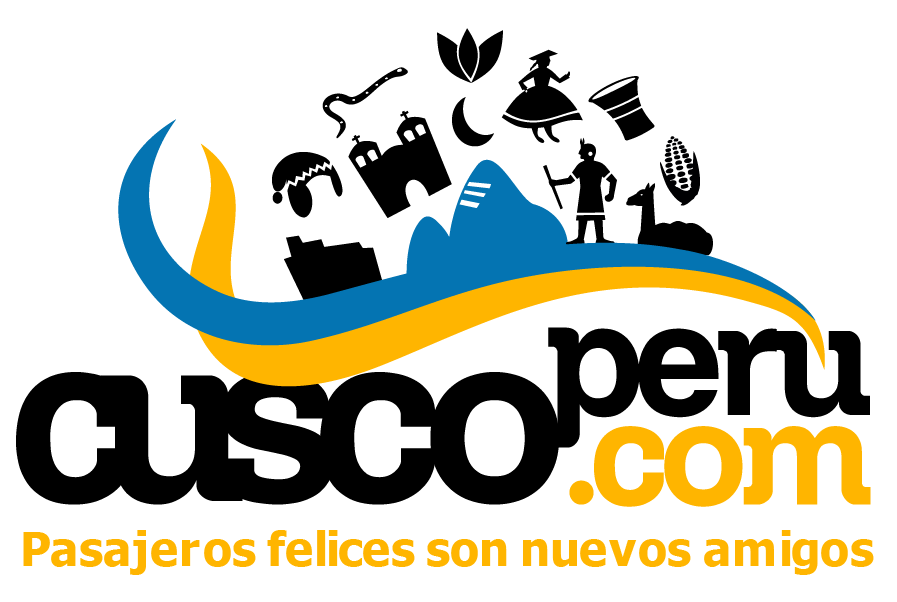
- 1 Why visit Cusco?
- 2 Where to start?
- 3.1 Natural Attractions Cusco
- 3.2 Colonial Mansions Cusco
- 3.3 Archaeological Centers Cusco
- 3.4 Churches and Convents Cusco
- 3.5 Museums Cusco
- 3.6 Inca Palaces Cusco
- 4.1.1 Via Area
- 4.1.2 Overland
- 4.2.1 Route 1:
- 4.2.2 Route 2:
- 6.1 Weather:
- 6.2 Altitude:
- 6.3 Population:
- 7.1 How to avoid:
- 8 WHAT TO DO IN YOUR FREE TIME
Why visit Cusco?
Where to start, attractions:.
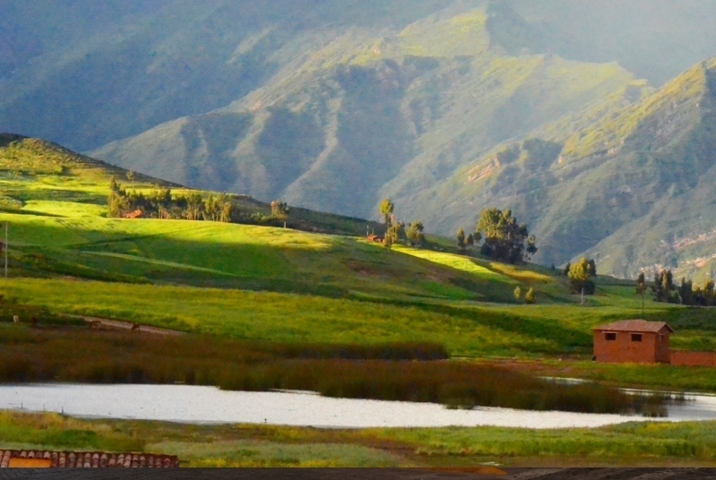
Natural Attractions Cusco
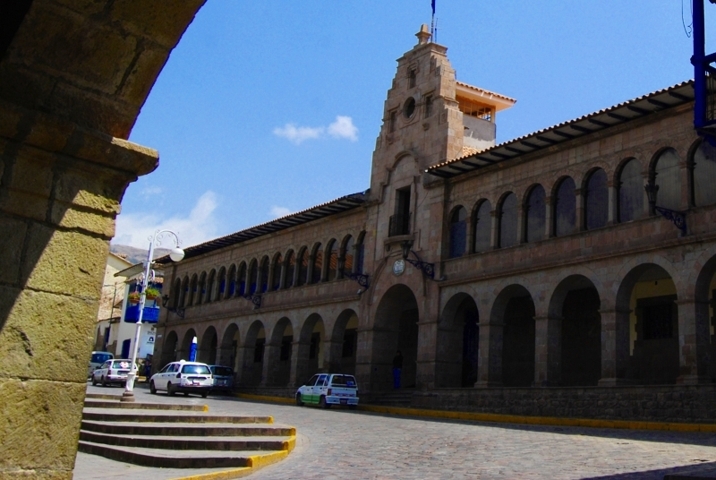
Colonial Mansions Cusco
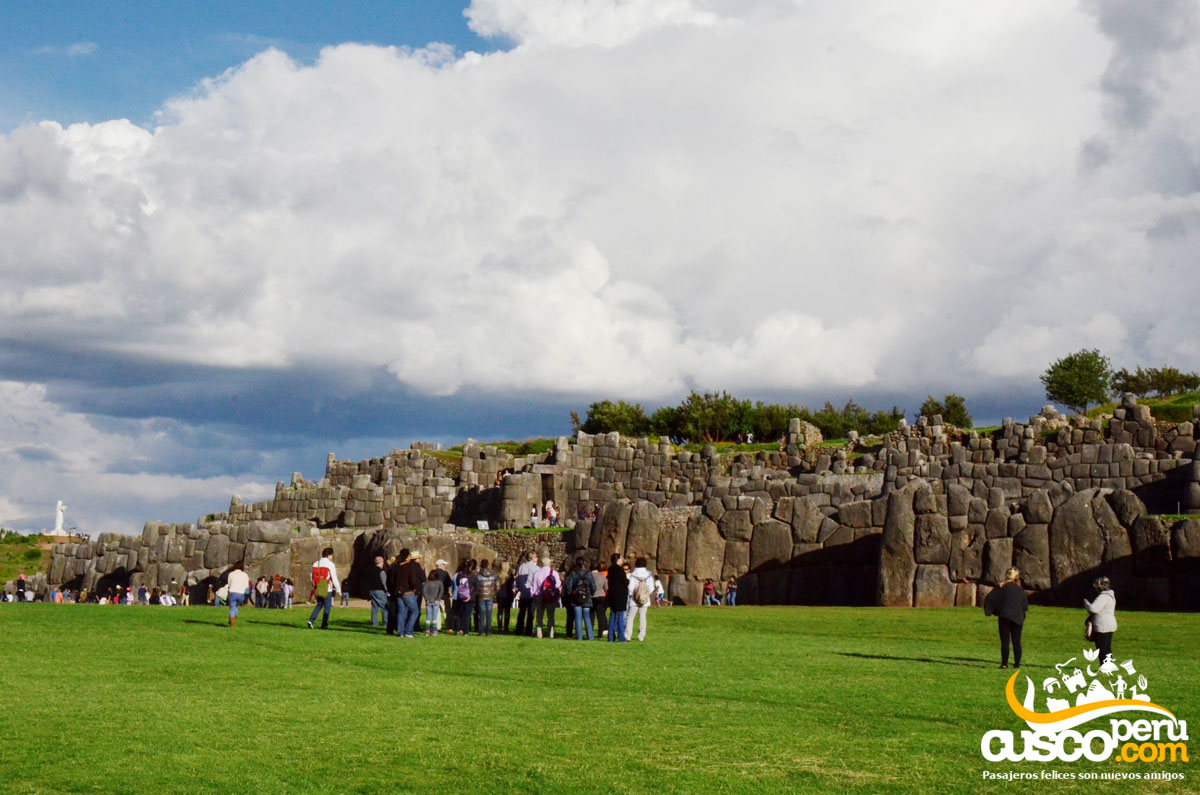
Archaeological Centers Cusco

Churches and Convents Cusco
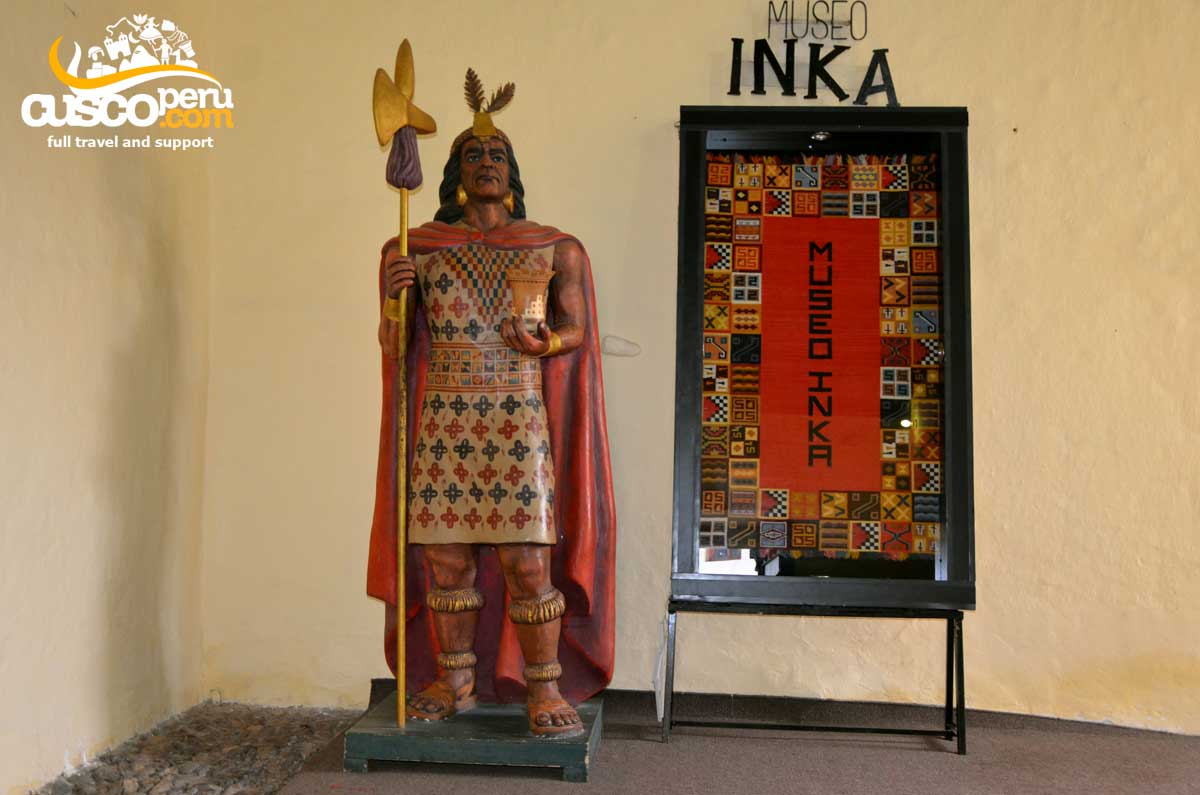
Museums Cusco

Inca Palaces Cusco
How to get to cusco, the main routes from lima are:.

IMPORTANT DATA
Population:, recommendations for altitude sickness, how to avoid:.
- Consult with your doctor about altitude sickness before the trip, so that he can medicate you according to your organism.
- The visitor should acclimatize for at least 24 hours, that is to say, arrive one day before starting the tour.
- It is necessary to consume products with little amount of salt and try to ingest products rich in sugar.
- The intake of liquids is extremely important because it helps to counteract the effects of altitude.
- Long walks should be avoided on the first day, and if you do take them, it is better to be accompanied.
- Wear appropriate clothing that does not cause fatigue or suffocation. Consume products such as herbal teas or coca tea (without sugar).
WHAT TO DO IN YOUR FREE TIME
Here are some suggestions of what you can do in the city of Cusco.
- Walk through its streets and appreciate the colonial architecture built over ancient Inca palaces.
- Admire the religious art in the cathedral and the different temples of the city.
- Visit on horseback the archaeological park of Sacsayhuaman and its archaeological sites.
- Share and enjoy your evenings with people from all over the world in the bars and discos near the
- main square.
If you are looking for tours in Arequipa write to us at: [email protected]
Join my Adventure: There's Room in My Backpack
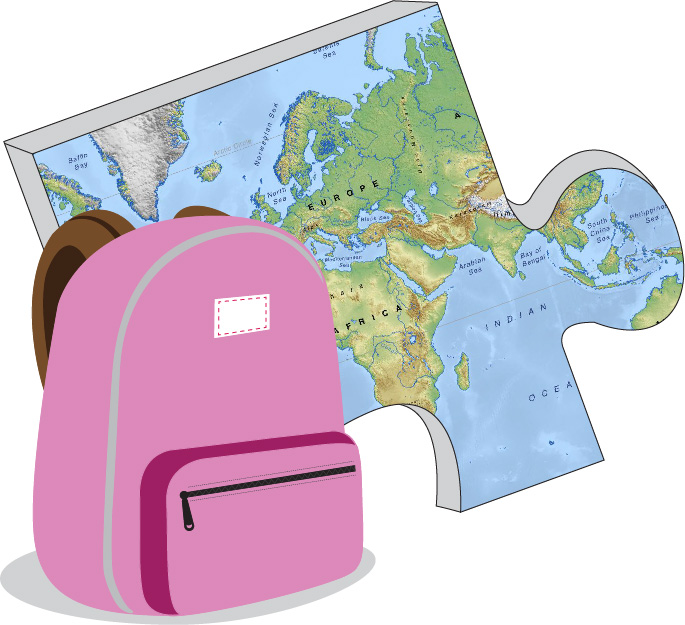
Packing up the Pieces

Complete Guide | How to Visit 16 Sites on the Cusco Tourist Ticket Without a Tour
If you’re ecstatically planning your trip to the Imperial City of Cusco in Peru, you’ve probably heard of the Boleto Turístico Cusco, or the Cusco Tourist Ticket . This ticket is the ultimate introduction to Cusco and the nearby Sacred Valley and highlights 16 of the regions most popular places. From sacred Inca sites in sprawling Archaeological Parks, museums, to a nightly show, there’s enough variety on this ticket to satisfy any type of traveler. Visiting the ruins on the Cusco Tourist Ticket is one of the best things to do in Cusco .
While most visitors hire an organized tour, all 16 diverse sites of the Cusco Tourist Ticket can be explored independently. Reach each point of interest via taxi, public transportation, and collectivos (mini buses) . For those adventure seekers that are craving a real expedition, take a gentle hike to the park sites. There’s a wide range of ticket options, so decide which Cusco Tourist Ticket fits best in with your itinerary, time frame, and budget.
This guide gives a brief summary of all 16 places of interest on the Cusco Tourist Ticket. More importantly, find in-depth instructions on how to reach each site. Look for my personal recommendations on what is “skippable” and what is “unmissable” on the ticket. For those budget conscious travelers, I’ve tallied up the cost to independently utilize the entire Cusco Tourist Ticket .
Here’s the ultimate guide to discover all 16 sites on the Cusco Tourist Ticket without a guide.
Table Of Contents
What cusco tourist ticket should you purchase, circuit i | cusco tourist ticket, circuit ii | cusco tourist ticket, sacred valley circuit iii | cusco tourist ticket, so, what’s excluded from the cusco tourist ticket, final thoughts | exploring all 16 sites on the cusco tourist ticket without a tour.
☛ Plan Your Trip to Cusco | The Best Cusco & Sacred Valley Itinerary for One Week | 5 Unique Cusco Itineraries | The Ultimate Guide to the Sacred Valley Peru
The Cusco Tourist Ticket can be purchased as a one time complete 10 Day Ticket or as an individual “circuit ticket.” There are three different circuit options which focus on different sites in the region. Each individual circuit ticket costs 70 PEN ($19.50 USD) , so if planning on visiting anything from more than one circuit of the ticket, purchase the 10 Day Cusco Tourist Ticket for 130 PEN ($36) !
It can take anywhere from 4-10 days to complete the entire ticket independently , depending on how many sites you visit and how in-depth you plan to explore each site.
All 16 Sites of the Cusco Tourist Ticket by Circuit
Refresher | Overview of the Cusco Tourist Ticket (Boleto Turístico Cusco)
A Quick Note on Guided Tours
Many agencies in Cusco offer up daily guided tours to visit the Sacred Valley and the Archaeological Parks that surround Cusco. Theses tours usually carry a bus full of 20-40 people, and only visit the main areas of a few select sites. Oftentimes, many of the real treasures are found buried in the far outlying corners of the Archaeological Parks. It’s important to note that the Cusco Tourist Ticket is usually excluded from the guided tour cost.
Tours can be a practical way for those on a tight time frame to “get a taste” of the most interesting sites on the Cusco Tourist Ticket.
Circuit 1 of the Cusco Tourist Ticket includes the four Archaeological Parks of Saqsaywaman, Q’enqo, Puka, and Tambo on the nearby hillsides of Cusco.
Quick Overview of Circuit I
- Cost: 70 PEN ($19.50 USD)
- Valid: 1 Day
Saqsaywaman Archaeological Park
Q’enqo archaeological park, puka pukara archaeological park, tambomachay archaeological park.
Itinerary Tip | To make a fun adventure day, follow Circuit I in the order listed below. It’s easy to complete all 4 parks in one day with a mixture of gentle hikes, buses, or collectivos.
Psst… Want to explore more sites like this in Cusco? Follow along with this free hiking tour of Cusco that passes by lots of FREE Inca Sites!
Saqsaywaman Archaeological Park, or Sacsayhuamán , is by far the biggest and most impressive site on Circuit I of the Cusco Tourist Ticket. Look no further if you want to see the massive building blocks that were the foundation of the Inca Empire. Some of these building blocks weigh around 100-200 tons! It really leaves you pondering how they constructed these sites with absolutely no mortar or modern tools. Wander above this sacred site to take in this incredible building feat, and see a bird’s eye view of Cusco from over 12,000 feet.
Besides the main Inca ruins, don’t miss other sections of the park like Suchuna, where locals slide down the rocks and the walk to the cross, which offers sweeping views of Cusco city.
Saqsaywaman Park Logistics | Hours: Daily 7:00 – 17:30 | Tour guides available onsite, make sure to verify their information
How To Reach Saqsaywaman
Take a taxi or public bus from Cusco to Saqsaywaman.
Taxis are willing to drive to Saqsaywaman and, for an additional fare, continue with you for the day.
Cusco to Saqsaywaman | Honest Taxi Fare: 6-10 PEN | Can use the same driver for the whole day | Make sure to negotiate a price before getting in
Public Buses
Multiple Cusco City buses run up to Saqsaywaman and beyond. Besides city buses, all the sites on the Circuit I ticket can be reached via collectivos in the direction of Pisac. Tell the driver to let you off at whichever site you fancy.
Orange City Buses “Cristo Blanco” | City Bus Fare: 1 PEN (25¢) | Duration: 15 minutes | Buses run frequently | Catch the buses across the street from Wanchaq Market, on Av. Garcilaso
Collectivos in the Direction of Pisac
Collectivos heading in the direction of Pisac can also drop off at any of the points of interest of Circuit I of the Cusco Tourist Ticket. Verify with driver your desired departure before boarding.
Collectivos | Fare: 2 PEN (50¢) | Duration: 15 minutes | Collectivos run frequently | Catch the mini vans on Puputi Street before the Garcilaso roundabout
Why Visit Saqsaywaman Without a Tour?

Saqsaywaman has a few different sections of its Archaeological Park. Most tour companies only have time to visit the area near the main entrance. They mostly point out the largest stones which couldn’t be transported by the Spanish Conquistadors to build “modern Cusco.” However, there are plenty of places to explore, like the interesting Roadadero, where children and adults slide down a peculiar rock.
Itinerary Tip | Walk from Saqsaywaman to Q’enqo and pass by the iconic “Cristo Blanco” for a nice view of Cusco and a really tall Jesus that watches over the city.

The site of Q’enqo is small, but quite interesting. It can only be assumed that Q’enqo was used for religious ceremonies. Find a well intact “sacrificial table” with what appears to be a drain for whatever liquid was made for an offering. Climb around inside the caves. Many locals come still come here to pay their respects.
Q’enqo Park Logistics | Hours: Daily 7:00 – 17:30 | Tour guides available onsite, make sure to verify their information
How To Visit Q’enqo
Orange City Buses “Cristo Blanco” | City Bus Fare: 1 PEN (25¢) | Duration: 20 minutes | Buses run frequently | Catch the buses across the street from Wanchaq Market, on Av. Garcilaso , or hop on the bus at Saqsaywaman
Why Visit Q’enqo Without a Tour?
Q’enqo is small, and it’s nice to walk around and appreciate the space. There are a few information boards in the front, so make sure to glance at them to get an understanding of the area. Enjoy the views of Cusco and the surrounding hillsides.
If coming from Saqsaywaman make sure to stop by the “Cristo Blanco” for nice city views. Next, continue onto Puka Pukara with a gentle hike , or take the cheap public bus. A public bus frequently runs from Cusco , past Q’enqo, and on to Puka Pukara.
Don’t miss the incredible lookout below, Q’enqo Chico. This nice park has Inca ruins, lots of green space, large trees, and is completely free!
Hiking Logistics | Q’enqo to Puka Pukara
The hike from Q’enqo to Puka Pukara goes by the Temple of the Moon , which is an impressive and free site. This sacred site is usually never crowded and has some interesting caves. Leave Q’enqo on a small back trail. The path is fairly well marked and also passes one of the best sites in Cusco, Chuspiyoq, or the Temple of the Fly . Find the path on Maps.me. After, exploring the site, continue on with a gentle hike to Puka Pukara.
Add on 2-3 hours if you plan on exploring the above itinerary.
Important Safety Notice | The hiking trails around and to the Temple of the Moon should not be attempted as a solo explorer. Sadly, this area has become increasingly unsafe for tourists and locals with a high crime rate. There are many accounts of aggressive thefts, and even recently, robberies by knife and gunpoint. Women travelers should especially take extreme caution, as there have been reported rapes in the nearby caves. Temple of the Moon should be visited during daylight hours and in a group. Be mindful and cautious. Unfortunately, this area should be avoided at all cost at dusk and at night.
Puka Pukara comes from the Indigenous language of Quechua , which translates to “red fortress.” Many people believe from this name, that it was in fact, a military fortress. This ruin site is one of the smallest parks on the ticket. The views area almost more spectacular from outside the ticketed area, because the fortress is the centerpiece of this epic mountainous backdrop.
Puka Pukara Park Logistics | Hours: Daily 7:00 – 17:30
Satisfactory
How to Reach Puka Pukara
It’s easy to take the 2 mile walk from Q’enqo to Puka Pukara. Take the small hiking path on the back roads. It passes Inca ruins and cute little villages.
If coming from Q’enqo, wave down the city bus.
Bus Sr. de Huero | Fare: 80 ¢ PEN (25¢) | Duration: less than 5 minutes | buses run frequently | Final Stop is Tambomacha y
Why Visit Puka Pukara Without a Tour?
The hike from Q’enqo is really beautiful and the stop at the Temple of the Moon and Temple of the Fly is definitely worthwhile.
Tambomachay is another small Inca site where it’s possible to see more “water canals.” No one knows for sure what this ancient site was used for, but with its close proximity to the fortress, some assume that it sourced water to it. Some other theories are that this could have been a “Royal Spa,” or a hunting lodge for the elite. Tambomachay is enjoyable with lots of small hiking trails to follow and explore.
Tambomachay Park Logistics | Hours: Daily 7:00 – 17:30
Worthwhile. Those with time constraints, may enjoy Tipón more.
How to Visit Tambomachay
Tambomachay is right across the street from Puka Pukara, so just walk across the street. For those in Cusco, hop on the a collectivo heading in the direction of Pisac.
Why Visit Tambomachay Independently?
Tambomachay has lots of little walking paths to explore around the beautiful hillsides. Tour groups only look at the main fountain and leave. There is a cave in the distant hillside, which may have helped give Tambomachay its name.
Adventure hikers can leave this site and continue on to Laguna Coriconcha and camp along this scenic lake. From there, it’s possible to hike to Huchuy Qosqo and the Sacred Valley .
Circuit II of the Cusco Tourist Ticket includes: four museums, a monument (temporarily closed) , a nightly theatrical dance show, and two remarkable and unvisited Archaeological Parks.
Quick Overview of Circuit II
- Cost: 70 PEN ($19.50)
- Valid: 2 Consecutive Days
- Museo Histórico Regional
- Museo de Arte Contemporáneo
Centro Qosqo de Arte Nativo
- Museo de Arte Popular
- Museo de Sitio Qorikancha
Monumento Pachacuteq
Tipón archaeological park, pikillaqta archaeological park.
Itinerary Tip | Circuit II of the Cusco Tourist Ticket can be completed independently over 2-3 days depending on how much time you allot for Tipón and Pikillaqta. Tipón is massive and it’s possible to spend one full day here. Check out the detailed itinerary on how to visit the South Valley sites of Tipón, Pikillaqta, & Andahuaylillas in an Epic Day Trip from Cusco
Ahem…
Casa Rivero is the perfect guest house to explore Circuit I & II while in Cusco. Find warm and helpful hosts, a hearty breakfast, and prime time location near the Plaza de Armas. In fact, Saqsaywaman is a little over a half mile climb uphill from here. Directly across the street is the bus stop for Tipón and Pikillaqta! | Check out availibility for Casa Rivero here!
Museo Histórico Regional (Museum of Regional History)
This museum focuses on the regional history of Cusco. Find everything from prehistoric animals, information about the Inca empire, and history about the Spanish conquest . This museum is probably the most comprehensive museum on the entire Cusco Tourist Ticket. It has two floors of information, a nice courtyard, and information boards in English.
Museum of Regional History Logistics | Hours: Daily 8:00 – 17:00 | Find it here : Calle Garcilaso
Museo de Arte Contemporáneo (Museum of Contemporary Art)

The building that houses the Museum of Contemporary Art has a nice courtyard, but many of the art exhibits are lacking. This building is used by local government, resulting in the art taking a backseat. Some of the art pieces are really nice, but there is not many pieces that are actually on display. There is plenty of potential for this museum, but sadly, it has not been utilized properly yet. Make sure to go upstairs where most of the art is located.
Museum of Contemporary Art Logistics | Hours: Mon – Sat 9:00 – 18:00, closed Sun | Find it here : Calle Espinar 270
Meh…. Nice, but lacking substance

This is a small little venue that showcases traditional folk dancing styles of the indigenous people of Cusco.
Native Dance Performance Logistics | Hours: Daily 18:30 – 20:00 | Seating starts @ 18:30, Showtime @ 17:00 | Duration: 1 hour | Find it here : Av El Sol 872
This was the only thing on the entire Cusco Tourist Ticket which I did not visit. I was fortunate to see traditional dancing in the streets of Cusco.
Museo de Arte Popular (Museum of Popular Art)
The Museum of Popular Art is basic and showcases the traditional art style of Peruvian clay sculptures. There’s a lot of masks and religious displays, including some nativity scenes. Look for Jesus eating cuy , or guinea pig, with his disciples. That’s not wine they’re drinking, but chicha , a fermented corn beverage.
There are some interesting old photos. The museum is located in a basement, so it is a little bizarre. There are interesting shops in Cusco that sell these same kind of clay figurines. The shops are free and usually have more stock.
Museum of Popular Art Logistics | Hours: Mon – Sat 8:00 – 18:00, closed Sun | Find it here : Av. El Sol 103
Museo de Sitio Qorikancha (Museum Site of Coricancha)

This museum is located underneath the grassy knoll area of Coricancha . Coricancha was originally one of the most sacred temples in the entire Inca empire. When the Spanish conquistadors arrived, it was demolished. Afterwards, the Spanish built the Church of Santo Domingo on top of the ruins.
This museum does not include access into the actual site of Coricancha, but rather, showcases a few mummies and other artifacts from the time before and during the Inca empire. One of the more interesting sections was on “head shaping and mutilation” of the elite and ruling classes of the Inca. There’s speculation this ritual could predate the Incas. Find an elaborate model that speculates what Coricancha looked like before the Spanish Conquest.
The entrance fee into Coricancha is separate | 15 PEN ($4.25)
The museum ends up in the green space below the church. It’s a great place to snag some photos; however, the control guards are “whistle happy” and enjoy constantly blowing them at tourists. This can be pretty annoying and obnoxious.
Museum Site of Coricancha | Hours: Daily 9:00 – 18:00 | Find it here : Av El Sol 526
Meh… The “head shaping” exhibit is small, but informative
Temporarily Closed
The interior of the Pachacuteq monument is closed. The monument is a little out of the main tourist loop in Cusco. Those using the main bus station in Cusco will pass by it frequently.
Temporarily Closed | Observe it from the Street here: The roundabout of Pachacuteq
This sprawling Archaeological Park is huge, and it’s very possible to spend the whole day enjoying this beautiful place. Tipón has multiple levels of terraces which are lined with Inca water canals. Find “ceremonial fountains” hidden in the terraces. Don’t miss the Intiwatana ruins, a little bit of a climb above the principal area. Of course, take the climb up to old Inca canals, which boast incredible views of the entire South Valley.
Tipón Archaeological Park | Hours: Daily 7:00 – 18:00 | In Cusco’s South Valley
Unmissable!
How to Visit Tipón Without a Guide
Take a taxi or the public bus to reach Tipón.
Via Public Bus
Blue and White City Buses “Los Leones” | City Bus Fare: 2 PEN (50¢) | Duration: 1 hour 15 minutes | Buses run frequently | Catch the buses in Cusco at Plaza San Francisco, in front of University Building | Final Stop: Choccepata village in the Plaza de Armas
From the Plaza, it’s still a little bit of jaunt to reach Tipón Archaeological Park. Either take a taxi for 10 PEN($2.75 USD), or take the 1 hour uphill hike via a Pre-Inca trail.
Why Visit Tipón Without a Tour?

Tipón is one of the least frequented parks on the entire Cusco Tourist Ticket , yet one of the most stunning. Sometimes, it’s possible to be the only visitor inside the park. The control guards are fairly relaxed here, which results a deeper discovery of the sacred site of Tipón.
Besides the frequently visited sections of Tipón, there are lots of other little “side-spots” to explore. There are some ruins uphill, Intiwatana which are different and appear to resemble sacrificial tables. The water canal can be followed uphill to the Inca site of Pukara . These ruins are even larger than Tipón. Behind the main ceremonial fountains, there’s the steep climb to the Mirador of Cruzmoqo . This viewpoint boasts stunning views of the valley and the outskirts of Cusco.
None of the tour groups visit Intiwatana, climb the water canals, visit Pukara, or the newly opened viewpoint of Cusco. This is one spot that is a must to hike around freely on your own!
The Pikillaqta Archaeological Park is unique, as it is the only ruins on the ticket that predate the Inca civilization. Supposedly, this ancient dwelling was built by the Wari civilization . This civilization predates the Incas, but had a huge influence on their empire. The energy here is really spectacular, and the design is noticeably different than all of the Inca dominant sites. Barely anyone tourist visit, so enjoy this place in complete solitude.
There is a super small museum in the basement of the entrance gate that houses some fascinating prehistoric fossils.
Pikillaqta Archaeological Park | Hours: Daily 8:30 – 16:30 | In Cusco’s South Valley | Don’t miss the Rumicolca Gate , a 5 minute walk from the entrance
How to Reach Pikillaqta
Pikillaqta is a quick bus ride from Tipón, which makes these two sites manageable in a day. The main Tipón bus stop lies before the village of Choccepata on the busy road that continues in the direction of Puno. On this busy road, wave down any bus going to Urcos.
Buses to Pikillaqta | City Bus Fare: 1.50 PEN (50¢) | Duration: less than 15 minutes | Buses run frequently | Catch the buses on the busy and main road from Cusco to Urco s
Why Visit Pikillaqta on Your Own?
Pikillaqta sits beautifully in the South Valley with its crumbling ruins that are tinted red. Most tour companies only stop for 15 minutes to take photos and leave. Take the time to walk these ancient “streets” and really appreciate the influence of the Wari civilization . Don’t forget to walk 5 minutes after the main park entrance to see the Rumicolca Gate . There are many beautiful stories as to what was the actual purpose and origin of this site. It may just very well be the old entrance gate to the Imperial City of Cusco.
Circuit III of the Cusco Tourist Ticket includes four impressive Archaeological Parks in the nearby Sacred Valley. These Inca sites are well preserved, large, and found in the villages of Pisac, Ollantaytambo , Chinchero , and near Maras is the Moray Archaeological Park .
Itinerary Planning | The Ultimate Cusco & Sacred Valley Itinerary for One Week
Quick Overview of Circuit III
Pisac archaeological park, ollantaytambo archaeological park, moray archaeological park, chinchero archaeological park.
Itinerary Help | The Sacred Valley should not be missed on a trip to Peru. This incredible valley is filled with adorable little villages, impressive Inca ruin sites, hot springs, hiking trails, salt mines, and so much more ! Budget in a few days to explore this beautiful valley.
Psst… The centrally located village of Urubamba Peru makes an excellent base to explore the Sacred Valley
The Pisac Archaeological Park seems to always be a memorable favorite of travelers visiting all the sites on the Cusco Tourist Ticket. The four main sectors of this park include the P’isaqa , Inti Watana , Qalla Q’asa , and Kinchiraqay. These ruins also have their own Temple of the Sun, some possible ceremonial baths, and terraces that line the mountain. Look for old Inca tombs sculpted into the cliffs. With it’s hilltop location, savor in those mountain views.
Pisac Archaeological Park | Hours: Daily 8:00 – 16:30 | In Pisac of the Sacred Valley | Tour guides available onsite, make sure to verify their information
How To Independently Visit Pisac Archaeological Park
It’s a breeze to get to Pisac Archaeological Park from Cusco or Urubamba using collectivos.
Collectivos
Collectivos from Cusco | Fare: 4 PEN ($1) | Duration: 45 minutes | Collectivos run frequently | Catch the mini vans on Puputi Street | Depart when ful l
Collectivos from Urubamba | Fare: 5 PEN ($1.50) | Duration: 1 hour | Collectivos run frequently | Direct, or transfer in Calca | Depart when ful l from Urubamba main bus terminal
How to Access the Park via the “Back Entrance”
- Almost 2 miles uphill, and not worth it.
- Departs across the street from the Pisac Market | Amazonas Av. & Federico Zamalloa
- 1 PEN (25¢ USD) | 15 minutes
- Drops on the road leading to the ruins. From there it’s a gentle 30 minute hike.
- 30 PEN ($8.25) , 15 minutes
- Drops at the “back” entrance ticket control
In my opinion, the collectivo is the best option!
Visiting Tip | There are two entrances to the park. The back entrance is at the top of the hill near the village of Mask’a and the main entrance is only a block from the Plaza de Armas in Pisac. Start at the top of the mountain via the back entrance. Visit the park and walk downhill to exit at the main entrance, near the lovely Plaza de Armas of Pisac. There is a daily artisanal market in the square.
Why Visit the Pisac Archaeological Park Without a Tour?
Pisac is an incredible little village. The ruins sit high on the mountain top and look over into the valley. There are two levels and main entrances to the park. For that reason, plan to spend at least a few hours here, as it is quite spacious. Tour companies do not allow enough time to explore all the sections of the park.
The main entrance to the park is behind the church in Pisac’s Plaza de Armas and is the bottom section of the park. It is normal for the bottom section of the park to be shut down due to heavy rains and dangerous mudslides. Usually during the rainy season, the whole bottom section will be closed. If the main entrance is closed, you must enter the park from the “back” mountaintop entrance near Mask’a.
☛ Travel Tip | Add on this half-day excursion to Kinsa Cocha Pisac
The ruins of Ollantaytambo are stunning and fairly well preserved. With incredible sites like the Ollantaytambo’s Archaeological Park, the Sacred Valley is becoming more and more popular and not just the gateway to Machu Picchu .
Although condensed in the corner of the village there is a lot to see here. Find the Temple of the Sun, Water Temple, and the viewpoint of Inkawatana. The views look down into the fertile valley, with the river flowing through it. The towering green mountains surround this grand sacred site and the village is below is adorable.
Ollantaytambo Archaeological Park | Hours: Daily 7:00 – 17:00 | In the village of Ollantaytambo in the Sacred Valley | Tour guides available onsite, make sure to verify their informati on
How To Reach Ollantaytambo
It’s super easy to reach Ollantaytambo via public transportation.
Collectivos from Cusco | Fare: 10 PEN ($2.75) | Duration: 1 hour and 45 minutes | Collectivos run frequently | Catch the mini vans on Av . Grau 510 | Depart when full and may have to transfer in Urubamba
Collectivos from Urubamba | Fare: 2 PEN (50¢) | Duration: 30 minutes | Collectivos run frequently | Depart when ful l from Urubamba main bus terminal
Why Visit Ollantaytambo Without a Tour?
Ollantaytambo is a beautiful village and the Archaeological Park here is breathtaking. Many tour groups come in the masses to take a glimpse at the park. The best time is to arrive right at 7:00 when the park opens. Tour groups are coming from Cusco, so they usually don’t start showing up until 9:00.
Explore the adorable hamlet of Ollantaytambo. The cobblestone streets have Inca Canals running through them. There are tons of interesting sites near the ruins which are free like Pinkuylluna , which are the old granaries found on the hillside. There are also some epic day hikes to explore from the village. Follow the Old Inca Quarry Road up to the epic Sun Gate, also known as Inti Punku. After visiting the park, a nice half day hike is to the Pre-Inca site of Pumamarca.
➯ Detailed Travel Guide | The Best Things to Do in Ollantaytambo Peru
The Moray Archaeological Park has the Inca ruins of three large terraces. They are often referred to as the agricultural experimental laboratories of the Inca. This remains one of the most “accepted theories,” however, some even question if there were water channels present during the time of the Inca Empire. There are three terraces that vary in size and function.
Moray Archaeological Park | Hours: Daily 7:00 – 17:00 | Near the village of Maras in the Sacred Valley | Tour guides available onsite, make sure to verify their informati on
How To Reach Maras
The best way to get to Moray is to take a bus to the Maras Transit Hub . Next, it’s essential to take a taxi either to the village of Maras, or directly to the Archaeological Park.
Collectivos from Cusco | Fare: 6 PEN ($1.75) | Duration: 50 minutes | Collectivos run frequently | Catch the mini vans on Av . Grau 510 | Depart when full and exit at the Maras Transit Hub | Take a Taxi to Maras for 1 PEN (30¢) / 5 minutes
Collectivos from Urubamba | Fare: 2 PEN (50¢) | Duration: 30 minutes | Collectivos run frequently | Depart when ful l from Urubamba main bus terminal | Exit at the Maras Transit Hub & take a Taxi to Maras for 1 PEN (30¢) / 5 minutes
How To Reach Moray Archaeological Park
The Moray Archaeological Site has no public buses. Once in the village of Maras, you must hike or take a taxi to reach the park.
Taxi from Maras Plaza de Armas to Moray / 20 PEN ($5.50) | Hike 3.5 miles on a flat and enjoyable pathway
Why Visit Moray Archaeological Park Without a Tour?
It’s possible to have a complete adventure day while exploring the Moray Archaeological Park. Another point of interest in the Sacred Valley, are the Maras Salt Flats . For a fun adventure day, combine the Maras Salt Flat, village of Maras, and the Moray ruins !
Itinerary Add-On: Hike to the Salt Mines, Maras, and Moray!
Moray is very popular and busy. Most tours only stop at the main viewpoint, but in fact, there are actually three terraces to explore. Traveling here independently is essential for enjoying this site in solitude. Wait for the crowds to disperse, and you may find only a few fellow travelers here.
The Chinchero Archaeological Park may have been the former palace of Tupac Inca Yupanqui , the Inca’s most notable conqueror. It is believed he actually died here in his home in Chinchero at the age of 85. When the Spanish conquistadors came, they built a church on top of the palace. This colonial church is the main focal point of Chinchero and requires an additional entrance fee (3 PEN, 75¢) . There are more unique Inca ruins located on the outer boundaries of the park.
In the main plaza of Chinchero many local women sell their handmade woven items. Don’t miss the small but informative museum, which is included in the Cusco Tourist Ticket.
Chinchero Archaeological Park | Hours: Daily 7:00 – 18:00 | The village of Chinchero in the Sacred Valley | Tour guides available onsite, make sure to verify their informati on
How To Independently Visit Chinchero
It’s straightforward to reach the Chinchero Archaeological Park from Cusco or Urubamba using public buses or collectivos.
Collectivos from Cusco | Fare: 4 PEN ($1) | Duration: 35 minutes | Collectivos run frequently | Catch the mini vans on Av . Grau 510 | Depart when full and exit in the Village of Chinchero
Buses and Colletivos from Urubamba | Fare: 3 PEN (75¢) | Duration: 50 minutes | Public Transportation runs frequently | Depart when ful l from Urubamba main bus terminal | Exit at the Village of Chinchero , after the Maras Transit Hub
Why Visit Chinchero Without a Tour?
Chinchero is often the first stop for those day trippers coming by tours from Cusco. Most tour groups only stop to look at the main terraces and browse the principle plaza where women are selling artisanal handicrafts.
One of the best parts of the park sits towards the “back entrance.” There are peculiar rocks which seem to almost have alter-like resemblances. Afterwards, follow down an old Inca road to the small and adorable hamlet of Urquillos
The Cusco Tourist Ticket highlights a wide range of sites in Cusco and the Sacred Valley, but there are some notable points of interest that are excluded from the Cusco Tourist Ticket.
Machu Picchu
Of course, the real highlight of the Sacred Valley is beloved Archaeological Park of Machu Picchu. This site is not included on the Cusco Tourist Ticket, and requires its own admission ticket.
Related | An Overview on How to Visit Machu Picchu Without a Tour
Get “off the beaten path” and hike to Machu Picchu via the Choquequirao Trail. This 9 day trek starts in the village of Cachora, passes through the incredible sacred site of Choquequirao , and winds through 3 epic mountain passes to Aguas Calientes . That village at the foothills of Machu Picchu.
➯ Travel Deeper | 35+ Inca Sites You Need to Visit in Peru
Total Cost of DIY Cusco Tourist Ticket
So, how much does it cost to independently visit all 16 sites of the Cusco Tourist Ticket? Of course the cost will vary depending on which ticket you purchase, how you explore, and if you take taxis versus public transportation.
Personally, I used a mixture of public transportation and gentle hikes to explore all 16 points of interest. For the Sacred Valley Circuit III, I slept in the village of Urubamba, which helped cut down on round-trip fares to and from Cusco. It took me 6 days to complete my DIY exploration of the Cusco Tourist Ticket, but I could have spent even more time, especially at Tipón.
Prices on the table are rounded to the nearest 25¢
This table includes the Maras Salt Mines and the ticket to the Church of Andahuaylillas. These two items are excluded from the Cusco Tourist Ticket.
As you can see, it’s easy to explore the highlights of Cusco Tourist Ticket for cheap. The biggest expense is the actual ticket, but it’s worth it to explore and see these monumental sacred Inca sites.
Most organized tours start on the “low-end” of $50 USD, and only include a few select sites. Keep in mind, the tours DO NOT include the price of the actual Cusco Tourist Ticket.
Besides, discovering these sites on your own terms is half the fun. Create your own sightseeing adventure and turn it into a fun expedition!
In conclusion, those travelers heading to Cusco should plan for at least a few days to explore the incredible highlights of the Cusco Tourist Ticket . The diverse ticket gives a great introduction to the importance of the Imperial city of Cusco and the magical Sacred Valley. From Archaeological Parks, museums, and even a theatrical performance, the Cusco Tourist Ticket has something for everyone!
There are a few ticket options to choose from. So first, decide which ticket fits best with your interests and itinerary. Choose from the complete 10 day ticket or from one of the three “circuits.” This post provides a basic overview of all 16 sites, detailed directions on how to reach each one, itinerary tips, and why it’s best to discover them on your own without a tour!
Of course, the “price is right” on completing the Cusco Tourist Ticket independently. This self-tour guide costs just over $50!
Hopefully, this complete guide should make exploring each site a little easier and more enjoyable!
Have you visited any of these sites on the Cusco Tourist Ticket? Did you use a tour or complete them on your own? I would love to know if this guide was helpful, or inspired you to visit Cusco and the lovely Sacred Valley! Let me know in the comments below!

Disclaimer: There’s a chance this post contains affiliate links, and I receive a small (but grateful) portion of the sale. There’s no extra cost to you, and I only promote things that I use and love.
Hey, my name is Megs! I'm an adventure-seeking, wanna-be storyteller, with a wandering soul who is smitten with the diversity of this beautiful world. You can find me hiking in the mountains, eating delicious food, and seeking out the most authentic travel experiences possible. Experiences and memories are my most prized possessions. I love to slow travel and have been nomadic for over 12 years.
Similar Posts

35+ Best Cuenca Restaurants, Coffeeshops, & More Delicious Culinary Treats

18 Most Common Camino de Santiago FAQ (Frequently Asked Questions)

5 Places to Visit on the Perfect Day Trip from Olomouc Czech Republic
Visit Las Médulas One of the Most Unique Places to See in Spain

12 Best Things to Do in Aguas Calientes (Besides Machu Picchu)

2020 My Wild & Unexpected Year of Self-Growth
Thank you so much for sharing all these useful tips! I love to explore new places independently / at my own pace, and Peru has been on my bucket list for so long 🙂
Yvette, you will love Peru then! So many treasures to discover that are “off the beaten path.”
This post is soooo useful! Jam packed of great info that any tourist should appreciate. Peru is high on my list of places to go and because I’m a HUGE planner this just saved me a ton of time figuring out how much $$ to bring and how long it may take! Thank you!
Thanks so much Sarah! The public transportation is cheap and reliable in Peru. It helps save big money and makes it easy to explore independently!
Being a budget traveler, I always try doing things myself rather than do tours, so I’ll definitely be saving this amazing info for when I travel to Peru 🙂 Thanks!
I am the same way Natalie! I think traveling independently allows for a deeper connection with people and places! This is where my most memorable travel experiences come from. I am glad you found it so useful!
Such a detailed post, and thank you for including pricing of things to. That’s always my least favorite thing to look up. But this really feels knowing what kind of budget is needed when I do hopefully get here
Thanks Emma! I hope you get to Peru in the near future. It is such an amazing country and easy to travel on a budget!
Leave a Reply Cancel reply
Your email address will not be published. Required fields are marked *
Save my name, email, and website in this browser for the next time I comment.
Cusco Travel Guide
Book your individual trip , stress-free with local travel experts
- roughguides.com
- South America
- cusco-and-around
- Travel guide
- Itineraries
- Local Experts
- Travel Advice
- Accommodation
Plan your tailor-made trip with a local expert
Book securely with money-back guarantee
Travel stress-free with local assistance and 24/7 support
Known to the Incas as the “navel of the world”, colourful Cusco was built by the Spanish on the remains of Inca temples and palaces, and is as rich in human activity today as it must have been at the height of the empire. One of South America’s biggest tourist destinations, the city boasts a thriving Andean culture, and Inca architecture and colonial treasures galore, not to mention exclusive access to the mighty Machu Picchu, an unmissable highlight to any trip to Peru. In high season – June to September – the entire Sacred Valley swarms with visitors. It may be difficult to avoid the crowds, but Cusco’s magnificent history and ancient feel may well tempt you to consider extending your stay.
Accommodation in Cusco
Activities around cusco, shopping in cusco, cusco drinking and nightlife, eating in cusco, fiestas in the cusco region, mountain sickness, the cusqueña school, inca sites near cusco, barrio san blas, south from cusco, towards the jungle from cusco, tailor-made travel itineraries for peru, created by local experts.

8 days / from 2429 USD
Peru: into the Incan Empire
Who were the Incas? What did they do? What happened to them? Discover the answers, and much more, with this unique trip into the heart of the former Inca Empire.

8 days / from 2822 USD
Female Empowerment Tour
From meditations in Miraflores over visits to craftswomen in Chincheros to gratitude rituals in the Sacred Valley. This itinerary will allow you to reconnect with your feminine energy and learn more about women's lives in Peru.

19 days / from 3510 USD
Culture, Nature and Adventure in Peru
Get to know Peru through its locals and breathtaking trails- full of history. Hop aboard a motorboat to get to know the local way of life of the Uros people, before you start the great Inca trail, where beautiful landscapes, archaeological sites and fresh air are waiting for you.
Nestling majestically in the belly of a highland valley and fed by two rivers, CUSCO’s unique layout was designed by the Incas in the form of a puma. Many of the city’s finest Inca architectural treasures were so masterfully constructed out of local stone that they are still in great shape today, and the city is ripe for exploring: one minute you’re walking down a shadowy, stone-walled alley, the next you burst onto a plaza full of brightly dressed dancers from the countryside, joining in what, at times, seems like the endless carnival and religious festival celebrations for which Cusco is famous.
Nearly every site you’ll want to visit is within walking distance of the main Plaza de Armas , and you can easily cover the main features of each quarter of the city in half a day. You should be able to cover most of Cusco Town in two or three active days, perhaps allowing a little extra time for hanging out in the bars and shops en route.
Enclosed between high hills, Cusco’s heart is the Plaza de Armas. Directly above it, the imposing ceremonial centre and fortress of Sacsayhuaman dominates the hillscape. Once the Incas’ capital, it is now home to a rich mix of traditional culture, lively nightlife and an endless variety of museums, walks and tours.
The wider region of Cusco is mainly mountainous, with several peaks over 6000m, all of them considered sacred. The entire region is high altitude and even the city of Cusco sits at 3399m, an altitude which needs to be treated with respect, particularly if arriving by air from sea level (see Mountain sickness). Within easy access of the city, there are dozens of enticing destinations. The Sacred Valley of the Río Urubamba is the obvious first choice, with the citadel of Machu Picchu as the ultimate goal, but there are hundreds of other magnificent Inca ruins – Pisac and Ollantaytambo in particular – set against glorious Andean panoramas.
The Cusco mountain region boasts some of the country’s finest trekking. The Inca Trail to Machu Picchu is by far the best known and most popular, but there are excellent alternative trails all starting less than a day’s overland travel from Cusco. The stunning Inca remains of Choquequirao, in the Río Apurímac area, arguably provides the best alternative archeological destination, with tours leaving from Cusco more or less daily. Salcantay to the north, and Ausangate , visible on the city’s southern horizon, are also appealing options.
East of Cusco, the Andean mountains slope steeply down into the lowland Amazon rainforest, where protected areas are helping to maintain some of the world’s most biodiverse wilderness areas. In particular, the Tambopata–Candamo Reserved Zone, or the slightly nearer Manu Reserved Zone, are among the best and most accessible ecotourism destinations. South of Cusco are the pre-Inca sites at Tipón and Pikillacta, nearly as spectacular as those in the Sacred Valley but far less visited. The luxurious train journey to Puno and Lake Titicaca passes through scenery as dramatic as any in the country.
The best time to visit Cusco and the surrounding area is during the dry season (May–Sept), when it’s warm with clear skies during the day but relatively cold at night. During the wet season (Oct–April) it doesn’t rain every day, but when it does, downpours are heavy.
Brief history
The Cusco Valley and the Incas are synonymous in many people’s minds, but the area was populated well before the Incas arrived on the scene and built their empire on the toil and ingenuity of previous peoples.
Founding Cusco
The Killki, who dominated the region from around 700–800 AD, while primarily agrarian, also built temple structures from the hard local diorite and andesite stones. Some of these structures still survive, while others were incorporated into later Inca constructions – the sun temple of Q’orikancha, for example, was built on the foundations of a Killki sun temple.
According to Inca legend, Cusco was founded by Manco Capac and his sister Mama Occlo around 1200 AD. Over the next two hundred years the valley was home to the Inca tribe, one of many localized groups then dominating the Peruvian sierra.

Morning sun rising with cloudy on Aden Mountain at Plaza de armas, Cusco, Peru © sharptoyou/Shutterstock
Building Cusco
It wasn’t until Pachacuti assumed leadership of the Incas in 1438 that Cusco became the centre of an expanding empire and, with the Inca army, took religious and political control of the surrounding valleys and regions. As Pachacuti pushed the frontier of Inca territory outwards, he also masterminded the design of imperial Cusco, canalizing the Saphi and the Tullumayo, two rivers that ran down the valley, and built the centre of the city between them. Cusco’s city plan was conceived in the form of a puma, a sacred animal: Sacsayhuaman, an important ritual centre and citadel, is the jagged, tooth-packed head; Pumachupan, the sacred cat’s tail, lies at the junction of the city’s two rivers; between these two sites lies Q’orikancha, the Temple of the Sun, reproductive centre of the Inca universe, the loins of this sacred beast; the heart of the puma was Huacapata, a ceremonial square approximate in both size and position to the present-day Plaza de Armas. Four main roads radiated from the square, one to each corner of the empire.
The overall achievement was remarkable, a planned city without rival, at the centre of a huge empire; and in building their capital the Incas endowed Cusco with some of its finest structures. Stone palaces and houses lined streets which ran straight and narrow, with water channels to drain off the heavy rains. It was so solidly built that much of ancient Cusco is still visible today, particularly in the stone walls of what were once palaces and temples.
The Spanish Conquest
In 1532, when the Spanish arrived in Peru, Cusco was a thriving city, and capital of one of the world’s biggest empires. The Spaniards were astonished: the city’s beauty surpassed anything they had seen before in the New World; the stonework was better than any in Spain; and precious metals, used in a sacred context across the city, were in abundance throughout Q’orikancha. They lost no time in plundering its fantastic wealth. Atahualpa, the emperor at the time, was captured by Spanish conquistadors in Cajamarca while en route to Cusco, returning from bloody battles in the northern extremity of the empire. Hearing from the Emperor Atahualpa himself of Cusco’s great wealth as the centre of Inca religious and political power, Francisco Pizarro reached the native capital on November 15, 1533.
The Spanish city was officially founded on March 23, 1534. Cusco was divided up among 88 of Pizarro’s men who chose to remain there as settlers. Manco Inca, a blood relative of Atahualpa – who was murdered by Pizarro – was set up as a puppet ruler, governing from a new palace on the hill just below Sacsayhuaman. After Pizarro’s departure, and following twelve months of power struggles, his sons Juan and Gonzalo came out on top and were then free to abuse Manco and his subjects, which eventually provoked the Incas to open resistance. In April 1536 Manco fled to Yucay, in the Sacred Valley, to gather forces for the Great Rebellion.
Within days, the two hundred Spanish defenders, with only eighty horses, were surrounded in Cusco by over 100,000 rebel Inca warriors. On May 6, Manco’s men laid siege to the city. After a week, a few hundred mounted Spanish soldiers launched a desperate counterattack on the Inca base in Sacsayhuaman and, incredibly, defeated the native stronghold, putting some 1500 warriors to the sword as they took it.
Spanish-controlled Cusco never again came under such serious threat from its indigenous population, but its battles were far from over. By the end of the rains the following year, a rival conquistador, Almagro, had seized Cusco for himself until Francisco Pizarro defeated the rebel Spanish troops a few months later, and had Almagro garrotted in the main plaza. Around the same time, a diehard group of rebel Incas held out in Vilcabamba until 1572, when the Spanish colonial viceroy, Toledo, captured the leader Tupac Amaru and had him beheaded in the Plaza de Armas.
Post-Conquest Cusco
From then on the city was left in relative peace, ravaged only by the great earthquake of 1650. After this dramatic tremor, remarkably illustrated on a huge canvas in La Catedral de Cusco, Bishop Mollinedo was largely responsible for the reconstruction of the city, and his influence is also closely associated with Cusco’s most creative years of art. The Cusqueña school, which emerged from his patronage, flourished for the next two hundred years, and much of its finer work, produced by native Quechua and mestizo artists such as Diego Quispe Tito Inca, Juan Espinosa de los Monteros, Fabian Ruiz and Antonio Sinchi Roca, is exhibited in museums and churches around the city.
The modern age
In spite of this cultural heritage, Cusco only received international attention after the discovery of Machu Picchu by Hiram Bingham’s archeological expedition in 1911. With the advent of air travel and global tourism, Cusco was slowly transformed from a quiet colonial city in the remote Andes into a major tourist centre.
While there are relatively inexpensive and reasonable mid-range hostels and hotels in most corners of the city, Cusco’s accommodation is centred in three main zones: east, west and south of the Plaza de Armas. To the west of the Plaza along calles Plateros, Procuradores and Saphi (Procuradores and Plateros are particularly noisy at night) there are plenty of busy budget hostels. You can find slightly pricier and more luxurious places in the area east of the Plaza around San Blas and Choquechaca in the artists’ quarter. To the south of the Plaza, the San Pedro region around the central market and near to the train station for Machu Picchu has improved its facilities in recent years, now offering comfortable and safe accommodation. Closer to the Plaza, along Calle Quera and around Avenida Sol, more varied accommodation can be found.
The Cusco region and nearby cloudforest and lowland Amazon provide a fantastic range of activities, from river-based ecotourism and whitewater kayaking to mountain biking, hiking and horseriding, not to mention white-knuckle experiences of the spiritual variety.
Hiking and horseriding
The mountains to the south and the north of Cusco are full of amazing trekking trails, some of them little touched, most of them still rarely walked (see Alternative treks to the Inca Trail). Less adventurous walks or horse rides are possible to Qenko, Tambo Machay, Puca Pucara and Chacan, in the hills above Cusco and in the nearby Sacred Valley. Many jungle trip operators are based in Cusco.
Whitewater rafting
Cusco is also a great whitewater rafting centre, with easy access to classes 2 to 5 (rivers are generally rated from class 1 – very easy – to class 5 – very difficult/borderline dangerous) around Ollantaytambo on the Río Urubamba and classes 1 to 3 between Huambutio and Pisac, on the Río Vilcanota. From Calca to Urubamba the river runs classes 2 to 3, but this rises to 5 in the rainy season. Calca to Pisac (Huaran) and Ollantaytambo to Chilca are among the most popular routes, while the most dangerous are further afield on the Río Apurimac. The easiest stretch is from Echarate to San Baray, which passes by Quillabamba. Costs range from around $40 to about $200 a day, with price usually reflecting quality, but it’s always recommended to use a reputable and well-established rafting company such as Mayuc. Remember that most travel insurance policies exclude this kind of adventure activity, and always ensure that you are fully equipped with a safety kayak, helmets and lifejackets.
Bungee jumping and hot-air balloon trips
Bungee jumping is big in Cusco. The tallest bungee jump facility in the Americas (122m) is offered by Action Valley Cusco, Santa Teresa 325 (240835, actionvalley.com), just a fifteen-minute walk from the plaza in Poroy (buses run here from block 8 of Avenida Sol). Equally breathtaking but slightly less scary is the option of a hot-air balloon adventure (from $400, shared between groups of 5 to 10 people) in the Cusco or Sacred Valley areas.
Psychedelic tourism
Psychedelic tourism is popular in Cusco these days, though not as developed as in Iquitos. This doesn’t involve taking drugs and wandering around the Andes: essentially, psychedelic tourism is based on traditional healing techniques that tend to focus on inner consciousness and well-being through often highly ritualized ceremonies. San Pedro and ayahuasca, the two principal indigenous psychedelic plants that have been used ceremonially in Peru for over 3500 years, can be experienced with the assistance of Etnikas Travel and Shamanic Healing (C Herrajes 148; 244516) or Another Planet (Triunfo 120; 2445168, anotherplanetperu.net), who also lead organized spiritual tours.
Most of the touristy artesanía and jewellery shops are concentrated in streets like Plateros around the Plaza de Armas and up Triunfo, though calles Herraje (first right as you head towards San Blas) and San Agustín have slightly cheaper but decent shops with leather and alpaca work. It’s worth heading off the beaten track, particularly around San Blas or the upper end of Tullumayo, to find outlets hidden in the backstreets.
The main street-market day for artesanía is Sat (10am–6pm). The central market, selling fresh produce, is at San Pedro. Out of town there are good markets for artesanía at Pisac and Chinchero, market days being Sun and Thurs, respectively.
Craft-shopping in Cusco
Crafts and artesanía are Cusco’s stock in trade, with the best value and range of alpaca clothing in Peru, apart perhaps from Puno. It’s an ideal place to pick up weavings or antique cloths, traditional musical instruments like panpipes, and colourful bags and leather crafts. There are artesanía (craft shops) all over the centre, but the best prices and fullest range are found at the Centro Artesanal Cusco (Mon–Sat 8am–10pm, with most stalls open 9am–6pm, Sun 9am–5pm) at the corner of Huanchac and Tullumayo, close to the huge sun-disc fountain on Avenida Sol. This large building brings together arguably the largest and best-value collection of artesanía under one roof in Peru; it’s a nice, clean and relatively hassle-free shopping environment very close to the train ticket office at Huanchac station.
Another good part of town for quality artesanía is the barrio of San Blas. This is the traditional artisan area of Cusco, home to a number of jewellers and art and antique shops. The Cuesta San Blas itself contains some of the finest artesanía, selling new and old oil paintings, while Hathun Rumiyoq has more good shops at its bottom end. There are some funky shops around the San Blas plazoleta too. The main street-market day for artesanía is Saturday (10am–6pm).
Apart from Lima, no Peruvian town has as varied a nightlife as Cusco. The Plaza de Armas is a hive of activity until the early hours, even during the week. Most venues in the city are simply bars with a dancefloor and sometimes a stage, but their styles vary enormously, from Andean folk spots with panpipe music to reggae or jazz joints, as well as more conventional clubs. Most places are within staggering distance of each other, and sampling them is an important part of any stay in Cusco. Most really get going between 10 and 11pm, then keep on going until 2 or 3am.
Cusco prides itself on its traditional dishes, which have evolved this century into a novo andino cuisine, fusing the best ingredients of the Andes with exquisite Mediterranean and even Argentinian influences. Generally speaking, trout is plentiful, reasonably priced and often excellent, and roast guinea pig (cuy) can usually be ordered – but pizza seems to lead in the popularity stakes.
The central market by San Pedro train station sells a wonderful variety of meats, tropical and imported fruits, local vegetables, Andean cheeses and other basics. The market also has a wide range of daytime hot-food stalls where you can get superb, freshly squeezed juices.
Eating out in Cusco is enjoyable, and restaurants range from cheap-and-cheerful pizza joints to exceptionally fine gourmet establishments. Many of the best restaurants and bars are within a block or two of the Plaza de Armas and uphill towards San Blas; the more central places serve anything from a toasted cheese sandwich to authentic Andean or criolla dishes. Quintas – basic local eating houses – serve mostly traditional Peruvian food, full of spice and character. It’s difficult, if not impossible, to categorize some of the establishments in Cusco as distinctly cafés, restaurants or bars since many fulfil all three functions, occasionally simultaneously, sometimes varying between different hours of the day.
As the imperial capital during Inca times, Cusco was the most important place of pilgrimage in South America, a status it retains today. During Easter, June and Christmas, the city centre becomes the focus for relentless fiestas and carnivals celebrated with extravagant processions blending pagan pre-Columbian and Catholic colonial cultures.
- Around Jan 20 Adoración de los Reyes (Adoration of the Kings). Ornate and elaborate processions leave from San Blas church and parade through Cusco.
- Last week of Jan Pera Chapch’y (Festival of the Pear). A harvest festival in San Sebastián, 4km southeast of Cusco, with lively street stalls and processions.
- First week of March Festival de Durasno (Festival of the Peach). Food stalls and folk dancing in Yanahuara and Urubamba.
- Easter Week Semana Santa. On Easter Monday there’s a particularly splendid procession through Cusco, with a rich and evocative mix of Indian and Catholic iconography. The following Thursday a second procession celebrates the city’s patron saint, El Señor de los Temblores (Lord of Earthquakes), and on Easter Friday, street stalls sell many different traditional dishes.
- May 2–3 Cruz Velacuy, or Fiesta de las Cruces (Festival of the Cross). All church and sanctuary crosses in Cusco and the provinces are veiled for a day, followed by traditional festivities with dancing and feasting in most communities. Particularly splendid in Ollantaytambo.
- Weekend before Corpus Christi Qoyllur Rit’i (Snow Star, or Ice Festival). Held on the full-moon weekend prior to Corpus Christi in an isolated valley above the road from Cusco via Urcos and Ocongate to the Amazon town of Puerto Maldonado. The festival site lies at the foot of a glacier, considered an apu, or mountain god. Close by, and visible during the climb to the festival, is the sacred snowcapped peak – Ausangate. This is one of the most exciting festivals in the Americas, with live music that continues for days, several processions, and bands and dancers from various communities who make an annual pilgrimage to recharge spiritually at a time when the mountain is said to be blossoming in a metaphysical rather than botanical sense. As it involves camping at around 4600m at the foot of a glacier, it’s only for the adventurous; some tour operators organize trips, but it’s primarily a Quechua festival, with villagers arriving in their thousands in the weeks running up to it.
- Corpus Christi (always nine weeks after Easter). Imposed by the Spanish to replace the Inca tradition of parading ancestral mummies, saints’ effigies are carried through the streets of Cusco, even as the local mayordomos (ritual community leaders) throw parties and feasts combining elements of religiosity with outright hedonism. The effigies are then left inside the cathedral for eight days, after which they are taken back to their respective churches, accompanied by musicians, dancers and exploding firecrackers.
- Second week of June Cusqueña International Beer and Music Festival. Lively, with big Latin pop and jazz names, at its best from Thursday to Sunday.
- June 16–22 Traditional folk festivals in Raqchi and Sicuani.
- June 20–30 Fiesta de Huancaro. An agricultural show packed with locals and good fun, based in the Huancaro sector of Cusco (S/5 taxi ride from Plaza de Armas, or go down Avenida Sol and turn right at the roundabout before the airport).
- Last week of June Cusco Carnival. Daily processions and folk dancers, plus lively music on the streets throughout the day and night, peaking with Inti Raymi.
- June 24 Inti Raymi. Popular, commercial fiesta re-enacting the Inca Festival of the Sun in the grounds of Sacsayhuaman.
- July 15–17 Virgen del Carmen. Dance and music festival celebrated all over the highlands, but at its best in Paucartambo.
- July 28 Peruvian Independence Day. Festivities nationwide, not least in Cusco.
- Sept 14–18 Señor de Huanca. Music, dancing, pilgrimages and processions take place all over the region but are especially lively in Calca, with a fair in the Sacred Valley.
- First week of Dec Yawar Fiesta. A vibrant, uncommercial corrida de toros (bull fight) at the end of the week in Paruro, Cotabambas and Chumbivilcas. A condor, captured by hand, is tied to the back of a bull that battles to the death.
Soroche, or mountain sickness, is a reality for most people arriving in Cusco by plane from sea level and needs to be treated with respect. It’s vital to take it easy, not eating or drinking much on arrival, even sleeping a whole day just to assist acclimatization (coca tea is a good local remedy). After three days at this height most people have adjusted sufficiently to tackle moderate hikes at similar or lesser altitudes. Anyone considering hiking the major mountains around Cusco will need time to adjust again to their higher base camps.
If you do encounter altitude-related health problems, many hotels and restaurants have oxygen cylinders to help; alternatively, for serious cases, try the Clinica Peruano Suiza (English spoken) at Calle Meson de la Estrella 168 (open 24hr; t237009, wclinicaperuanosuiza.com), which also has a dedicated medical network whose details can be accessed at wo2medicalnetwork.com, and the Clinica Cima at Av Pardo 978 (t255550).
Colonial Cusco evolved into an exceptional centre for architecture and art. The era’s paintings in particular are curious for the way they adorn human and angelic figures in elaborate lacy garments and blend traditional and ancient with colonial and Spanish elements. They are frequently brooding and quite bloody, and by the mid-seventeenth-century had evolved into a recognizable school of painting.
The Cusqueña art movement dedicated itself to beautifying church and convent walls with fantastic and highly moralistic painting, mainly using oils. The Cusqueña school is best known for portraits or religious scenes with dark backgrounds, serious (even tortured-looking) subjects and a profusion of gold-leaf decoration. Influences came from European émigrés – mainly Spainish and Italian – notably Juan de Illescas, Bernardo Bitti and Mateo Perez de Alessio. At the close of the seventeenth century, the school came under the direction of Bishop Manuel Mollinedo. Bringing a number of original paintings (including some by El Greco) with him from his parish in Spain, the Bishop was responsible for commissioning Basilio Santa Cruz’s fine 1698 reproduction of the Virgen de la Almudena, which still hangs behind the choir in Cusco’s Catedral. He also commissioned the extraordinarily carved cedarwood pulpit in the church at San Blas.
The top Cusqueña artists were Bernardo Bitti (1548–1610), an Italian who is often considered the “father of Cusqueña art” and who introduced the Mannerist style to Peru, and Diego Quispe Tito Inca (1611–81), a mestizo painter who was influenced by the Spanish Flamenco school and whose paintings were vital tools of communication for priests attempting to convert Indians to Catholicism. Bitti’s work is on display in the Museo Historico Regional, while some of Quispe’s works can be seen in rooms off the second courtyard in the Religious Art Museum at the Archbishop’s Palace in Cusco. The equally renowned Mauricio García (painting until the mid-eighteenth century) helped spur the form into a fuller mestizo synthesis, mixing Spanish and Indian artistic forms. Many of the eighteenth- and nineteenth-century Cusqueña-mestizo works display bold compositions and colours.
By the eighteenth century, the style had been disseminated as far afield as Quito in Ecuador, Santiago in Chile and even into Argentina, making it a truly South American art form and one of the most distinctive indigenous arts in the Americas.
The megalithic fortress of Sacsayhuaman, which looks down onto the red-tiled roofs of Cusco from high above the city, is the closest and most impressive of several historic sites scattered around the Cusco hills. However, there are four other major Inca sites in the area. Not much more than a stone’s throw beyond Sacsayhuaman lie the great huaca of Qenko and the less-visited Salumpuncu, thought by some to be a moon temple. A few kilometres further on, at what almost certainly formed the outer limits of the Inca’s home estate, you come to the small, fortified hunting lodge of Puca Pucara and the stunning imperial baths of Tambo Machay.
Originally known as T’oqokachi (“salty hole”), the San Blas barrio was the first parish to be established by the Spanish in Cusco and one of twelve administrative sectors in the Inca capital. After the Conquest it became the residence for many defeated Inca leaders. It rapidly grew into one of the more attractive districts in the city, reflecting strong mestizo and colonial influences in its architecture and high-quality artesanía – even today it’s known as the barrio de los artesanos (artesans’ quarter). Hit hard by the 1950 earthquake, it has been substantially restored, and in 1993 was given a major face-lift that returned it to its former glory. The process of rebuilding continues, with many old houses being converted to hostels, shops and restaurants.
At the barrio’s centre, on the southeast side of the Iglesia San Blas, lies the Plazoleta San Blas, with 49 gargoyles set on a fountain that’s laid out in the form of a chakana, or Inca cross, with four corners and a hole at its centre.
The first 150km of the road (and rail) south from Cusco towards Lake Titicaca passes through the beautiful valleys of Huatanay and Vilcanota, from where the legendary founders of the Inca Empire are said to have emerged. A region outstanding for its natural beauty and rich in magnificent archeological sites, it’s easily accessible from Cusco and offers endless possibilities for exploration or random wandering. The whole area is ideal for camping and trekking, and in any case, only the rustic towns of Urcos and Sicuani are large enough to provide reasonable accommodation.
A few kilometres further up the valley, the superb Inca remains of Tipón lie high above the road, little visited but extensive and evocative. Closer to the road, the Huari city of Pikillacta is easier to find and worthy of an hour or two. Beyond Urcos but before Sicuani, a rather dull transport hub of a town, the great Temple of Raqchi still stands unusually high as a monument to Inca architectural abilities.
Pikillacta and Rumicolca
About 7km south of Oropesa, the neighbouring pre-Inca ruins of Pikillacta and Rumicolca can be seen alongside the road. After passing the Paucartambo turn-off, near the ruins of an ancient storehouse and the small red-roofed pueblo of Huacarpay, the road climbs to a ledge overlooking a wide alluvial plain and Lucre Lake (now a weekend resort for Cusco’s workers). At this point the road traces the margin of a stone wall defending the pre-Inca settlement of Pikillacta.
Spread over an area of at least fifty hectares, PIKILLACTA, or “The Place of the Flea”, was built by the Huari culture around 800 AD, before the rise of the Incas. Its unique, geometrically designed terraces surround a group of bulky two-storey constructions: apparently these were entered by ladders reaching up to doorways set well off the ground in the first storey – very unusual in ancient Peru. Many of the walls are built of small cut stones joined with mud mortar, and among the most interesting finds here were several round turquoise statuettes. These days the city is in ruins but it seems evident still that much of the site was taken up by barrack-like quarters. When the Incas arrived early in the fifteenth century they modified the site to suit their own purposes, possibly even building the aqueduct that once connected Pikillacta with the ruined gateway of Rumicolca, which straddles a narrow pass by the road, fifteen minutes’ walk further south.
This massive defensive passage, RUMICOLCA, was also initially constructed by the Huari people and served as a southern entrance to – and frontier of – their empire. Later it became an Inca checkpoint, regulating the flow of people and goods into the Cusco Valley: no one was permitted to enter or leave the valley via Rumicolca between sunset and sunrise. The Incas improved on the rather crude Huari stonework of the original gateway, using regular blocks of polished andesite from a local quarry. The gateway still stands, rearing up to twelve solid metres above the ground, and is one of the most impressive of all Inca constructions.
Scenic routes to Puno and Lima
Even if you aren’t planning to spend time around Lake Titicaca, the rail journey south to Puno is worth taking. The journey starts in the Cusco region and takes around twelve hours, covering a soul-stirring route that climbs slowly through stunning green river valleys to a desolate landscape to the pass, beyond the town of Sicuani. From here it rolls down onto the altiplano, a flat high plain studded wih adobe houses and large herds of llama and alpaca, before reaching Lake Titicaca and the port city of Puno.
If Lima is your destination, consider the 20-hour direct highland route northwest from Cusco through Abancay and then down to the coast at Nasca. Known as the Nasca-Cusco Corridor, it offers access to a range of potential stop-overs on the way: the archeological sites of Choquequirao and Sahuite; the city of Abancay and protected mountain forest area of Ampay; the thermal baths at Chaullanca and the alpaca and vicuña centre at Puquio; and, of course, the mysterious archeological sites around Nasca itself.
The Tipón temples and aqueducts
Both in setting and architectural design, the TIPÓN RUINS are one of the most impressive Inca sites. With no village or habitation in sight, and fresh running water, it’s also a breathtaking place to camp.
The lower ruins
Well hidden in a natural shelf high above the Huatanay Valley, the lower sector of the ruins is a stunning sight: a series of neat agricultural terraces, watered by stone-lined channels, all astonishingly preserved and many still in use. The impressive stone terracing reeks of the Incas’ domination over an obviously massive and subservient labour pool; yet at the same time it’s clearly little more than an elaborate attempt to increase crop yield. At the back of the lower ruins, water flows from a stone-faced “mouth” around a spring – probably an aqueduct subterraneously diverted from above. The entire complex is designed around this spring, reached by a path from the last terrace.
The reservoir and temple block
Another sector of the ruins contains a reservoir and temple block centred on a large, exploded volcanic rock – presumably some kind of huaca. Although the stonework in the temple seems cruder than that of the agricultural terracing, its location is still beneficial. By contrast, the construction of the reservoir is sophisticated, as it was originally built to hold nine hundred cubic metres of water which gradually dispersed along stone channels to the Inca “farm” directly below.
The upper ruins
Coming off the back of the reservoir, a large, tapering stone aqueduct crosses a small gully before continuing uphill – about thirty minutes’ walk – to a vast zone of unexcavated terraces and dwellings. Beyond these, over the lip of the hill, you come to another level of the upper valley literally covered in Inca terracing, dwellings and large stone storehouses. Equivalent in size to the lower ruins, these are still used by locals who have built their own houses among the ruins. So impressive is the terracing at Tipón that some archaeologists believe it was an Inca experimental agricultural centre, much like Moray, as well as a citadel.
The two major places to visit northeast of Cusco are Paucartambo, 112km from Cusco, and Tres Cruces, another 50km beyond Paucartambo. The road between the two follows the Kosnipata Valley (“Valley of Smoke”), then continues through cloudy tropical mountain scenery to the mission of Shintuya on the edge of the Manu National Park. Legend has it that the Kosnipata enchants anyone who drinks from its waters at Paucartambo, drawing them to return again and again.
The area along the Río Urubamba from Machu Picchu onwards, to the north, is a quiet, relatively accessible corner of the Peruvian wilderness. As you descend from Ollantaytambo, the vegetation along the valley turns gradually into jungle, thickening and getting greener by the kilometre, as the air gets steadily warmer and more humid. Most people heading down here get as far as the town of Quillabamba, but the road continues deeper into the rainforest where it meets the navigable jungle river at Ivochote. Many come to this region to explore its mountains, cloud forest and rainforest areas, either to check out known Inca ruins or to search out some new ones. It’s relatively easy to visit the hilltop ruins of the palace at Vitcos, a site of Inca blood sacrifices, and possible – though an expedition of six days or more – to explore the more remote ruins at Espíritu Pampa, now thought to be the site of the legendary lost city of Vilcabamba.
New discoveries
Major Inca sites are still being discovered in this jungle region. In April 2002 British explorer Hugh Thomson – author of The White Rock – and American archeologist Gary Ziegler, following rumours of a lost city, led an expedition, which discovered an Inca city in the virtually inaccessible valley bottom at the confluence of the ríos Yanama and Blanco in the Vilcabamba region. Apparently seen briefly by Hiram Bingham nearly a hundred years ago, the coordinates were never recorded and this settlement of forty main buildings set around a central plaza hadn’t been spotted since. Although very difficult to access – due to river erosion – there appears to have been an Inca road running through the valley, probably connecting this site to the great Inca citadel of Choquequirao. This settlement is believed to have been Manco Inca’s hideout during his rebellion against the conquistadors, which lasted until his execution in Cusco in 1572.
Paucartambo
Eternally spring-like because of the combination of altitude and proximity to tropical forest, the pretty village of PAUCARTAMBO (“Village of the Flowers”) is located some 110km from Cusco in a wild and remote Andean region, and guards a major entrance to the jungle zone of Manu. A silver-mining colony, run by slave labour during the seventeenth and eighteenth centuries, it’s now a popular destination that is at its best in the dry season between May and September, particularly in mid-July when the annual Fiesta de la Virgen del Carmen takes place; visitors arrive in their thousands and the village is transformed from a peaceful habitation into a huge mass of frenzied, costumed dancers. Even if you don’t make it to Paucartambo for the festival, you can still see the ruined chullpa burial towers at Machu Cruz, an hour’s walk from Paucartambo; ask in the village for directions. Travellers rarely make it here outside of festival time, unless en route to the rainforest by road.
Plaza Principal
The beautiful main plaza, with its white buildings and traditional blue balconies, holds concrete monuments depicting the characters who perform at the fiesta – demon-masked dancers, malaria victims, lawyers, tourists and just about anything that grabs the imagination of the local communities. Also on the plaza is the rather austere iglesia, restored in 1998 and splendid in its own way, simple yet full of large Cusqueña paintings. It’s also the residence of the sacred image of the Virgen del Carmen, unusual in its Indian (rather than European) appearance. When the pope visited Peru in the mid-1980s, it was loaded onto a truck and driven to within 30km of Cusco, then paraded on foot to the city centre so that the pope could bless the image.
Fiesta de la Virgen del Carmen
Paucartambo spends the first six months of every year gearing up for the Fiesta de la Virgen del Carmen. It’s an essentially female festival: tradition has it that a wealthy young woman, who had been on her way to Paucartambo to trade a silver dish, found a beautiful (if body-less) head that spoke to her once she’d placed it on the dish. Arriving in the town, people gathered around her and witnessed rays of light shining from the head, and henceforth it was honoured with prayer, incense and a wooden body for it to sit on.
The energetic, hypnotic festival lasts three or four days – usually July 16–19, but check with the tourist office in Cusco – and features throngs of locals in distinctive traditional costumes, with market stalls and a small fair springing up near the church. Clamouring down the streets are throngs of intricately costumed and masked dancers and musicians, the best known of whom are the black-masked Capaq Negro, recalling the African slaves who once worked the nearby silver mines. Note the grotesque blue-eyed masks and outlandish costumes acting out a parody of the white man’s powers – malaria, a post-Conquest problem, tends to be a central theme – in which an old man suffers terrible agonies until a Western medic appears on the scene, with the inevitable hypodermic in his hand. If he manages to save the old man (a rare occurrence) it’s usually due to a dramatic muddling of prescriptions by his dancing assistants – and thus does Andean fate triumph over science.
On Saturday afternoon there’s a procession of the Virgen del Carmen itself, with a brass band playing mournful melodies as petals and emotion are showered on the icon of the Virgin – which symbolizes worship of Pachamama as much as devotion to Christianity. The whole event culminates on Sunday afternoon with the dances of the guerreros (warriors), during which good triumphs over evil for another year.
Discover more places in Peru

- Choquequirao
- Plaza de Armas
- Sacsayhuaman
- The Inca Trail
- The Sacred Valley
The Rough Guides to Peru and related travel guides
In-depth, easy-to-use travel guides filled with expert advice.

Find even more inspiration here

Planning your own trip? Prepare for your trip
Use Rough Guides' trusted partners for great rates
written by Rough Guides Editors
updated 10.05.2021
Ready to travel and discover Peru?
Get support from our local experts for stress-free planning & worry-free travels.
- Where to stay
- Travel advice
Travel | Tripadvisor’s summer travel index touts top…
Share this:.
- Click to share on Facebook (Opens in new window)
- Click to share on Twitter (Opens in new window)
- Click to print (Opens in new window)
- Click to email a link to a friend (Opens in new window)
- Click to share on Reddit (Opens in new window)
Today's e-Edition
Things To Do
- Food & Drink
- Celebrities
- Pets & Animals
- Event Calendar
Breaking News
Travel | pro-palestinian encampment at uc berkeley ends, travel | tripadvisor’s summer travel index touts top destinations for 2024 — hello, cancun.

So where are we all going? If you’re heading abroad, chances are high that you’ll be going to sunny shores such as Cancun, which notched the No. 1 spot, and the four Caribbean islands on the list — or to glitzy European cities.
Sticking to the U.S.? Las Vegas, baby — although beachy destinations, including San Diego, accounted for six out of the top 10.
Here are the hottest international and domestic destinations for summer 2024 among U.S. travelers. Find more details at Tripadvisor.com .
Most popular international destinations for summer
1. Cancun, Yucatan Peninsula
2. London, England
3. Punta Cana, Dominican Republic
4. Paris, France
5. Cabo San Lucas, Mexico
6. Rome, Italy
7. Bavaro, Dominican Republic
8. Palm – Eagle, Aruba

9. Barcelona, Spain
10. Providenciales, Turks and Caicos
Most popular domestic destinations
1. Las Vegas, Nevada
2. Myrtle Beach, South Carolina

3. Orlando, Florida
4. Honolulu, Hawaii
5. New York City, New York
6. Chicago, Illinois
7. Key West, Florida
8. Ocean City, Maryland
9. San Diego, California

10. Boston, Massachusetts
Up and coming destinations for 2024
If you’re looking for something a bit more off the beaten track, Tripadvisor also parsed “fastest growing destinations,” basing their rankings on on year-over-year increases in search traffic. Cusco, Peru, is apparently hot once more, and islands — including three destinations in Maldives — and beaches figure prominently here. But there are some surprises, too. College Station, home of Texas A&M University and the George H.W. Bush Presidential Library and Museum, took the No. 2 spot on the domestic list. And Pennsylvania’s Pocono Manor sits at No. 4, ahead of Waimea, Hawaii.
Here are the top 10 spots — international and domestic — stirring new interest among U.S. travelers this summer.
Fastest growing international destinations
1. Maunabo, Puerto Rico
2. Puerto Rico, Spain
3. Playa Avellana, Costa Rica
4. Cusco, Peru
5. Iru-fushi, Maldives

6. St. John, U.S. Virgin Islands
8. Male, Maldives
9. Fasmendhoo, Maldives
10. Andros, Bahamas
Fastest growing domestic destinations
1. Yosemite National Park, California
2. College Station, Texas
3. Santa Rosa Beach, Florida
4. Pocono Manor, Pennsylvania
5. Waimea, Hawaii
6. Fort Myers Beach, Florida

7. Tavernier, Florida
8. Sandusky, Ohio
9. Yellowstone National Park, Wyoming
10. Mackinac Island, Michigan
- Report an error
- Policies and Standards
More in Travel

Travel | Kevin Hart, Doja Cat, ‘Up’ house part of Airbnb’s new Icon experience

Business | Two major bits of news reverberate in Disney’s world

SUBSCRIBER ONLY
Things to do | 6 great bay area camping adventures — including pup-friendly backpacking and yurt glamping too.

Travel | Head for South Lake Tahoe for beer, brunch and an irresistible laid-back vibe

IMAGES
VIDEO
COMMENTS
The culture. The culture of Cusco is a mix of Spanish-Peruvian and Andean-Peruvian traditions. This confluence is no better represented than the famous painting of the last supper, with a cuy (guinea pig) as the main dish on the table. Christian and Inca beliefs merge and live side by side.
Why visit Cusco The former capital of the Inca Empire, Cusco today is a bustling, atmospheric city of nearly half a million residents packed. The city center is packed with pre-Colombian and colonial treasures, and the historic core has some of the best preserved examples of Spanish colonial architecture of anywhere in South America.
See below for my top 13 reasons to visit Cusco: 01. The Architecture. If you visit Lima before going to Cusco, you'll see how different the architecture is in both major cities. With the exception of a colonial main square, Lima is a typical modern city of skyscrapers, glass buildings, and shopping malls.
The best time to visit Cusco. The best time to visit Cusco is between June and September when the temperatures are warmer and there's less chance of rain. If you want decent weather but want to avoid the crowds of peak season, your best bet is to travel in May or October - though October is actually the beginning of the rainy season.
High vs Low Season. Having visited Cusco in both high and low season, we quickly became aware of the stark difference between the two; most notably in the number of tourists in the city. High season coincides with the Peruvian winter months (June - September), when rainfall is at its lowest and blue skies are the norm.
A visit to the colorful San Pedro Market can give you an insight into the idiosyncrasy of the people of Cusco. So, if you are an adventurer, do not hesitate: Cusco awaits you with open arms. In addition, even if you do not have that wild spirit, Cusco is still for you: the city offers hotels and restaurants with the highest quality standards ...
A visit to the Planetarium Cusco is an opportunity to learn about Inca constellations and the southern night sky. If the weather permits, you can observe the star-studded sky over Cusco through a telescope. The planetarium is a family-run project located in an Andean-style house with adobe walls up in the surrounding hills next to Sacsayhuaman ...
HOW MANY DAYS FOR CUSCO. We are not afraid to say that Cusco is a place where every traveler ends up at least once during the trip around Peru, and it is hard to tell what is the right length of stay.. If your primary reason why to visit Cusco is to get to Machu Picchu, you still should spend here at least two days to acclimatize (despite the fact Machu Picchu is at a lower elevation than ...
10. Drinking Water: Stick to Bottled Water. It's best to drink bottled water in Cusco, as tap water might not be safe to drink. Also, avoid ice in your drinks and salads rinsed with tap water. While exploring the city, it's a good idea to carry a reusable water bottle to stay hydrated and reduce plastic waste.
Cusco travel planning necessitates practical considerations. The city is located at a high altitude, so it is essential to acclimate in order to avoid altitude sickness. The best time to visit Cusco is between May and September, during the dry season, when the weather is suitable for outdoor activities.
Why visit Cusco & the Sacred Valley. What I love most about Cusco is that it is the perfect blend of authentic Andean tradition and international traveller hub. Almost every backpacker in Peru passes through here, and you'll find them at countless effortlessly urbane restaurants and cafes offering terrific Peruvian and global cuisines. And ...
15 reasons why to visit Cusco. 1. Let's start with the Mystery of Machu Picchu. First of all, let's start with Cusco's most recognized icon: the Machu Picchu Citadel. This ancient Inca site, declared one of the New Wonders of the World, is an architectural marvel and a historical enigma.
22. Sacsayhuamán. These ruins are one of the most spectacular and mysterious ones you can visit in Cusco. Set in the hills overlooking the imperial city, Sacsayhuamán is the largest and most notable work ever created by the Incas, yet still remains lesser known today than others such as Machu Picchu.
11 Great Reasons to Visit Cusco, Peru. 1. Machu Picchu. There's no doubt Machu Picchu is the main reason most people visit Cusco, Peru, which is a convenient gateway to the ruins. Nearly every short and long-term traveller in South America adds it to their list. Machu Picchu is an Incan citadel, perched high above the town of Aguas Calientes.
Why Visit Cusco? Cusco sits high up in the Andes and is the nearest city to many Inca ruins and monuments including the Sacred Valley of the Incas. In particular, many people visit Cusco because it is the jumping-off point for trips to Machu Picchu, whether they're taking the easy route, which is the train to Machu Picchu with Peru Rail, or they're preparing to hike the Inca Trail.
40 Things Nobody Tells You About Backpacking in Peru. 6. Visit some of the nightclubs in Cusco's Plaza De Armas. (The Main Square). Cusco has some amazing nightclubs and even an Irish Pub. Paddy's Irish Pub is super fun and claims to be the "highest Irish Pub" in the world.
Cusco. Also known as Cuzco or Qosqo, archaeological capital of America, it was the main city of the Inca Empire, considered by them as "Navel of the world". It was the vital center of the millenary Tahuantinsuyo (Empire of the Incas) and nowadays it is the most visited city in Peru because it offers great architectural and spiritual richness.
Why visit Cusco city. More Information, Travel To Peru. Located in the middle of the Peruvian Andes is the ancient home of the Inca Civilization, Cusco. The city is famous for its spectacular main square, cobbled streets, and houses with terracotta tile roofs that will remind you of some ancient European villages. One of the most outstanding ...
If you're ecstatically planning your trip to the Imperial City of Cusco in Peru, you've probably heard of the Boleto Turístico Cusco, or the Cusco Tourist Ticket.This ticket is the ultimate introduction to Cusco and the nearby Sacred Valley and highlights 16 of the regions most popular places. From sacred Inca sites in sprawling Archaeological Parks, museums, to a nightly show, there's ...
Some say Cusco is the Rome of the Americas and to be honest...we'd have to agree. Join Alex and Marko, the Vagabrothers, and explore the ancient Inca capita...
The Cuesta San Blas itself contains some of the finest artesanía, selling new and old oil paintings, while Hathun Rumiyoq has more good shops at its bottom end. There are some funky shops around the San Blas plazoleta too. The main street-market day for artesanía is Saturday (10am-6pm). Cusco drinking and nightlife.
7. Tavernier, Florida. 8. Sandusky, Ohio. 9. Yellowstone National Park, Wyoming. 10. Mackinac Island, Michigan. There are all sorts of stunning summer vacation spots on this Tripadvisor ranking ...